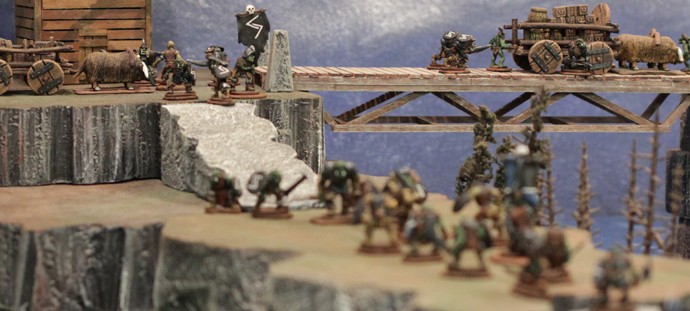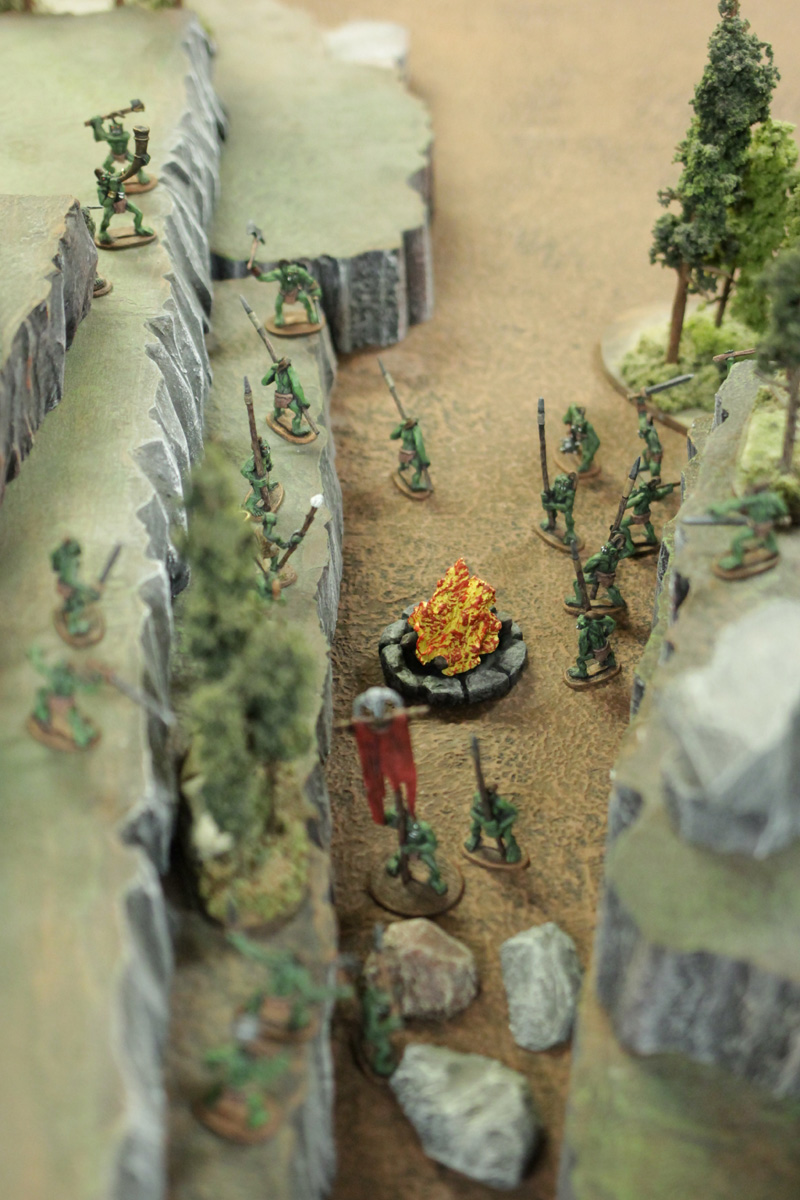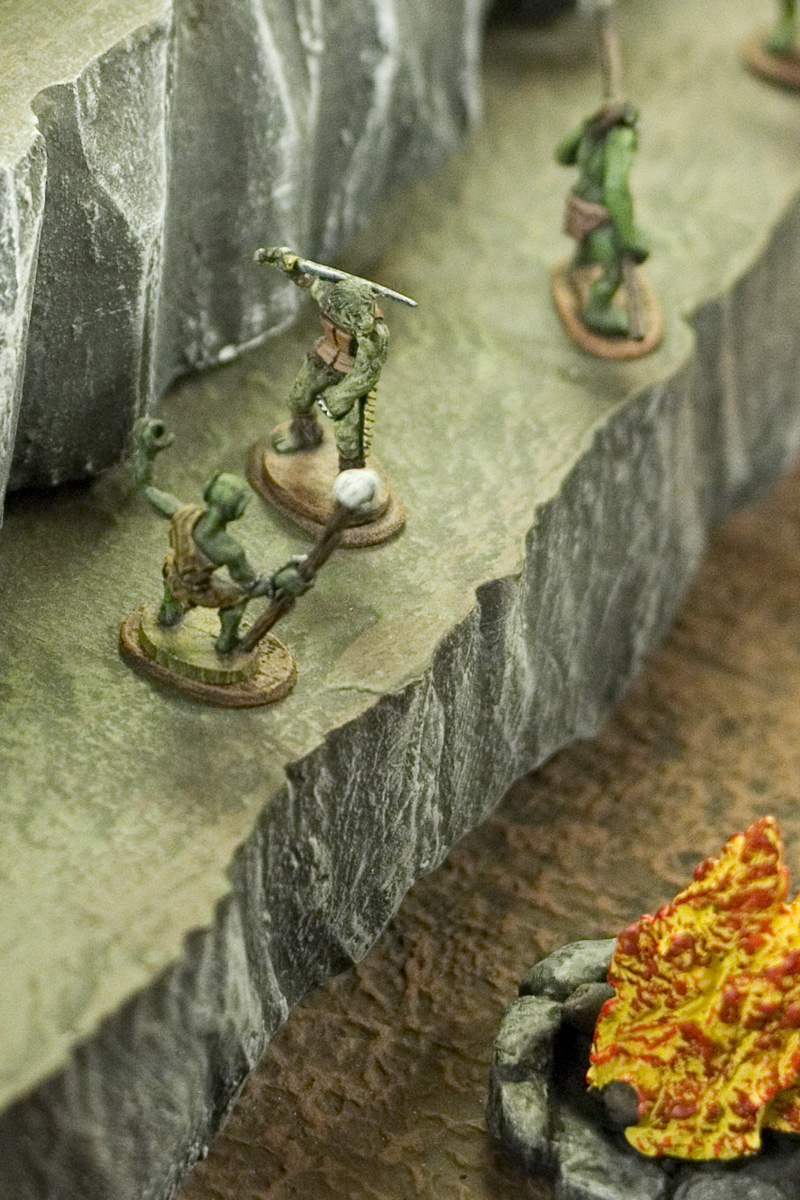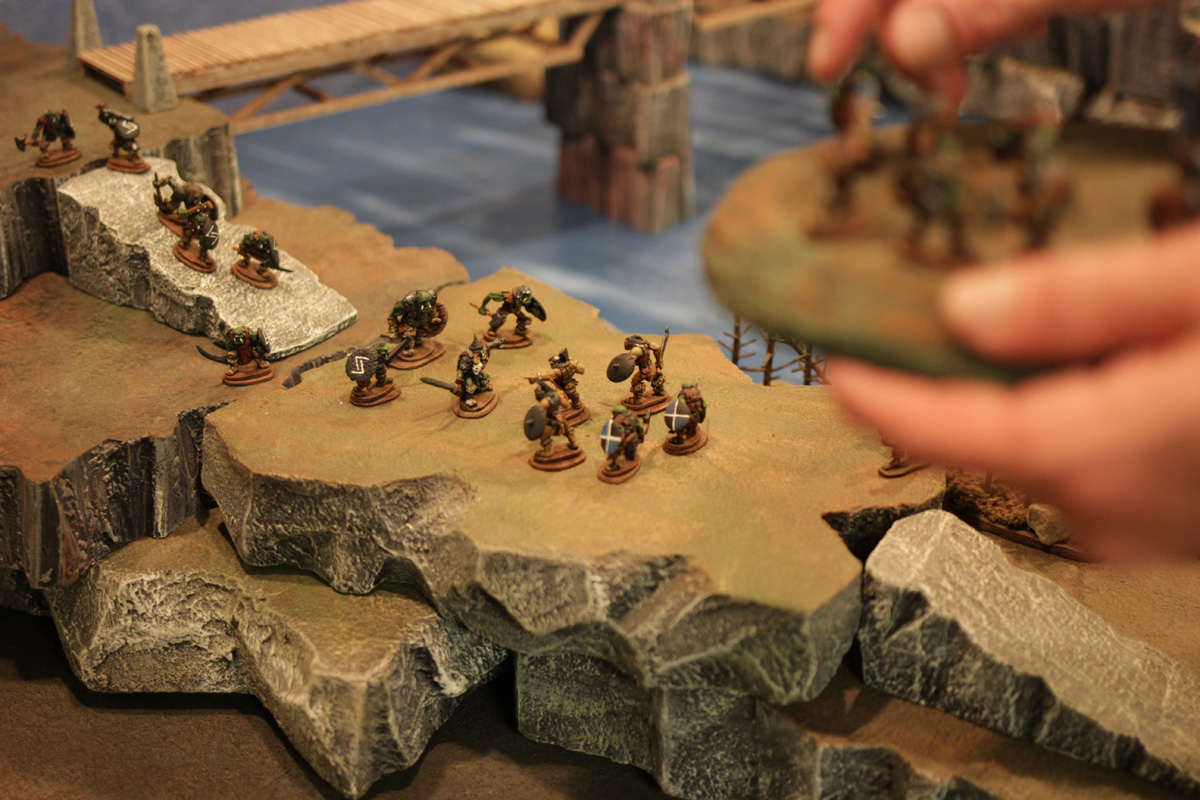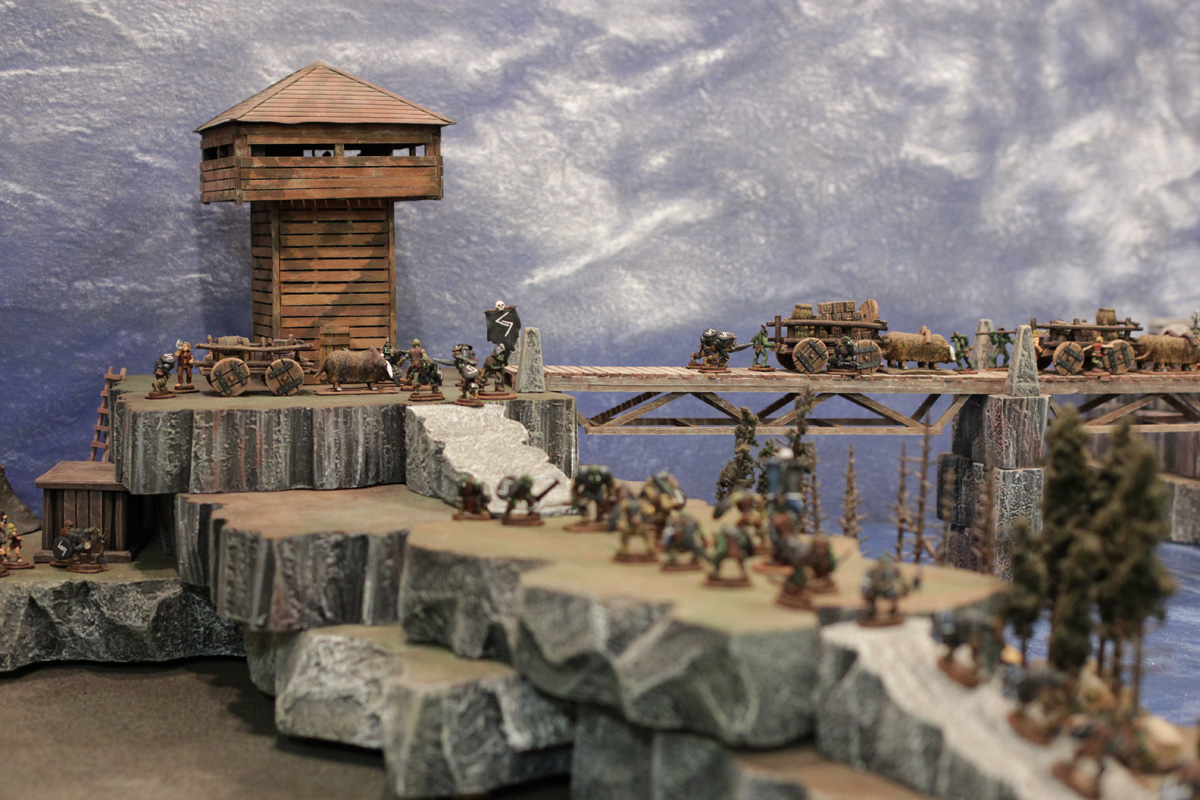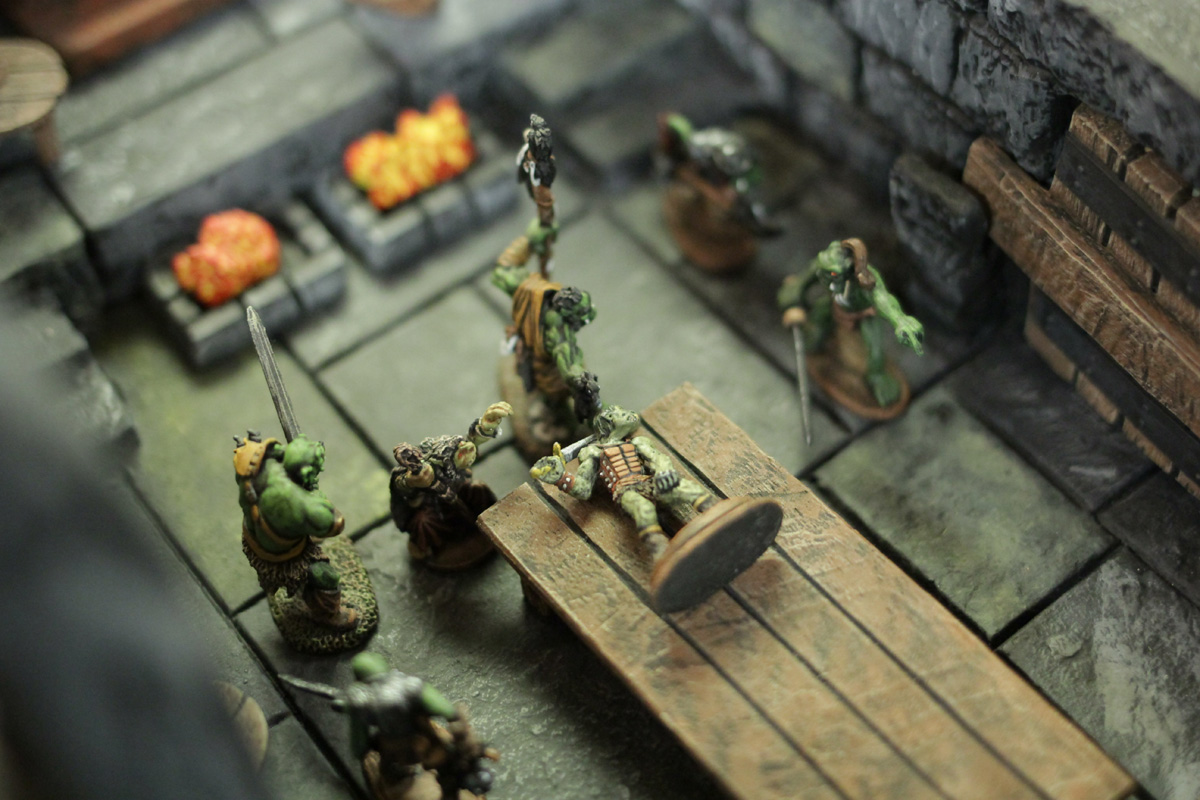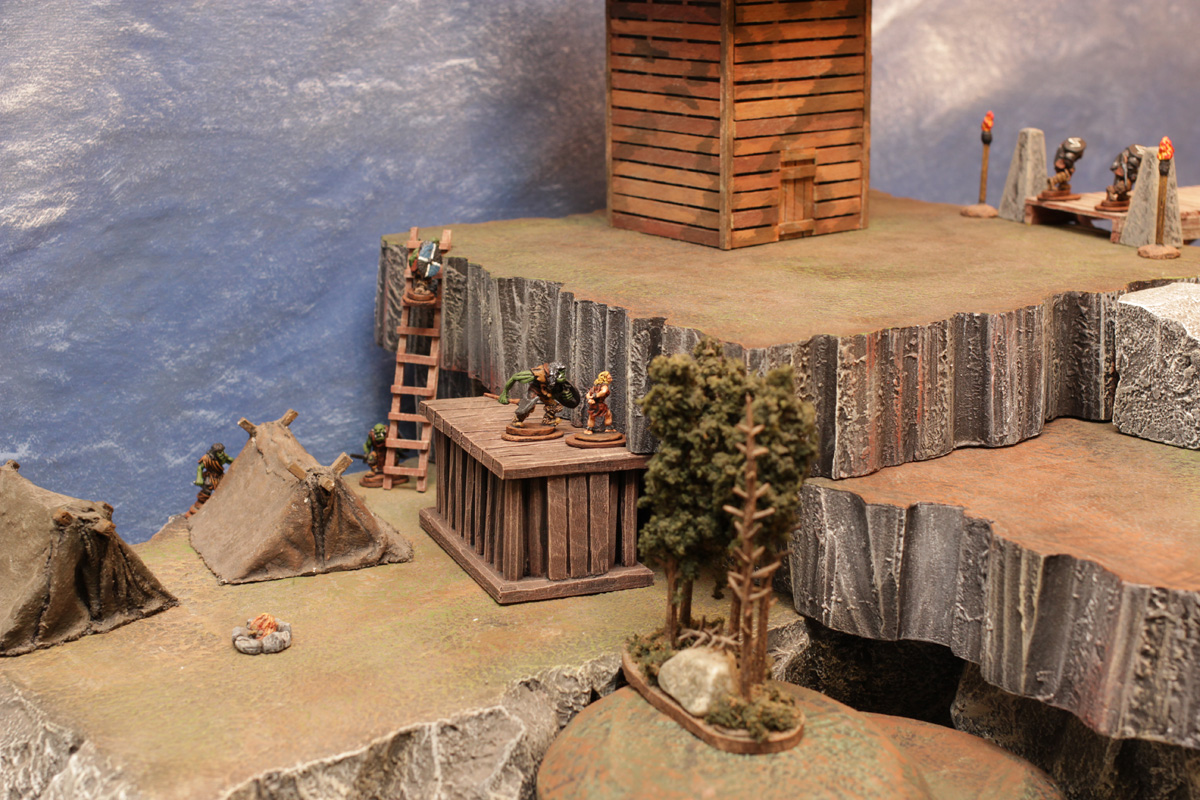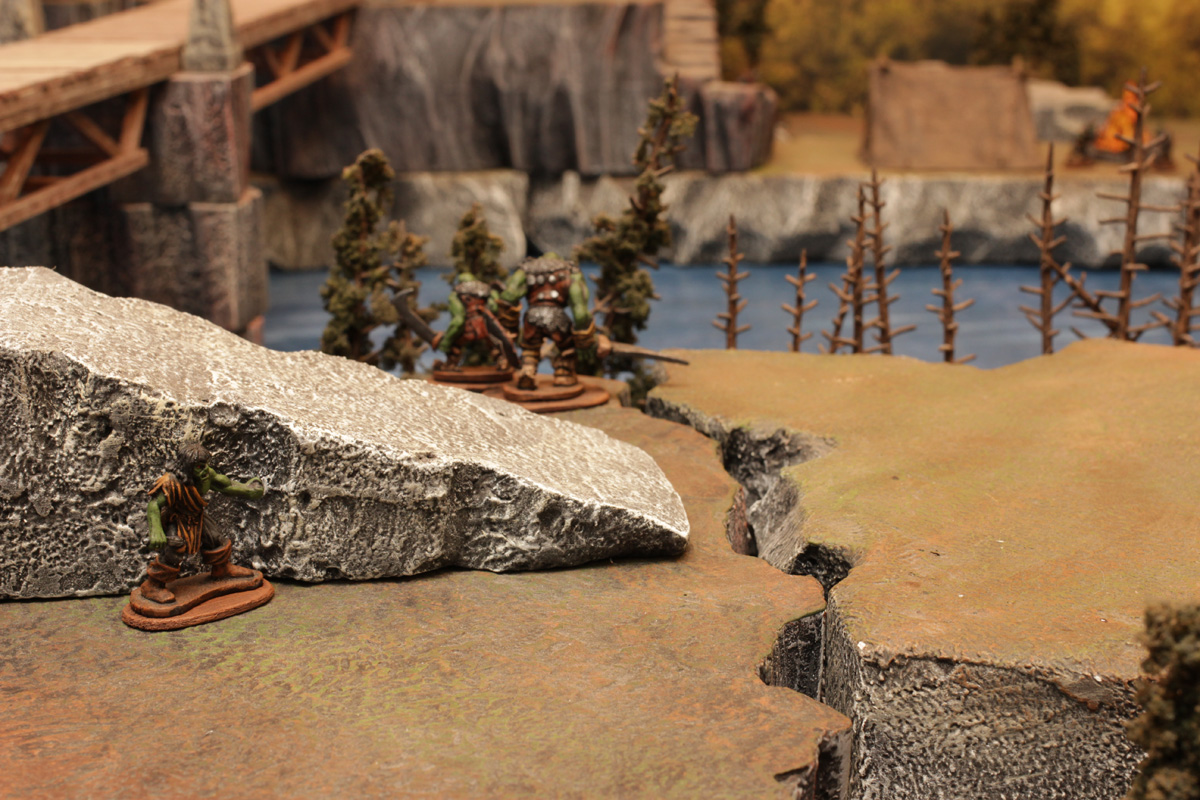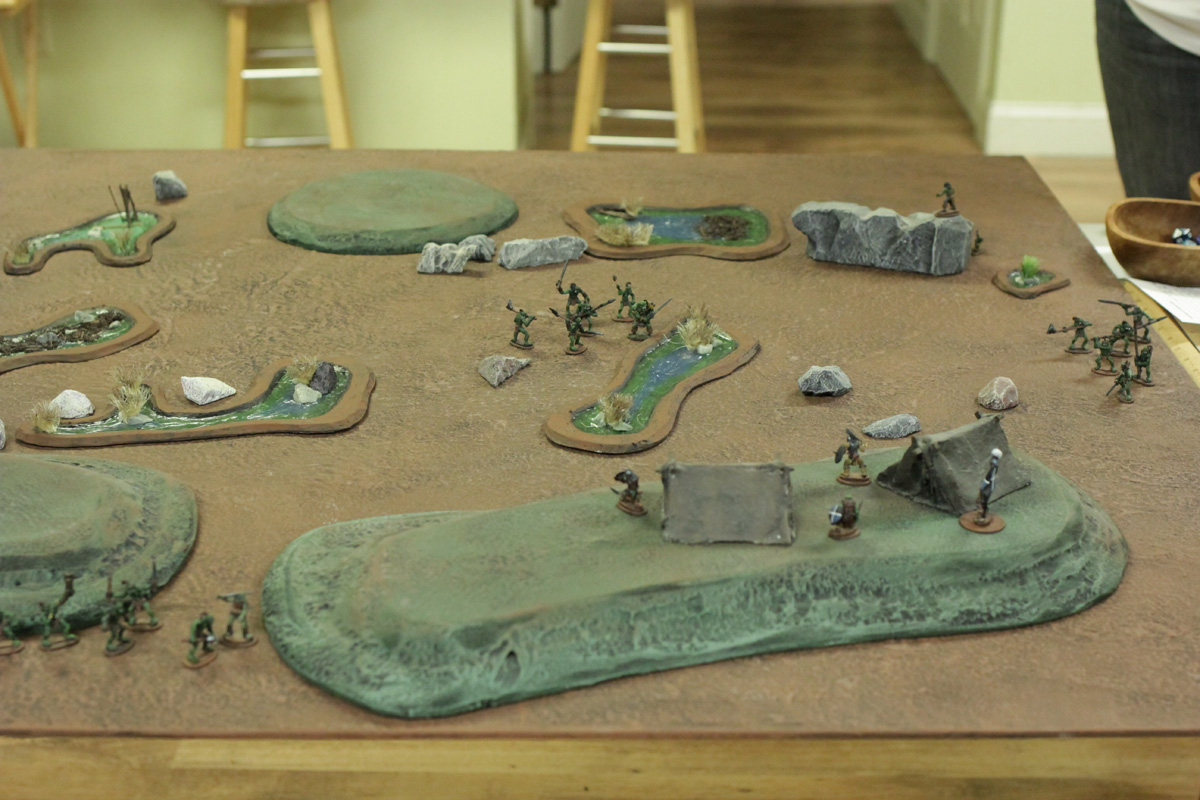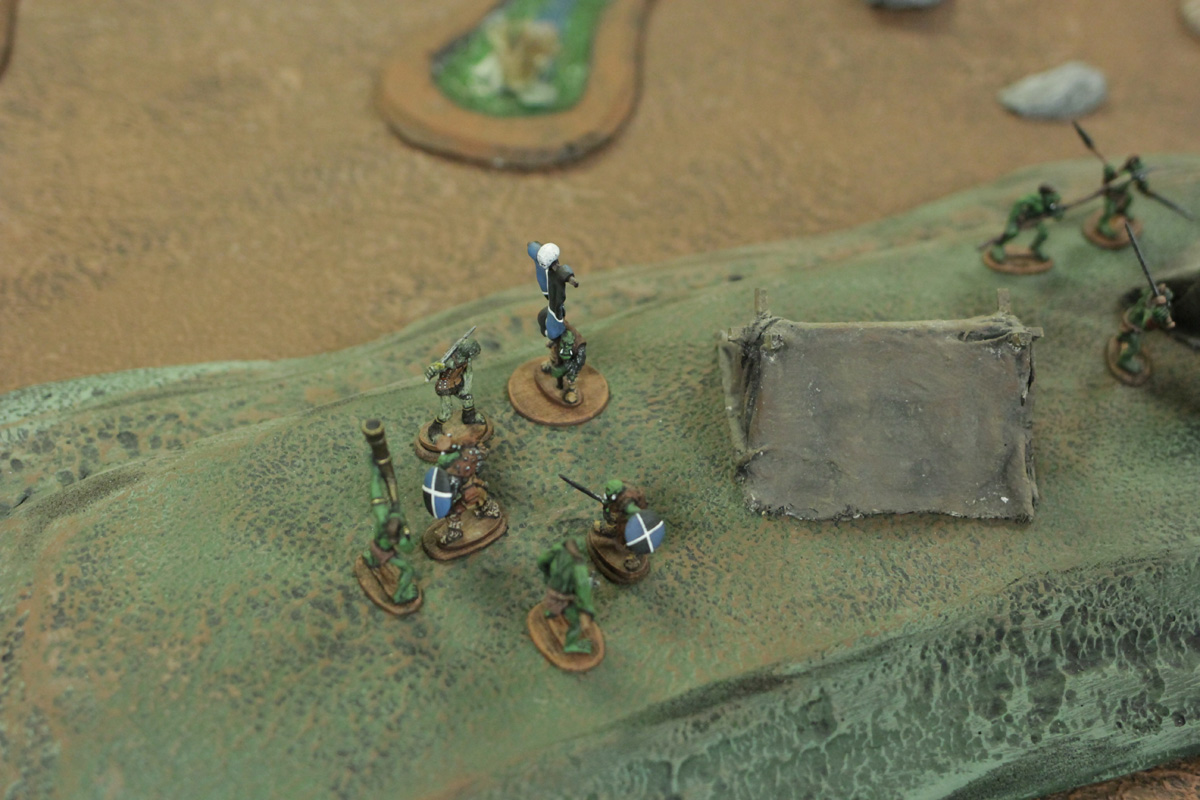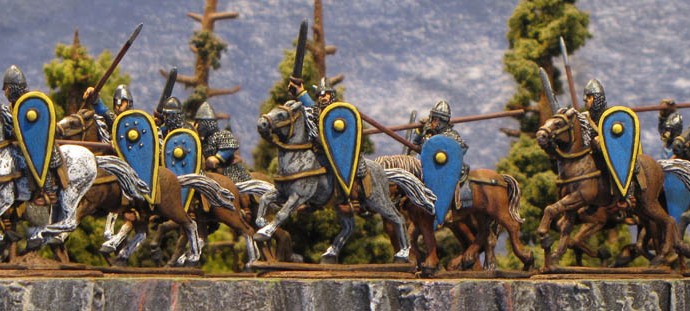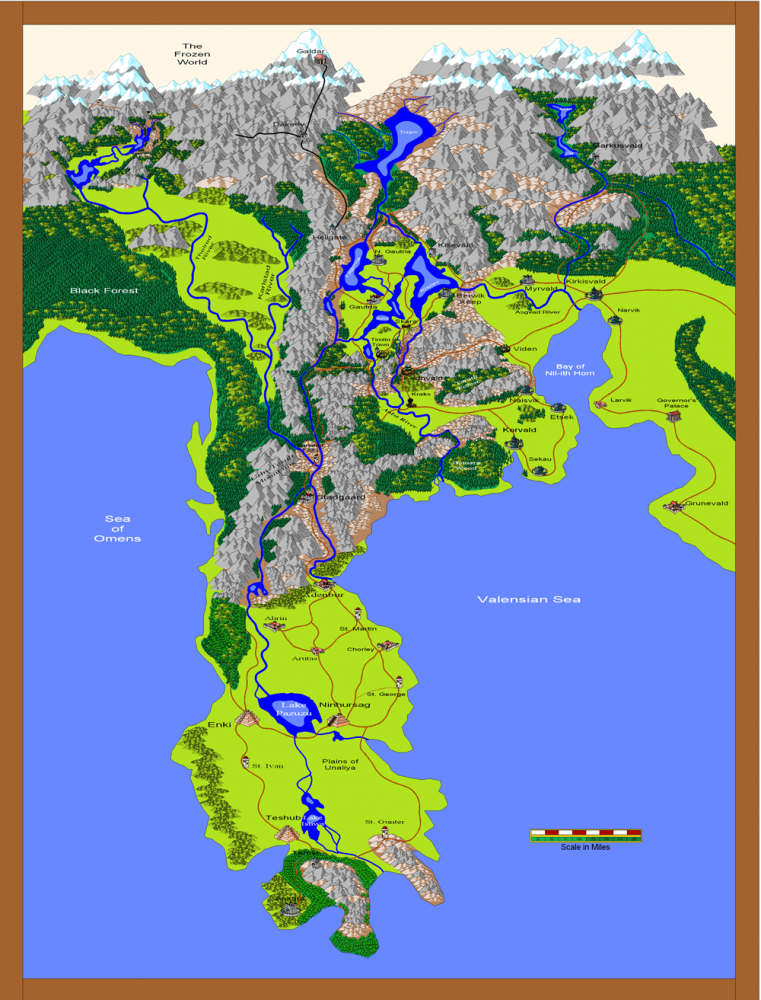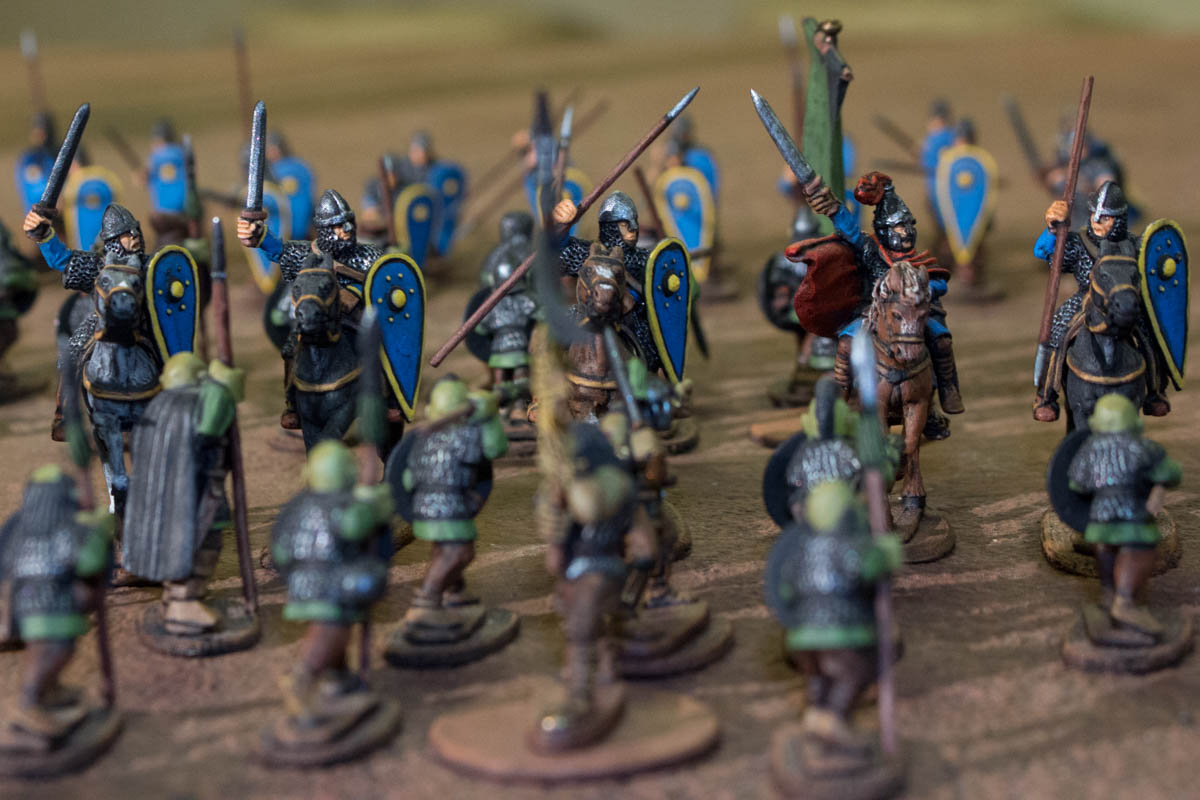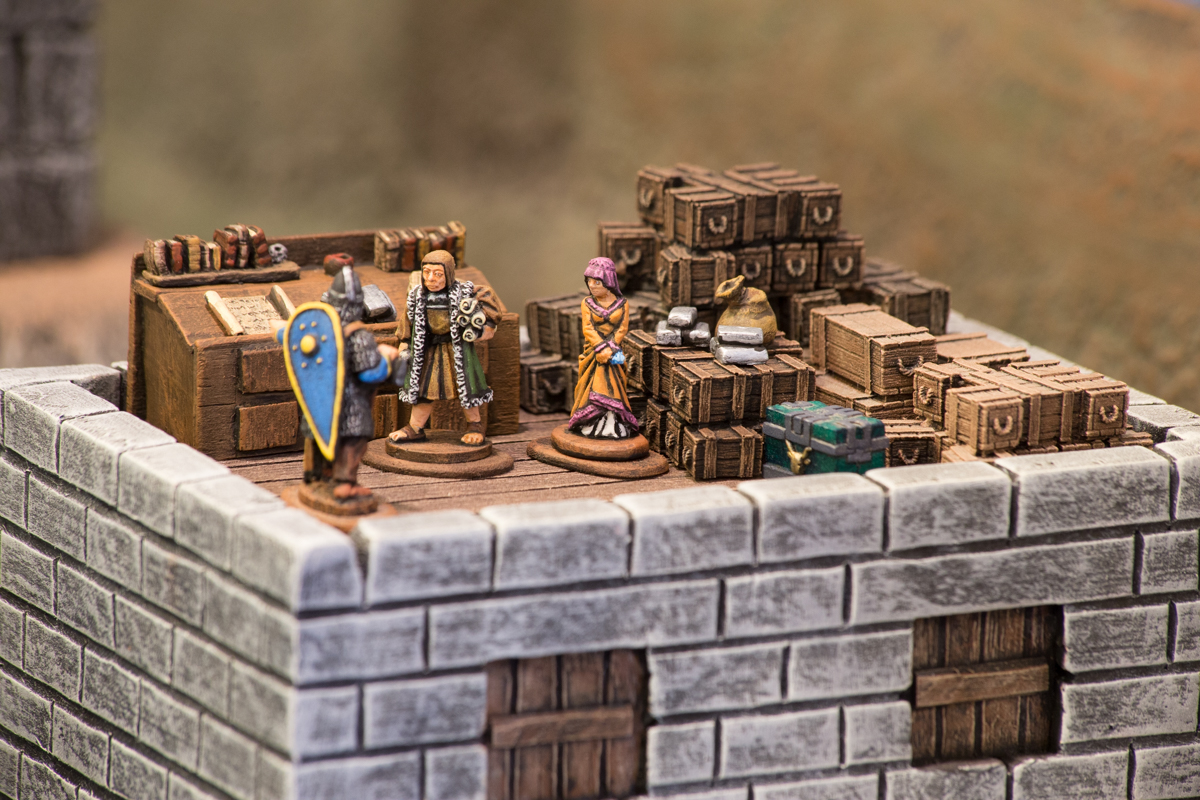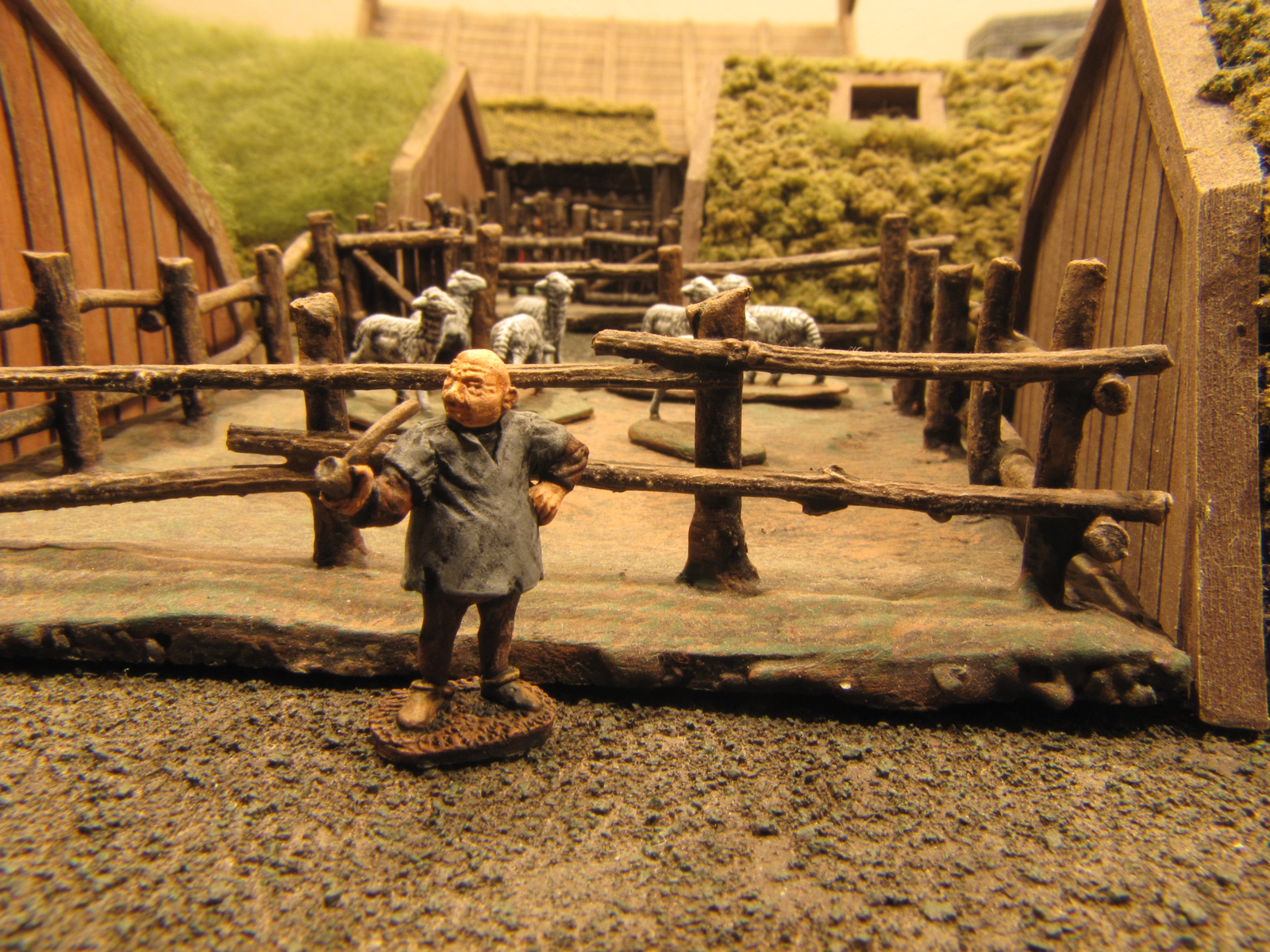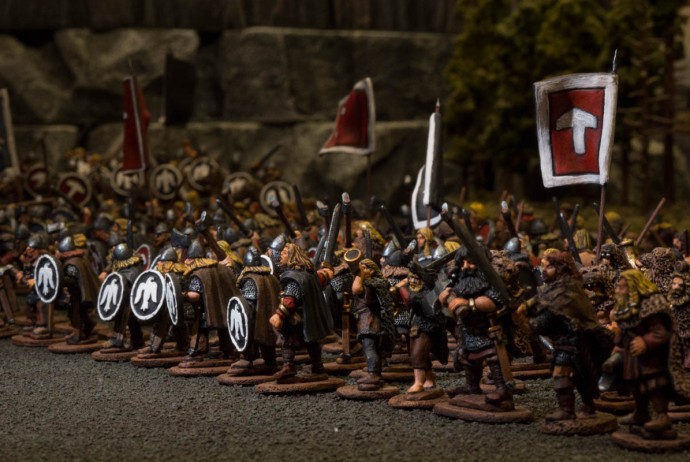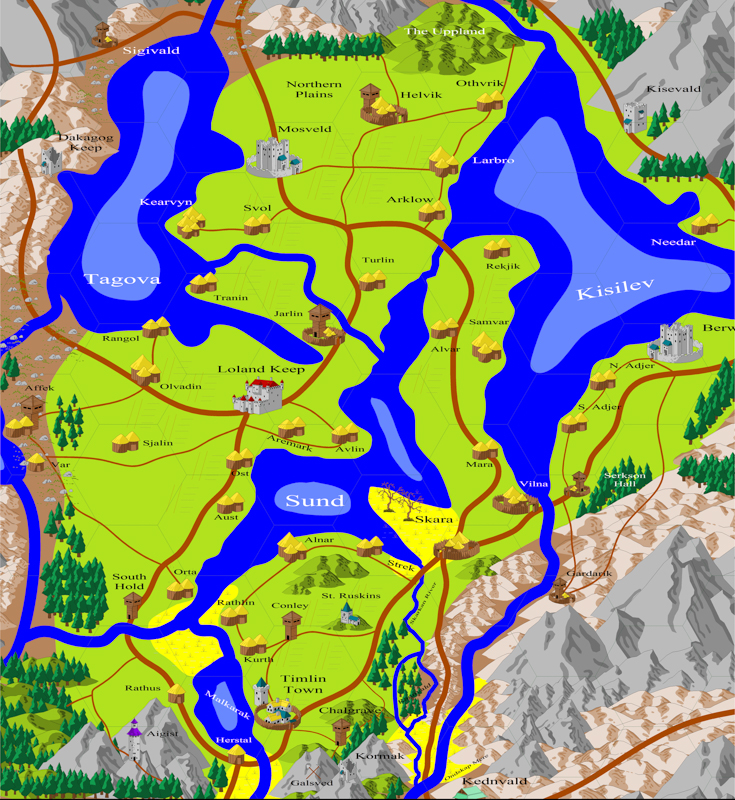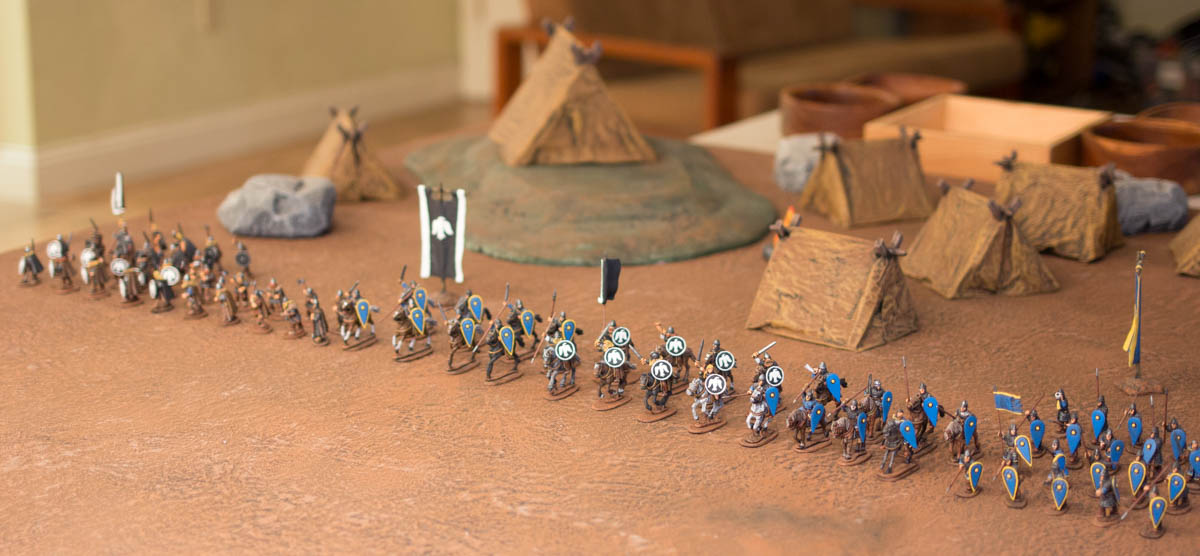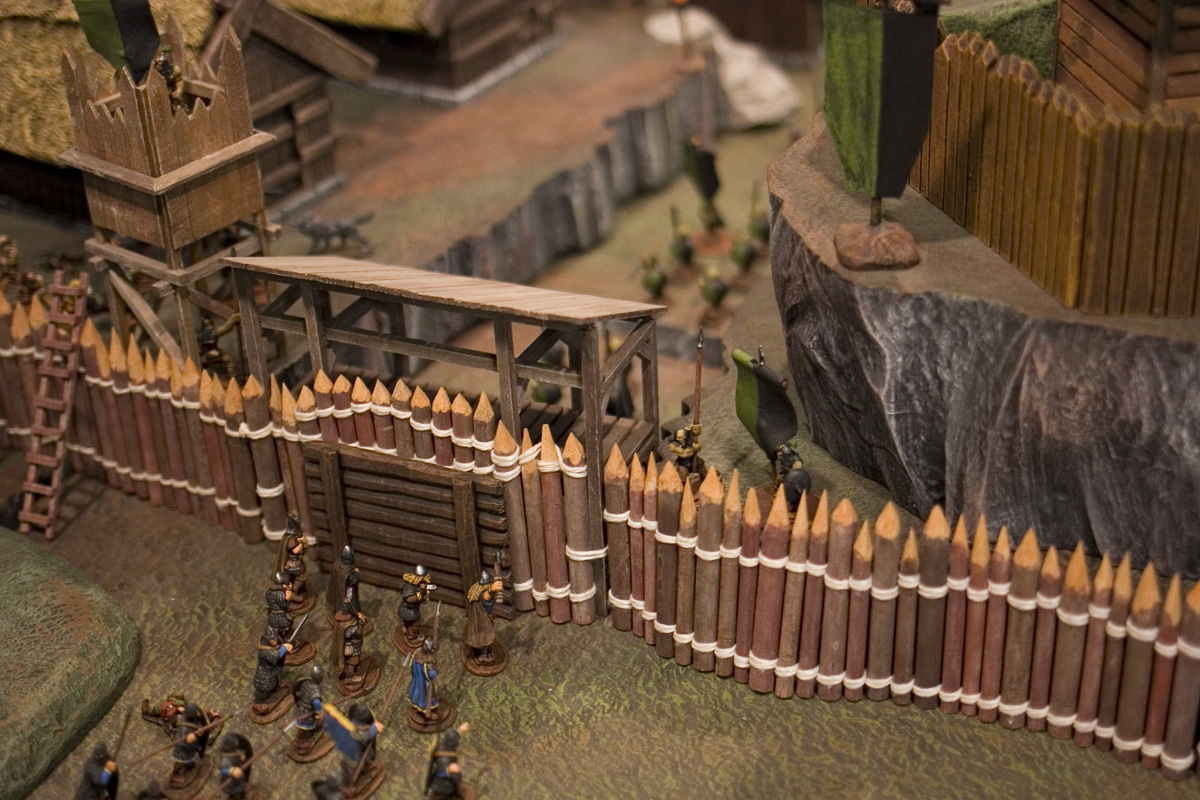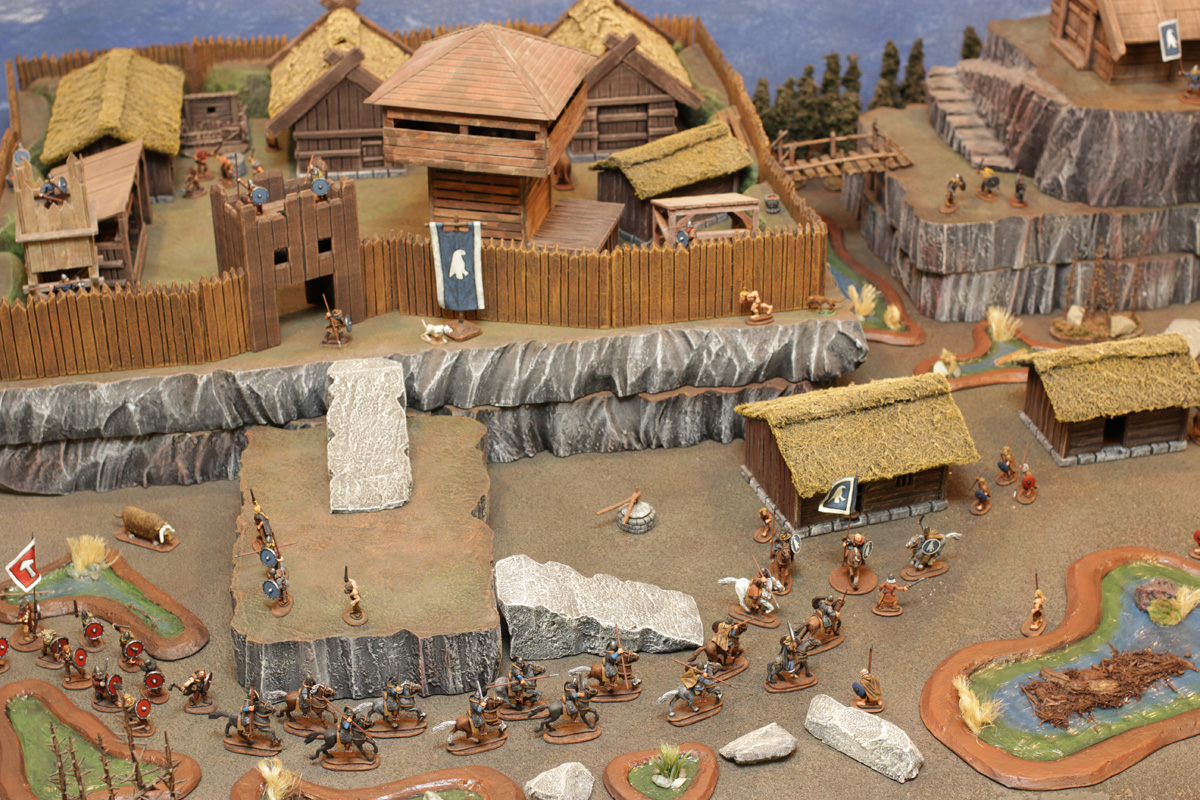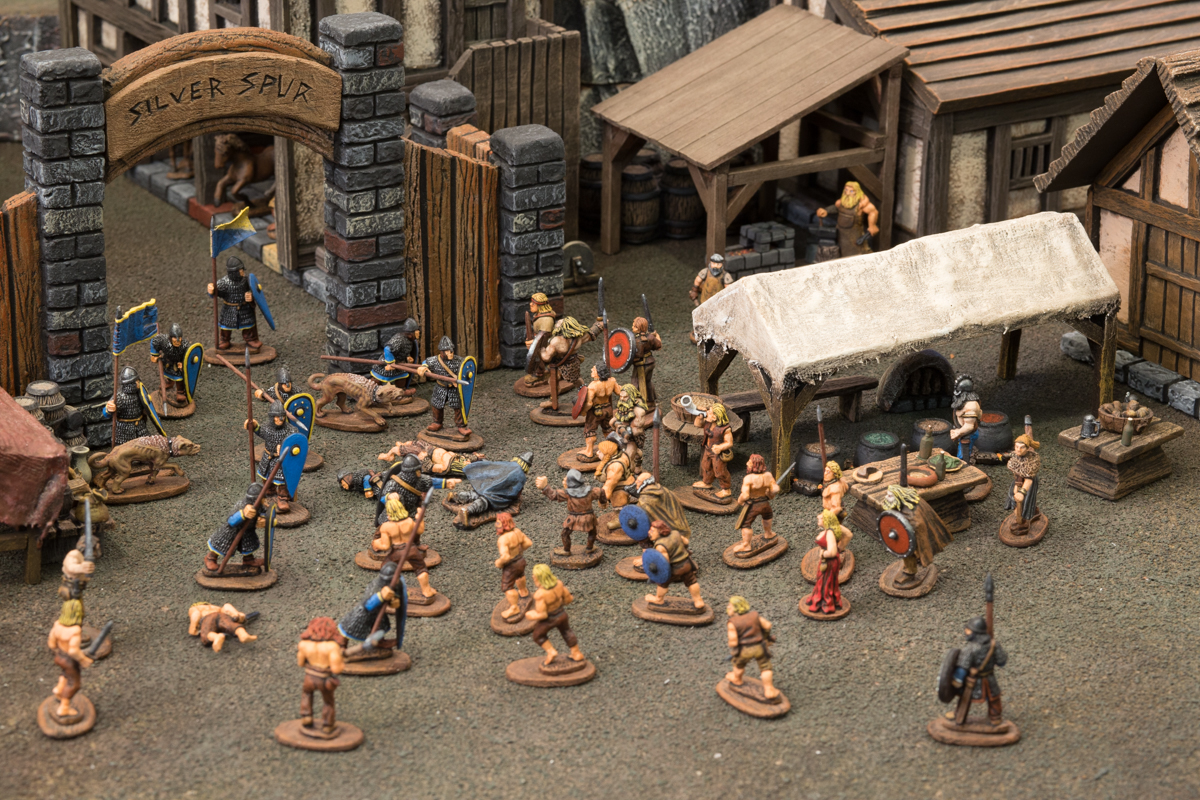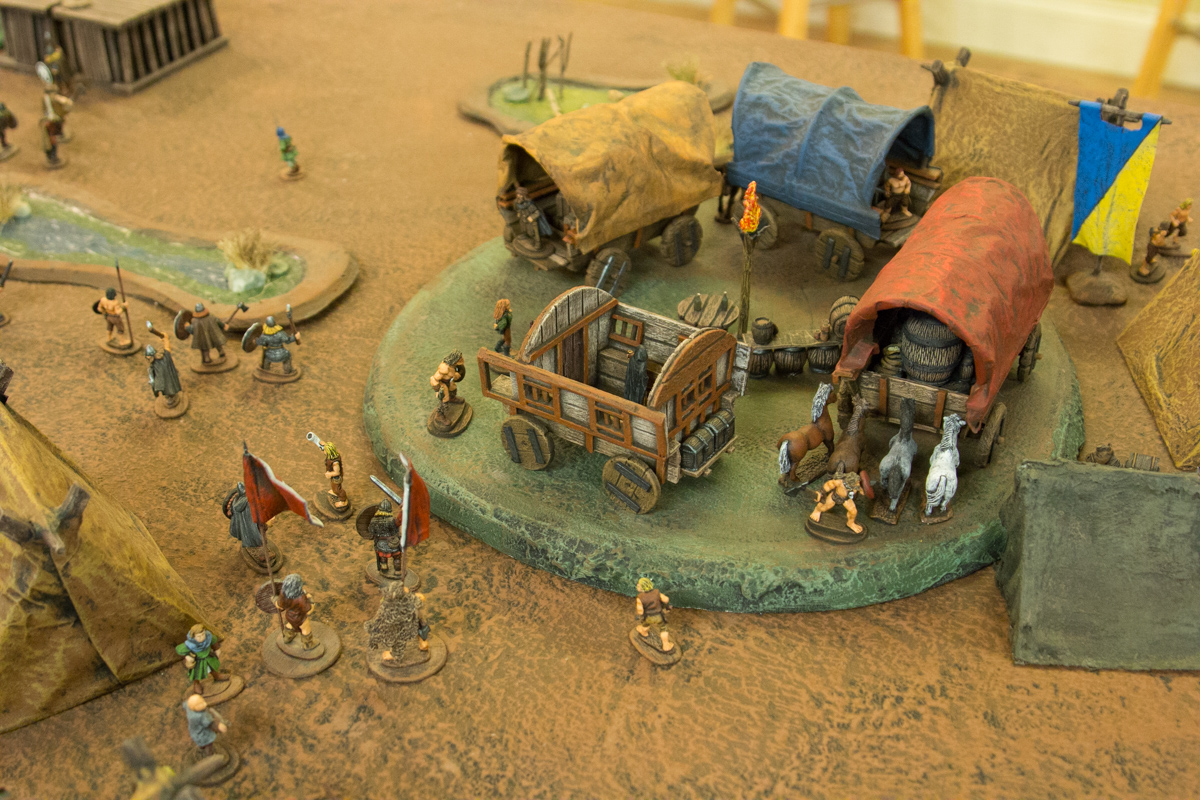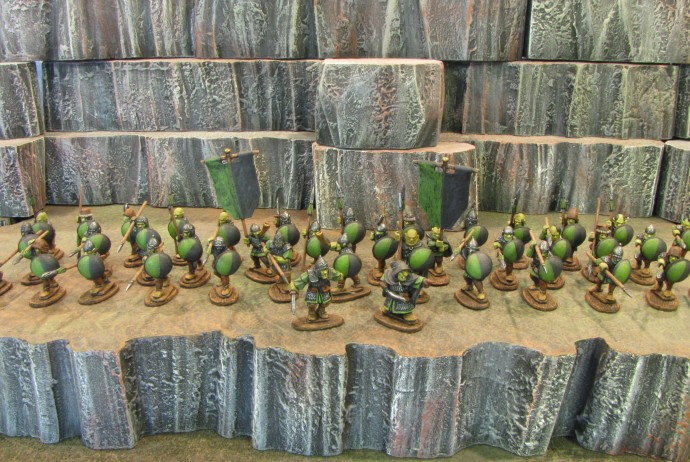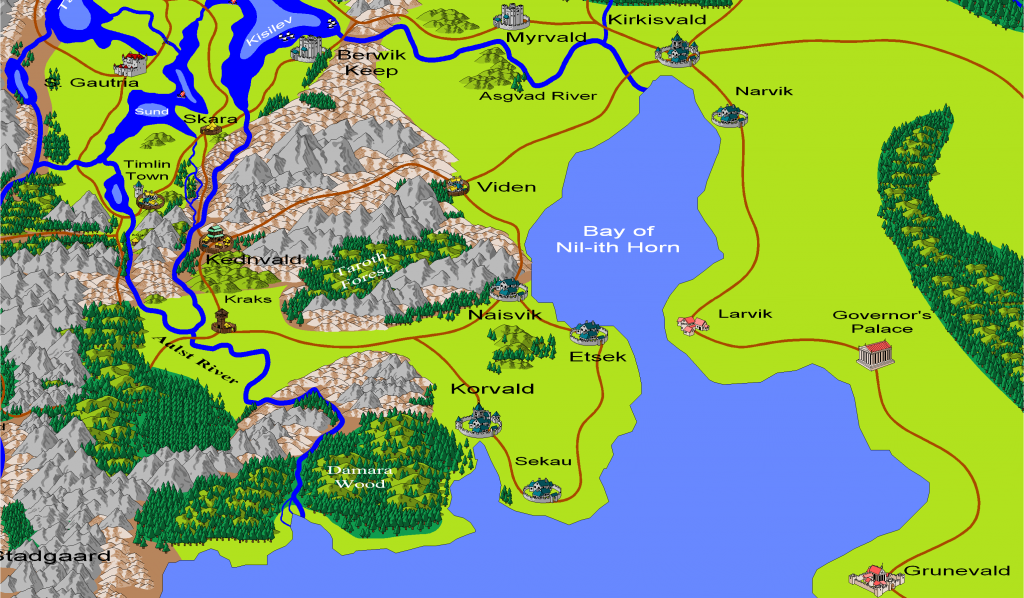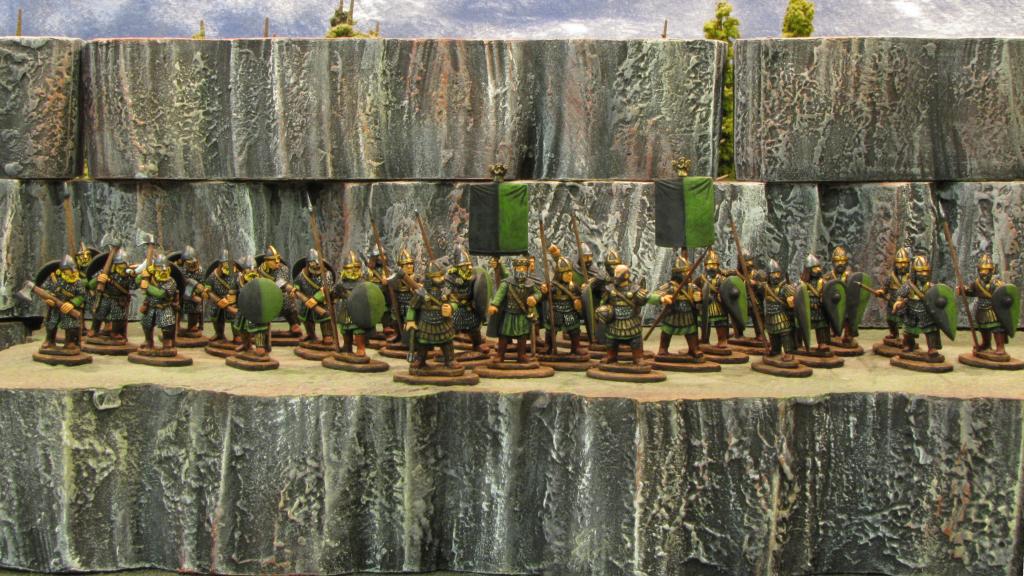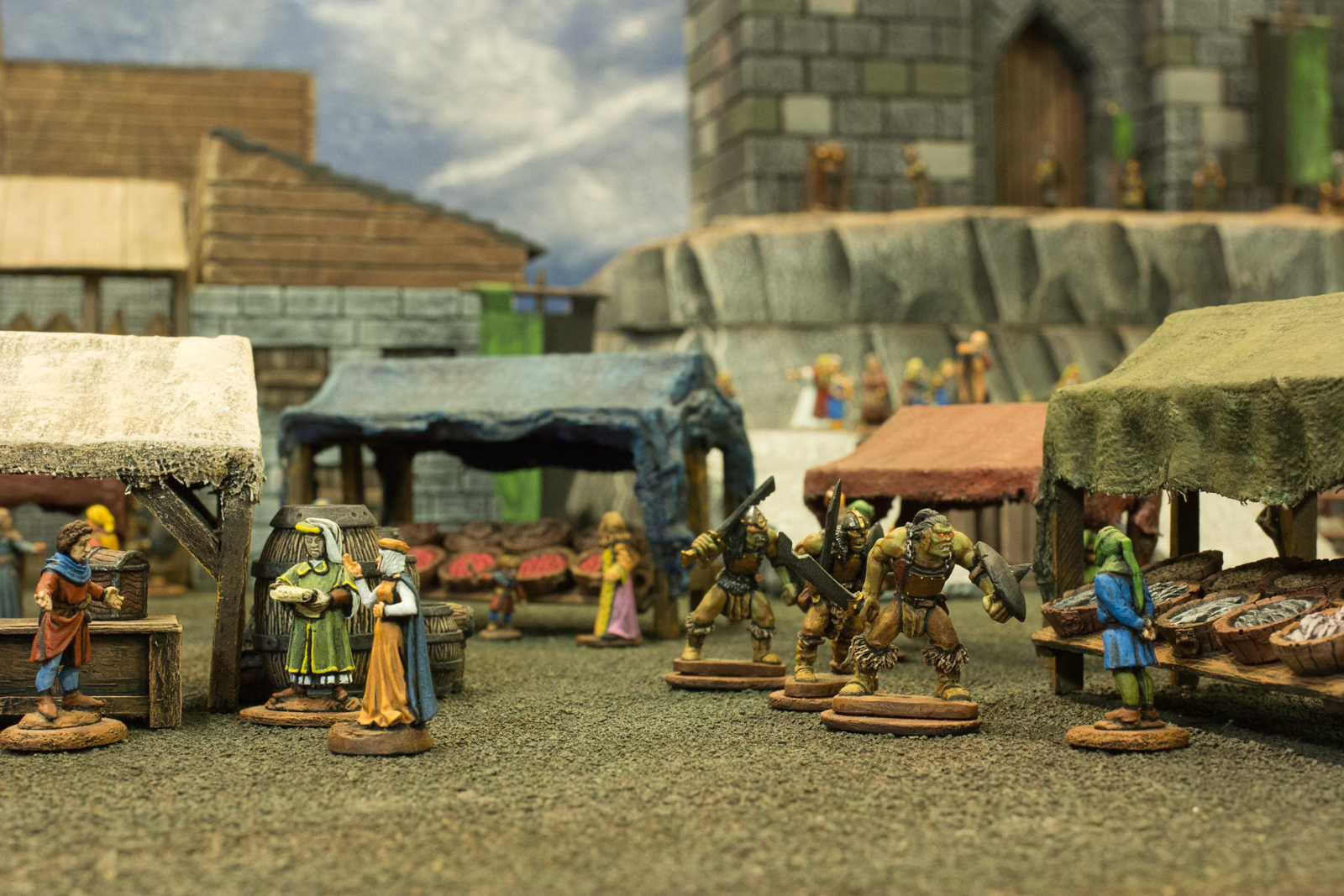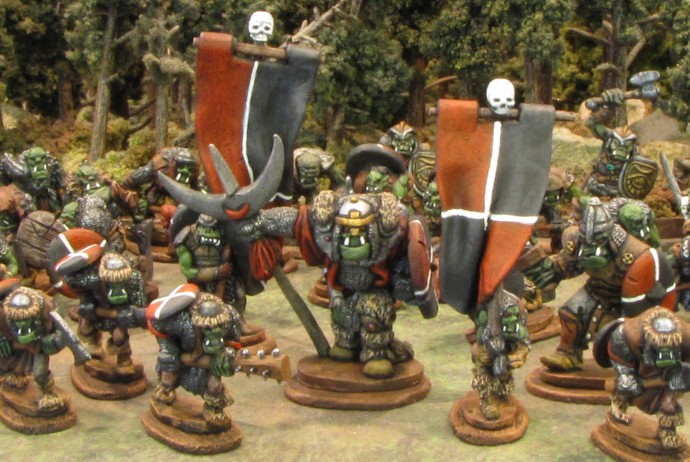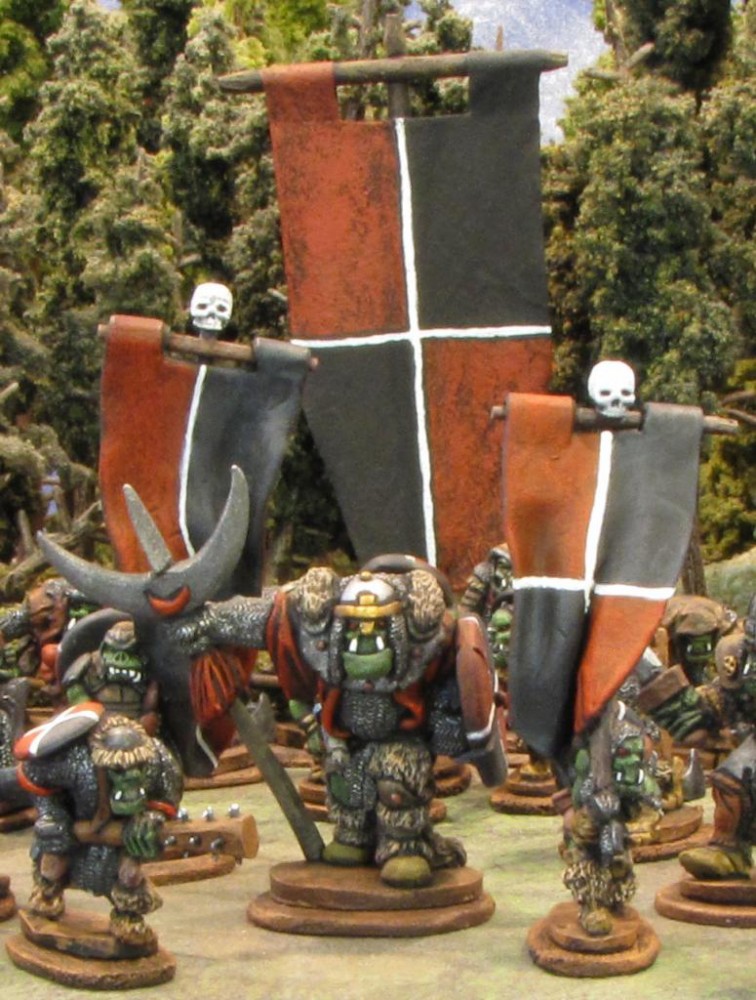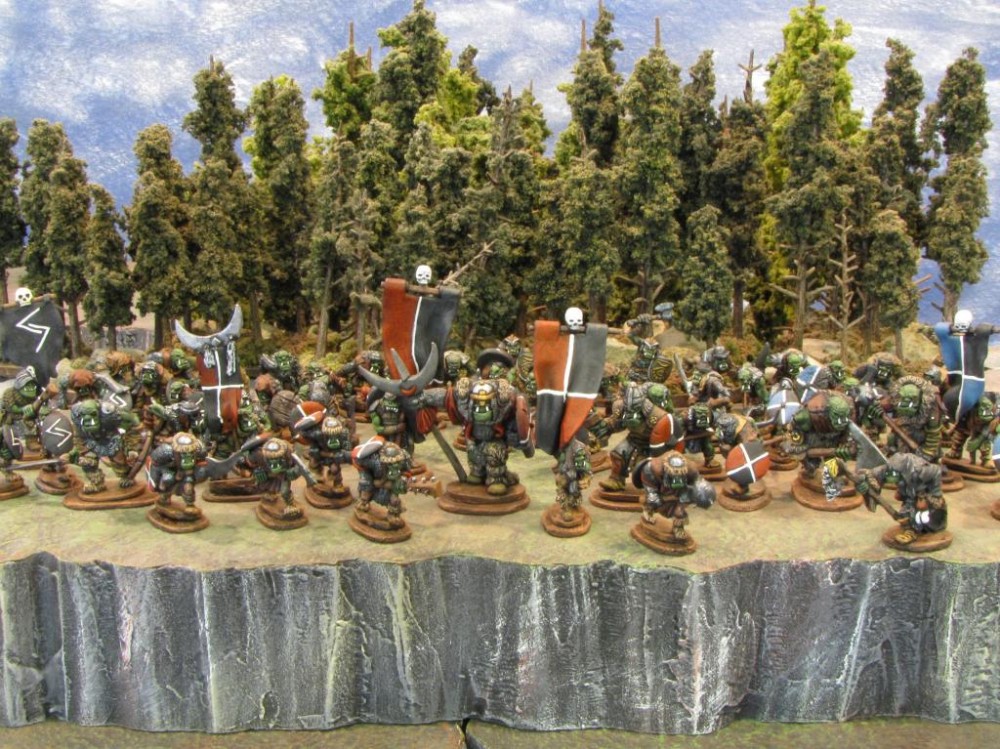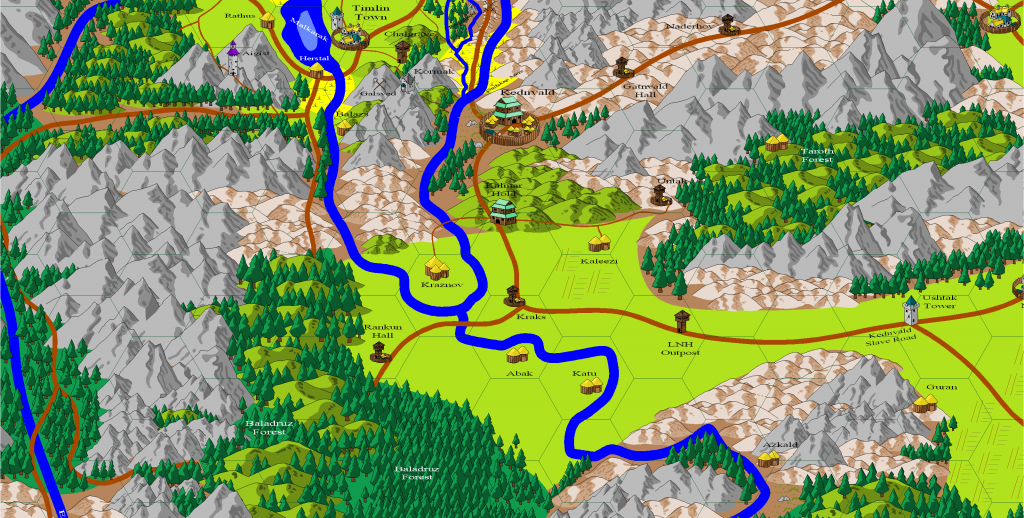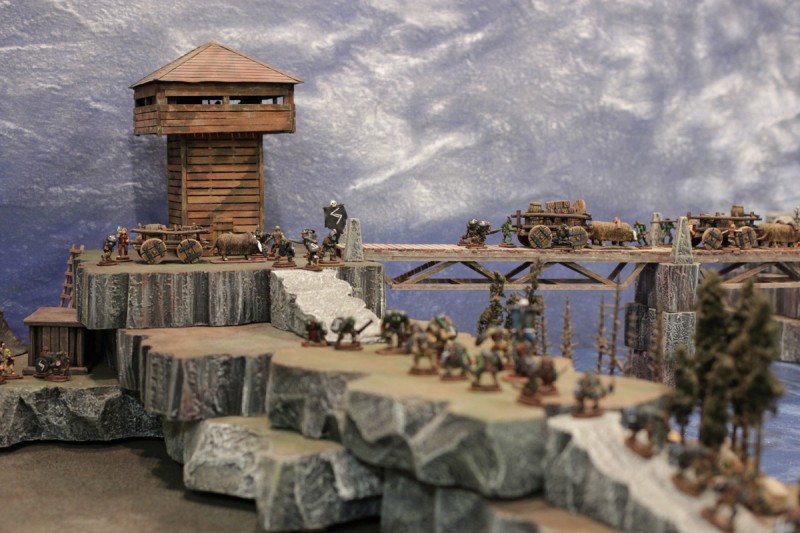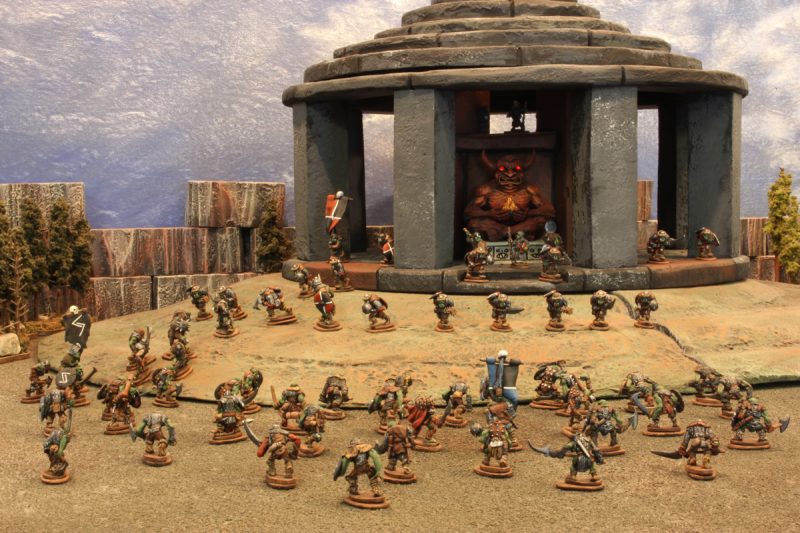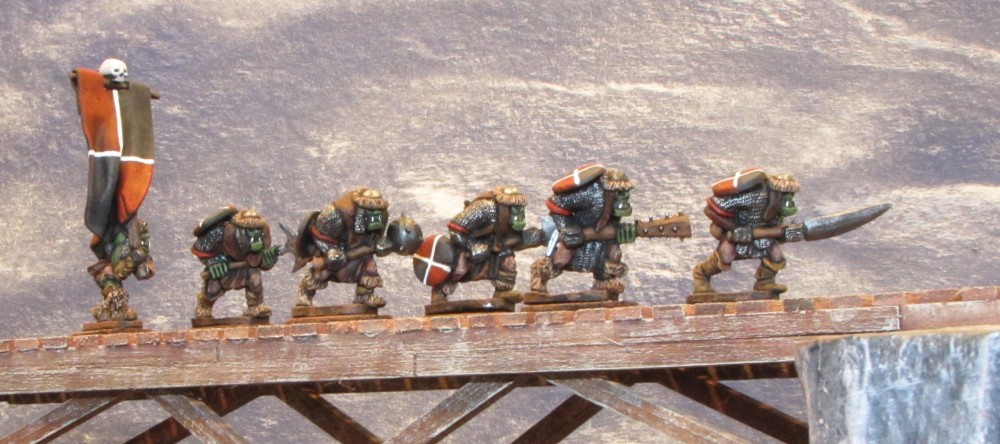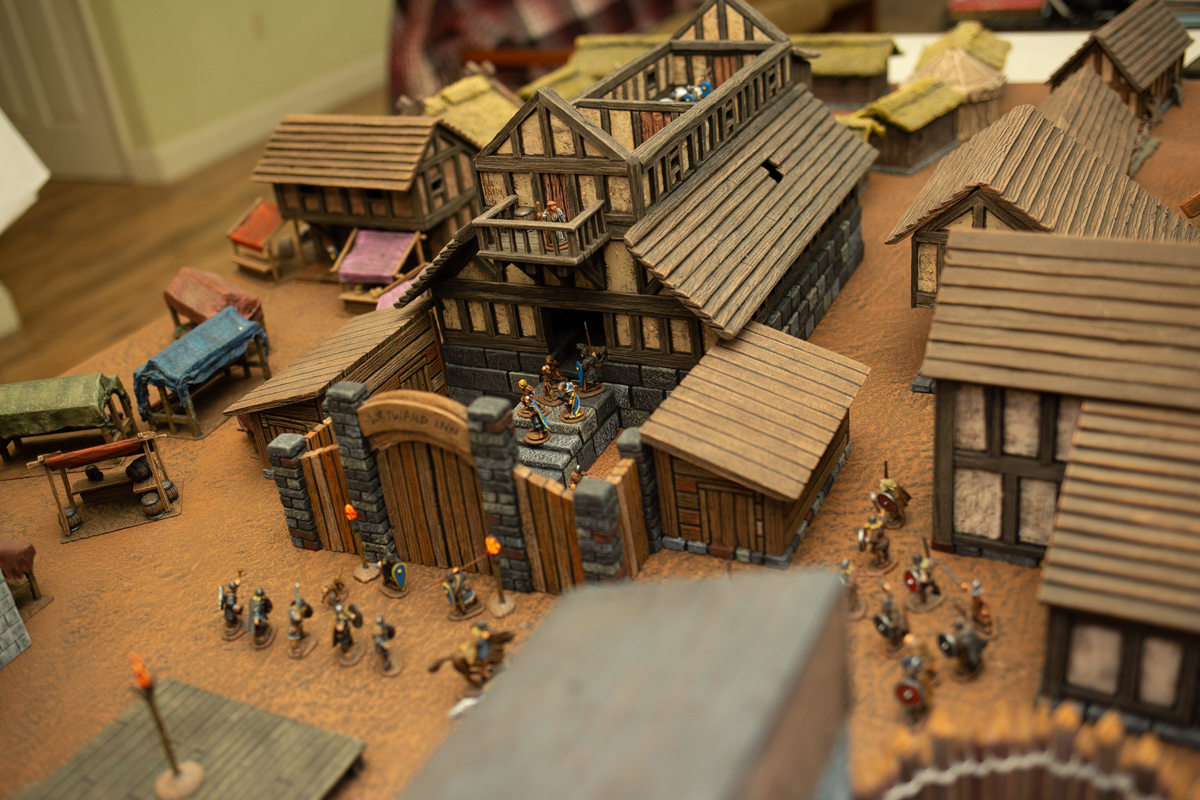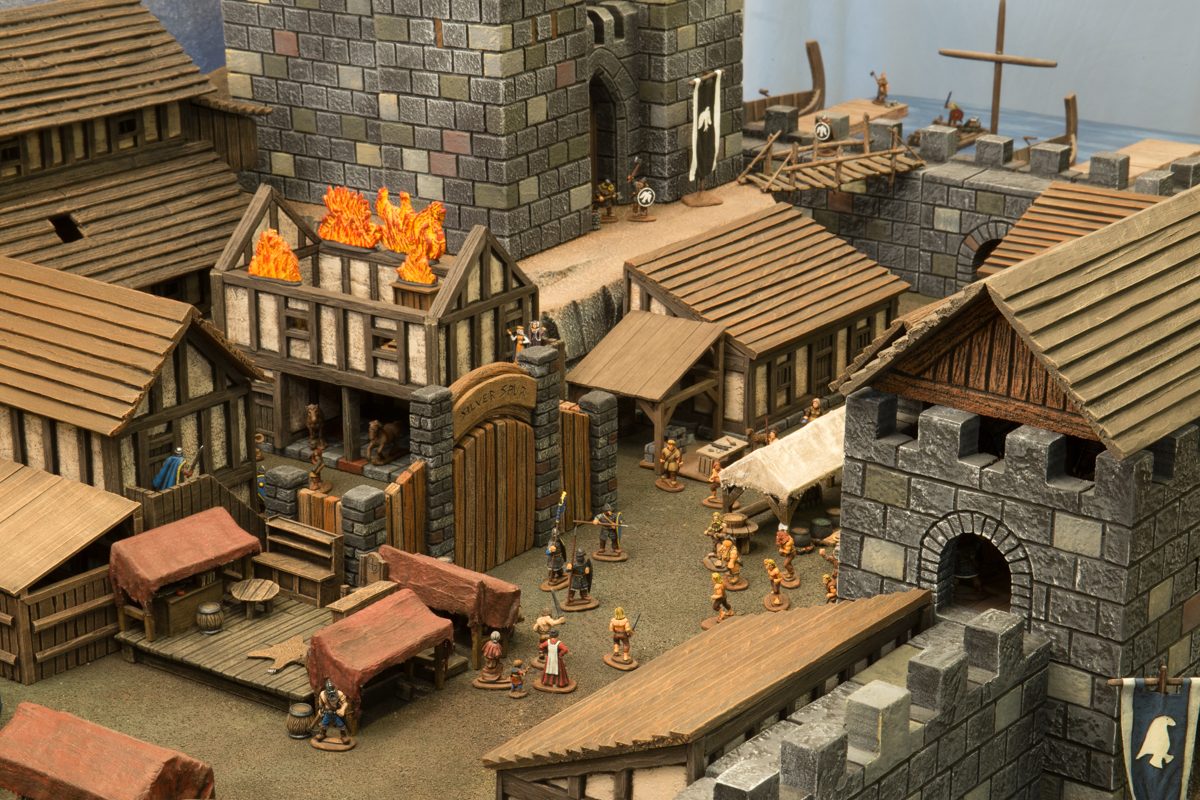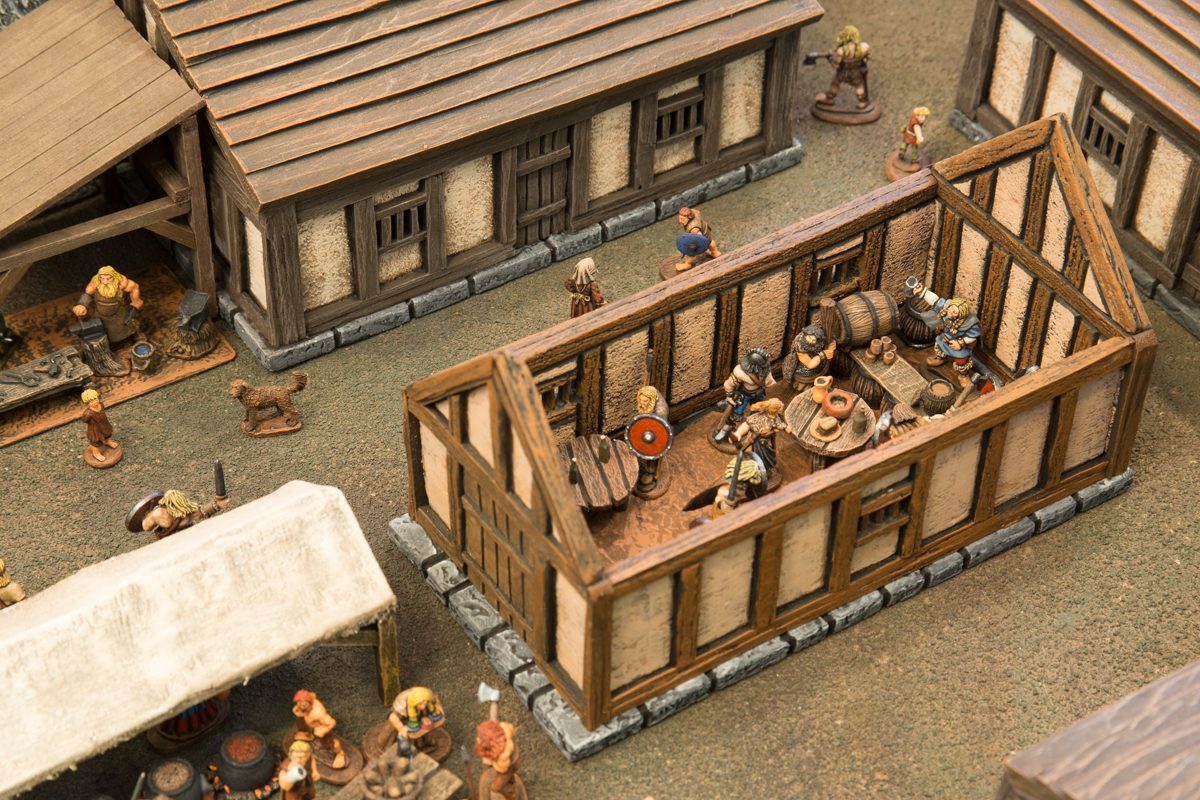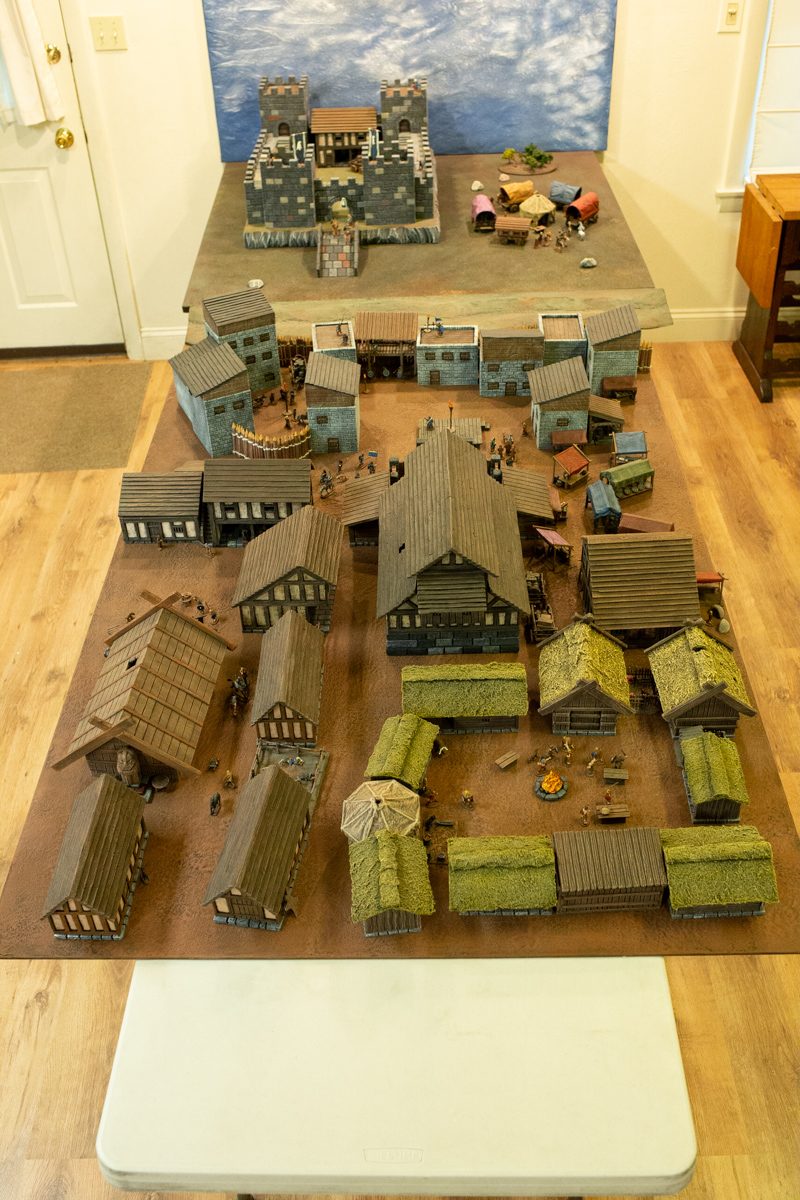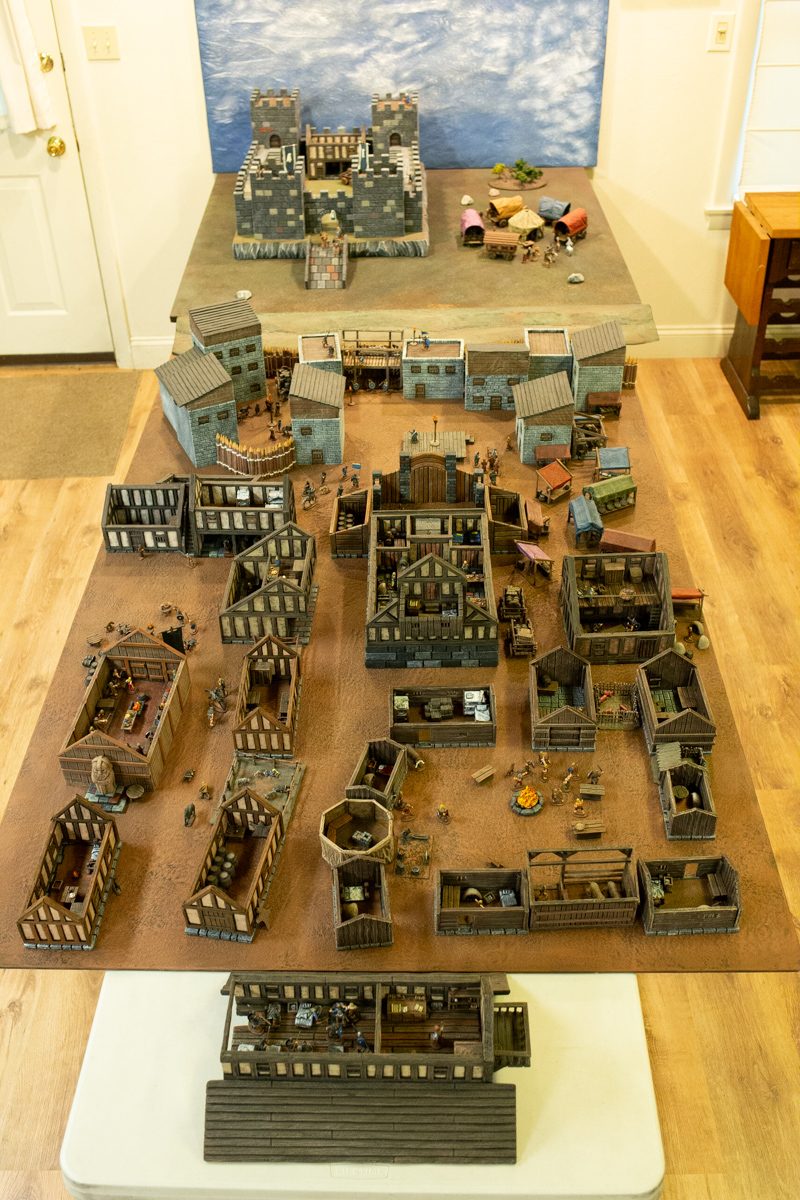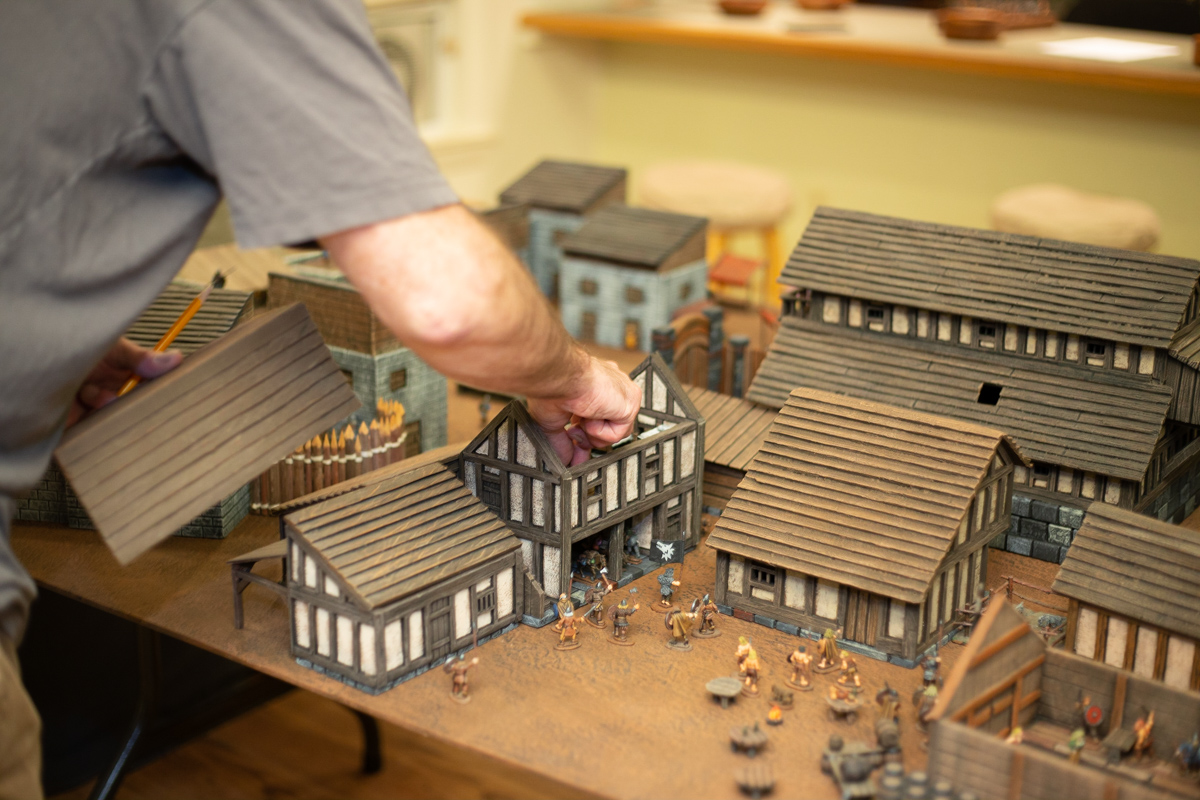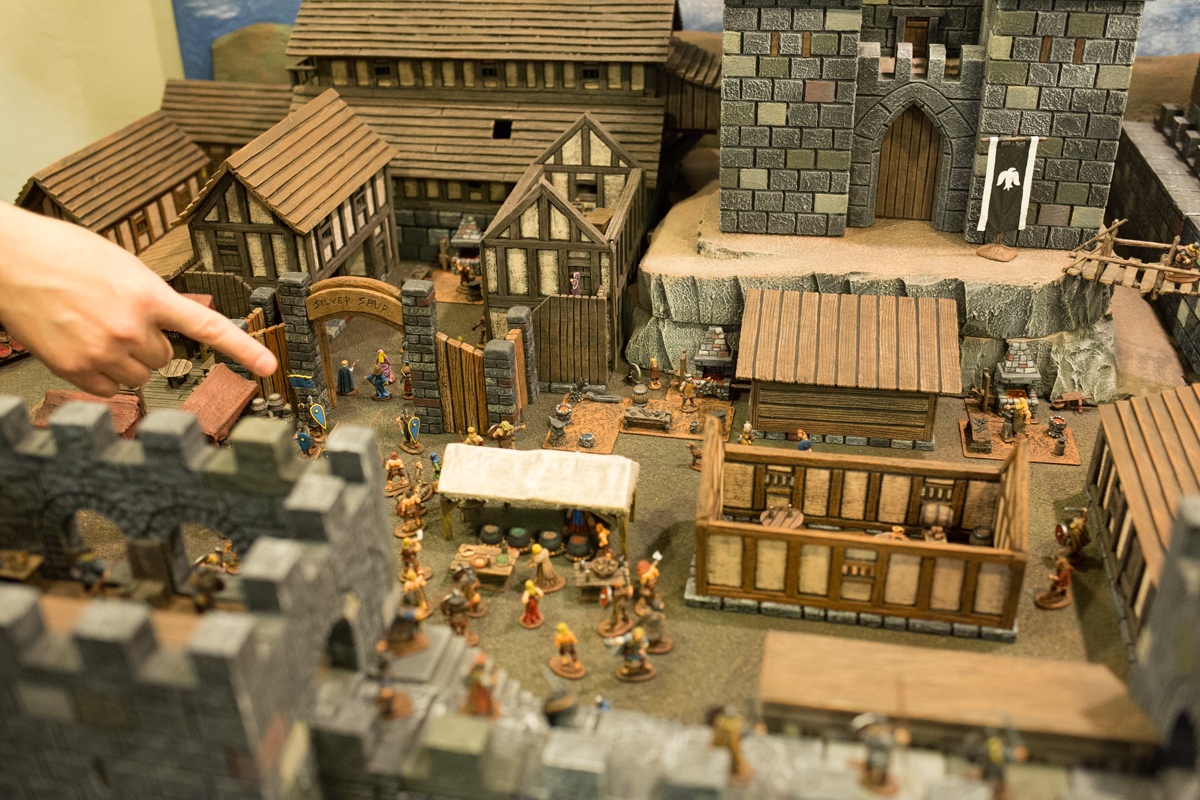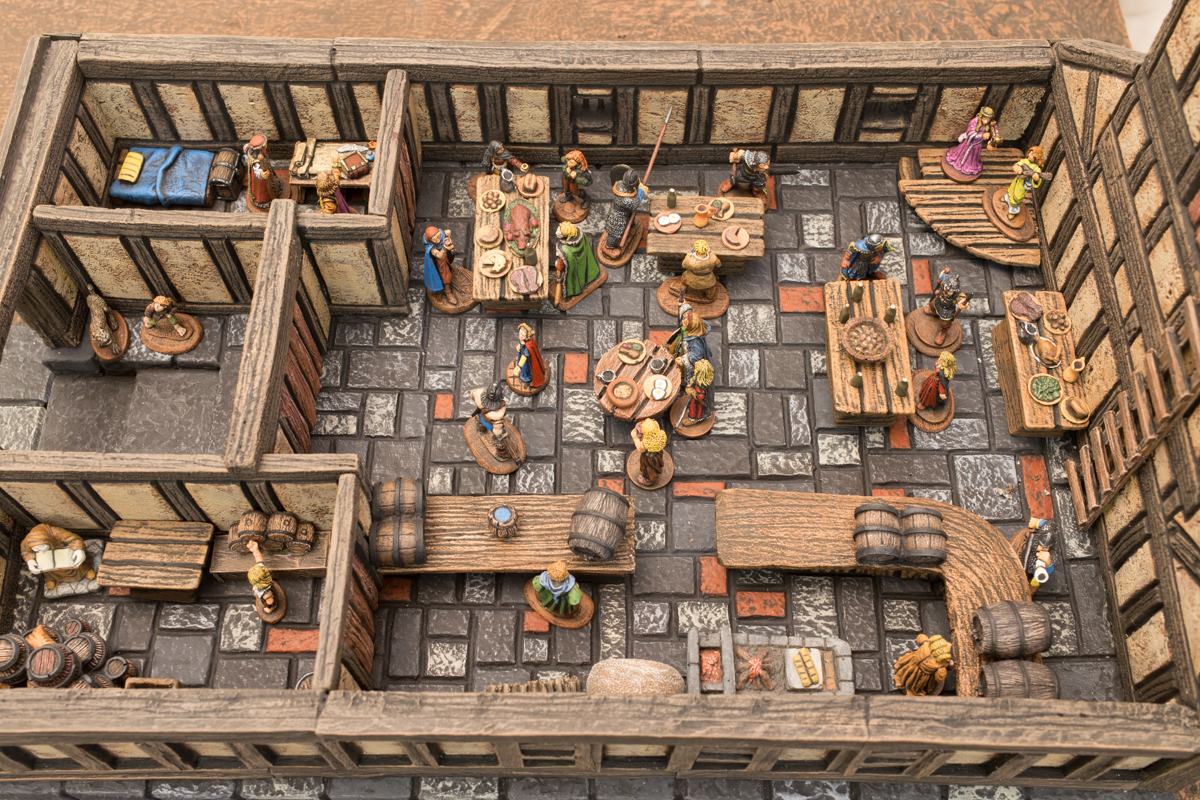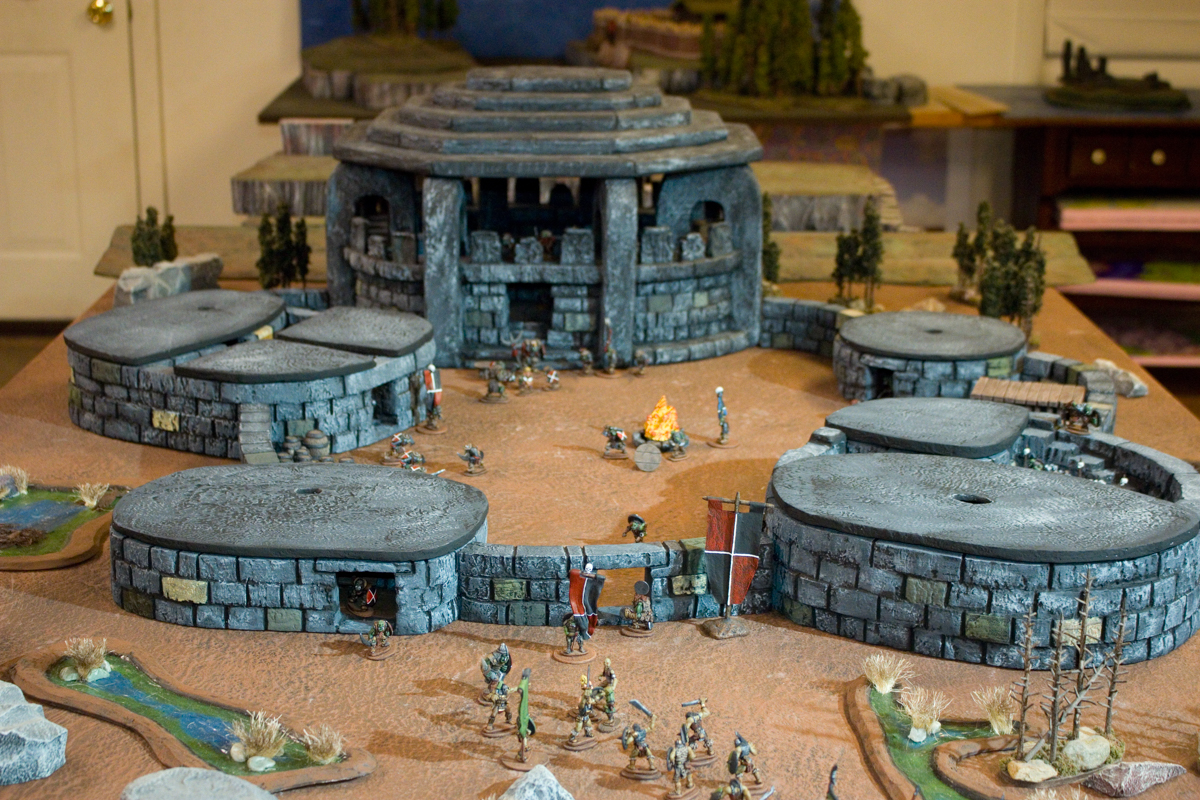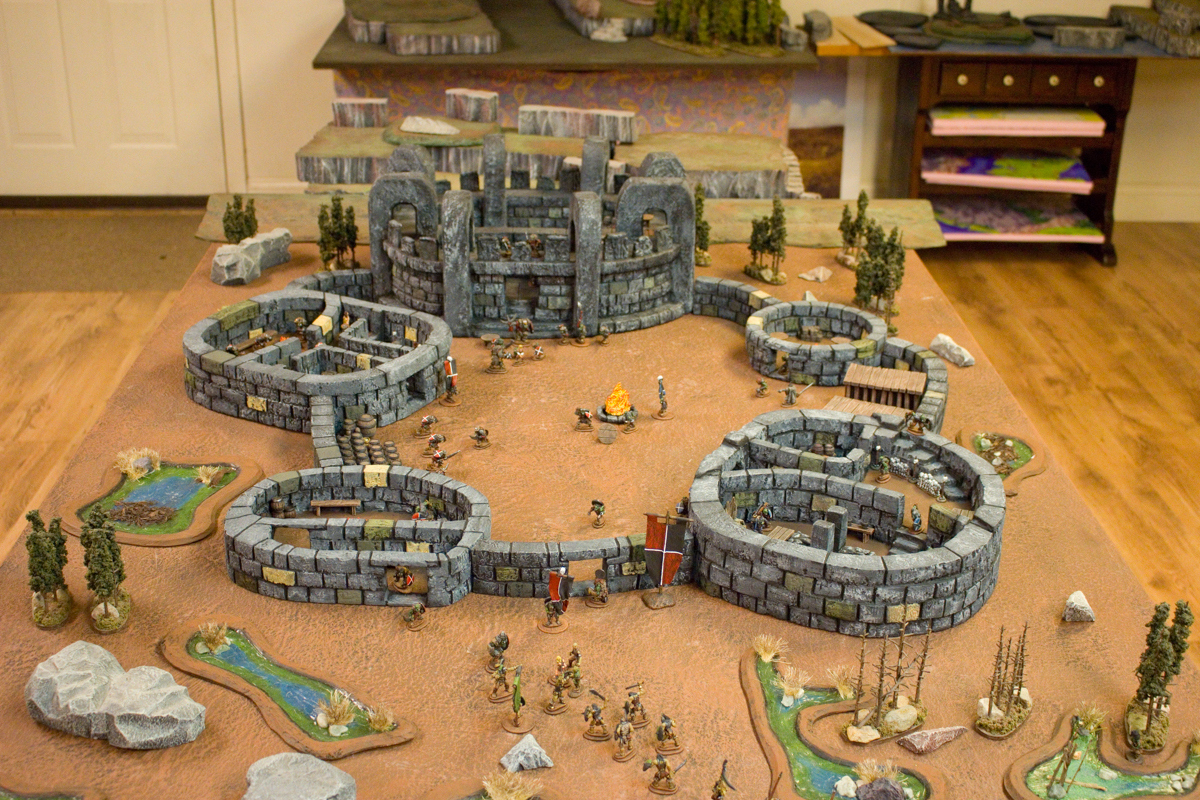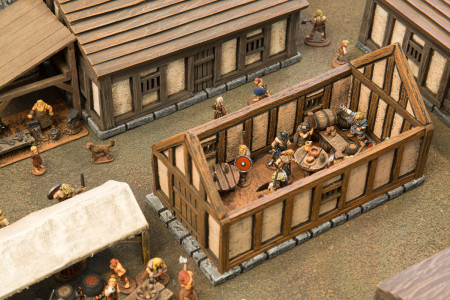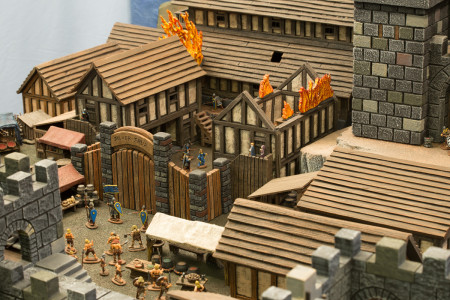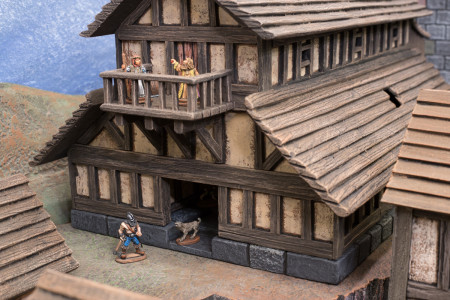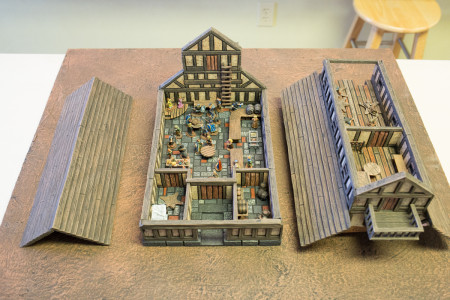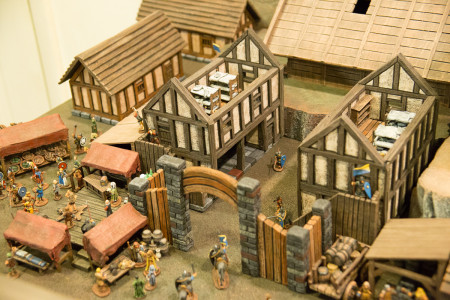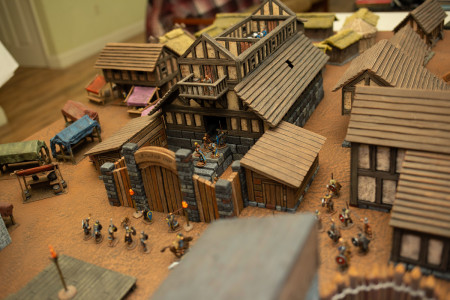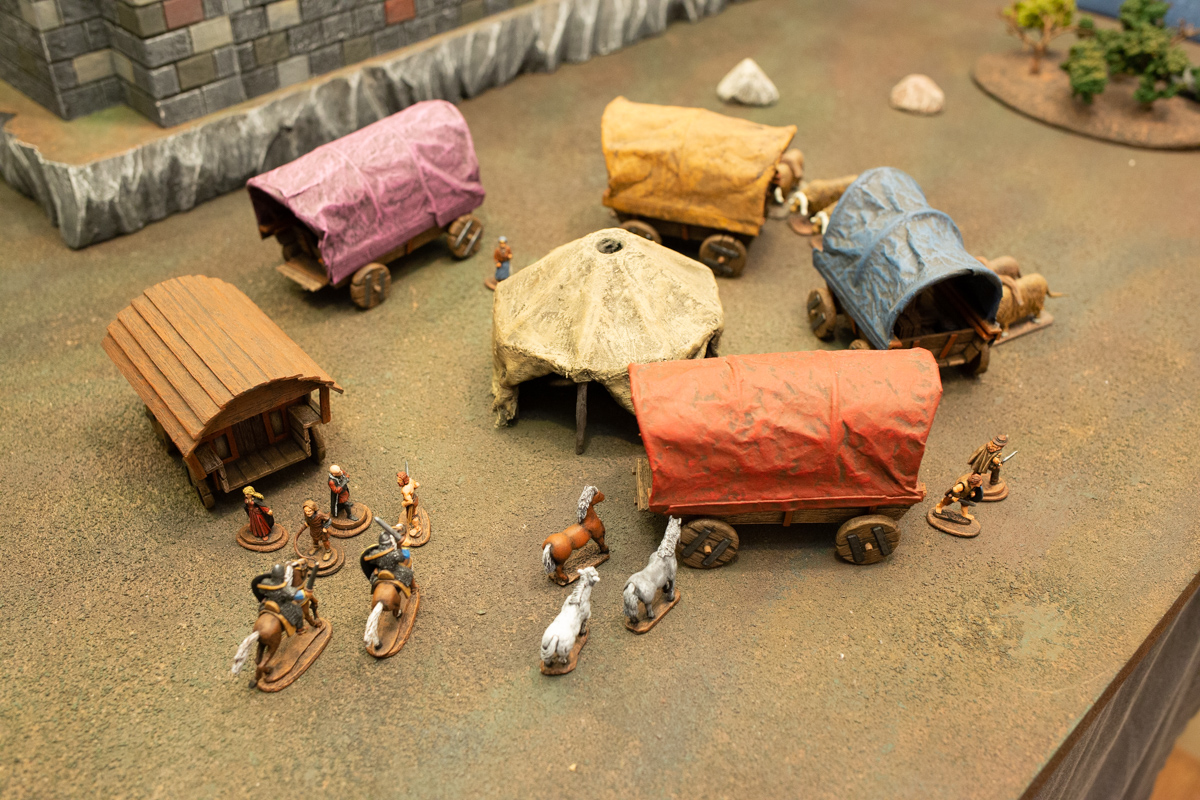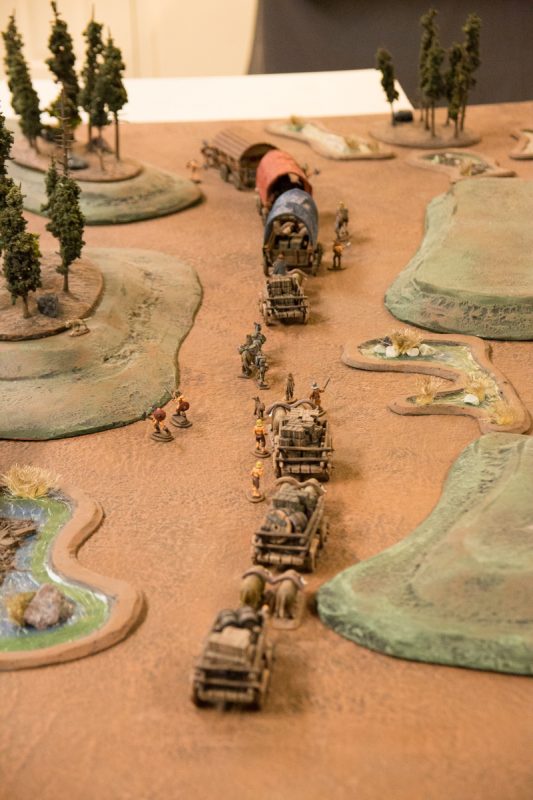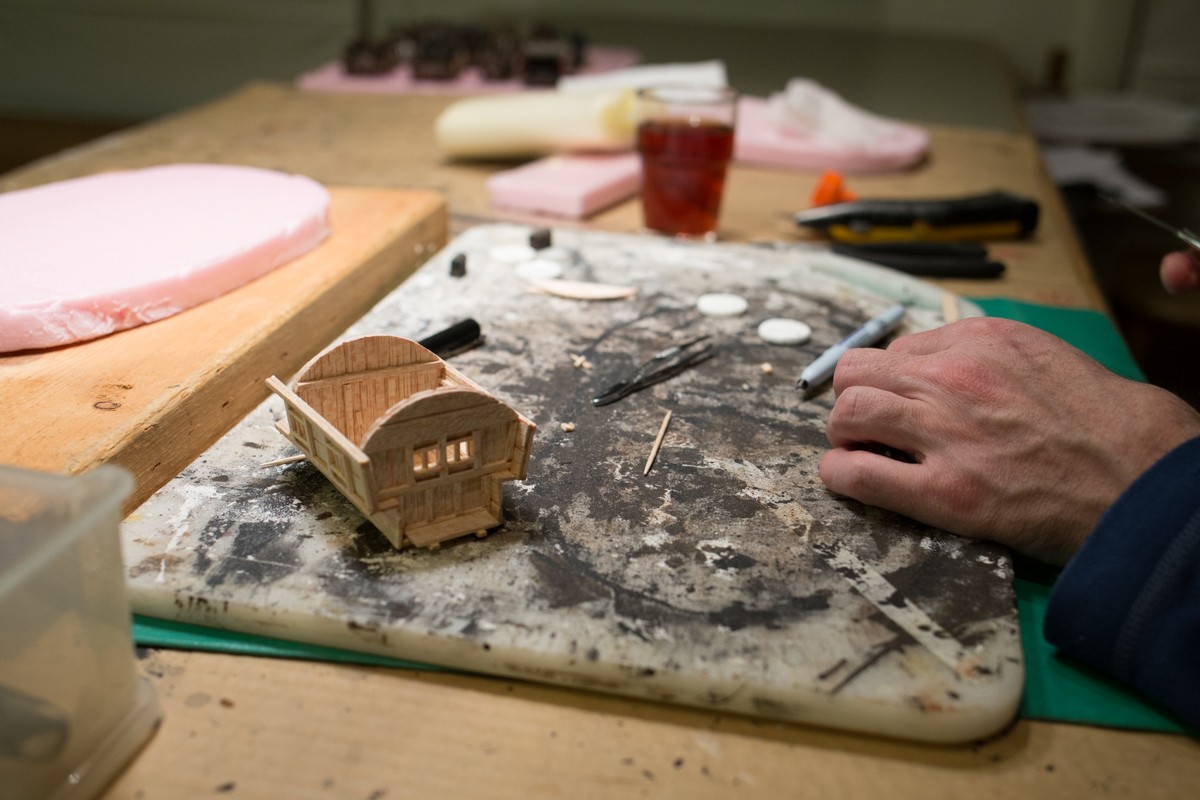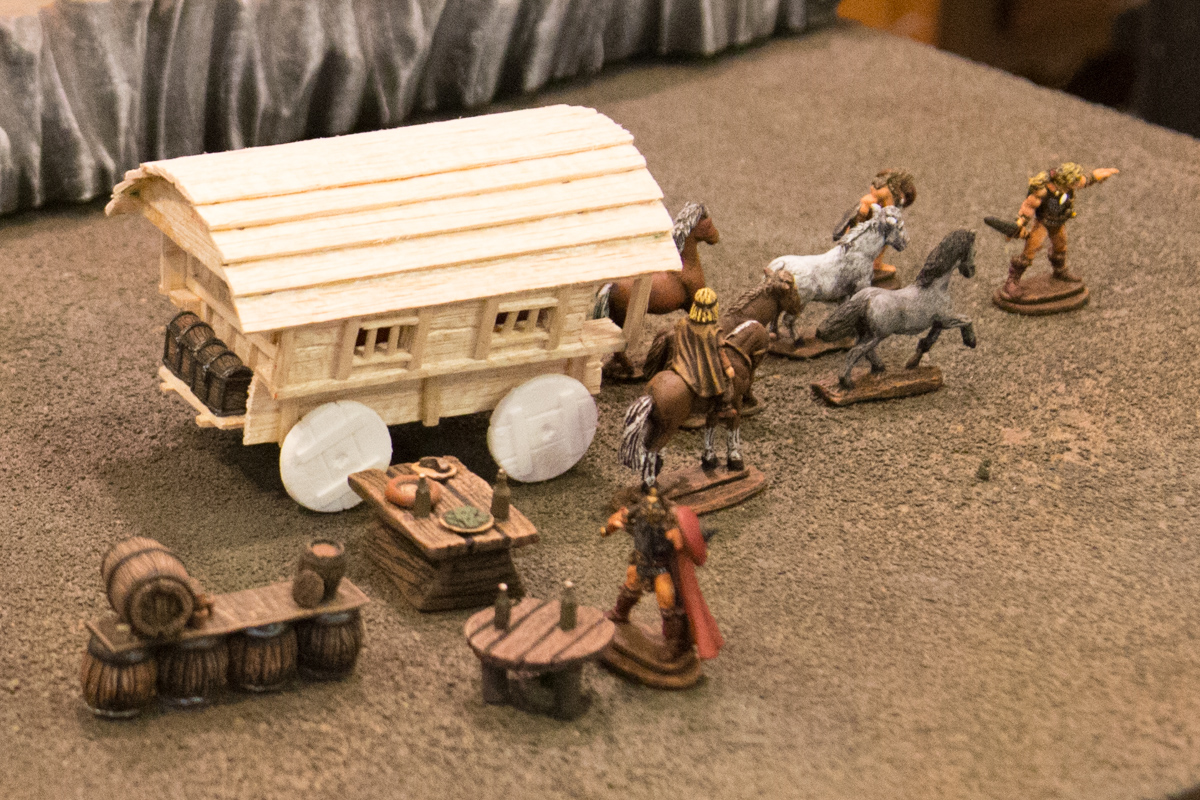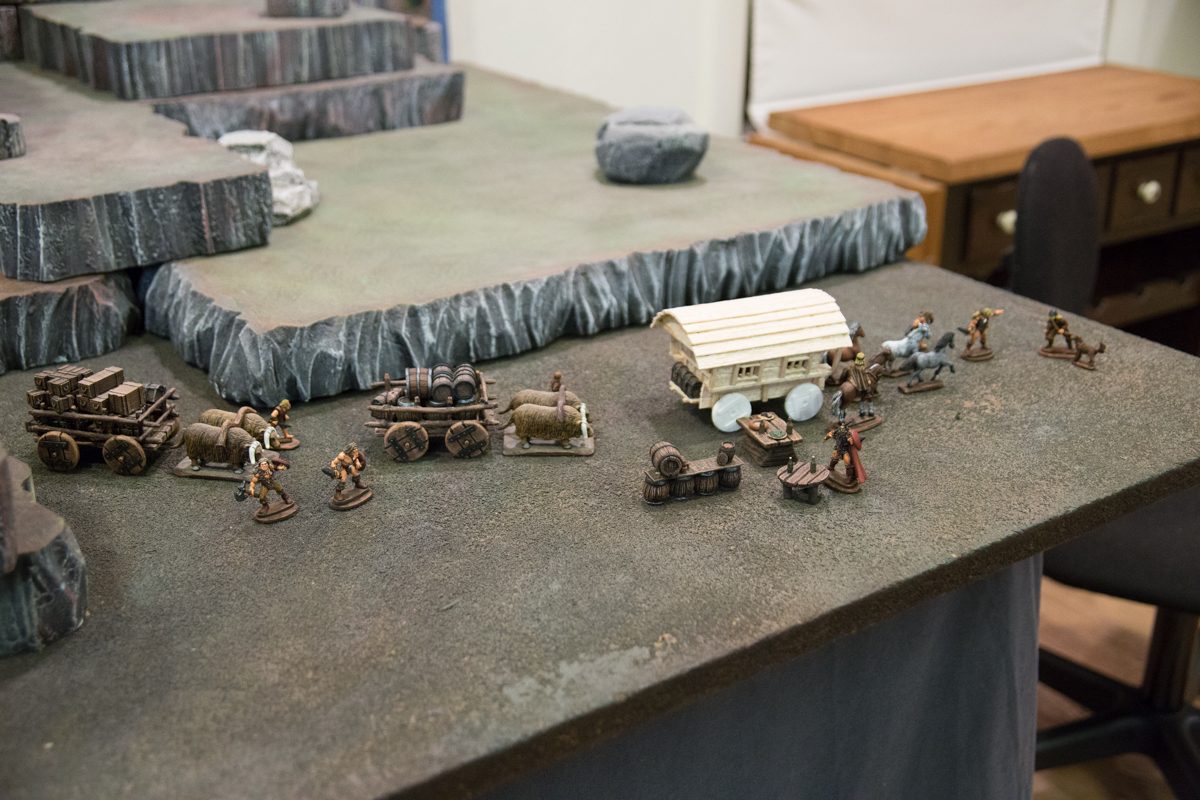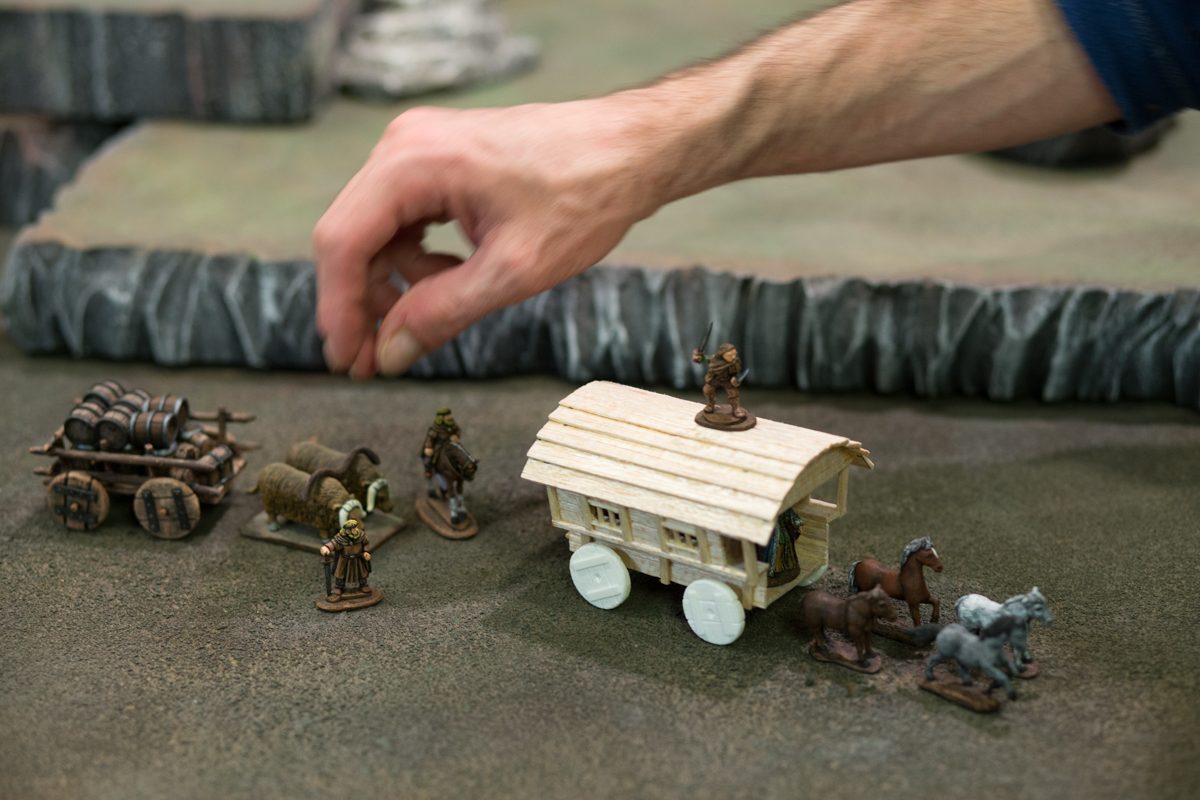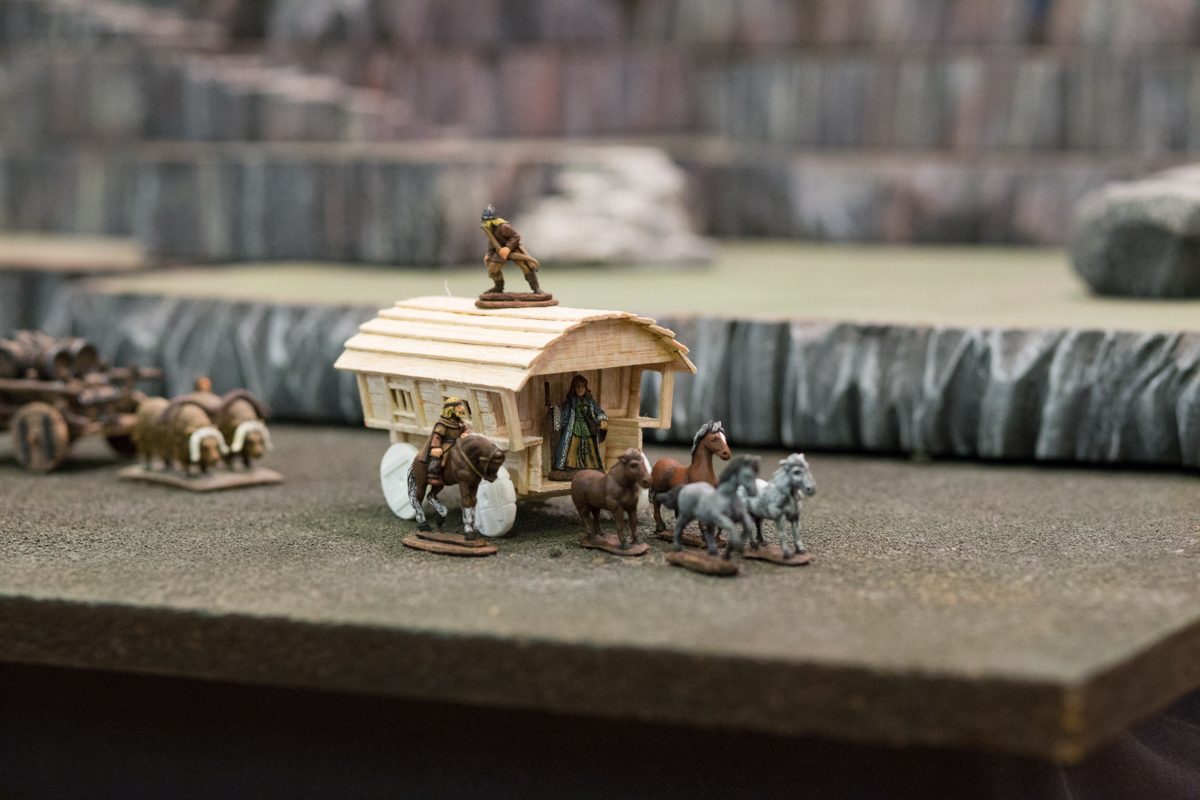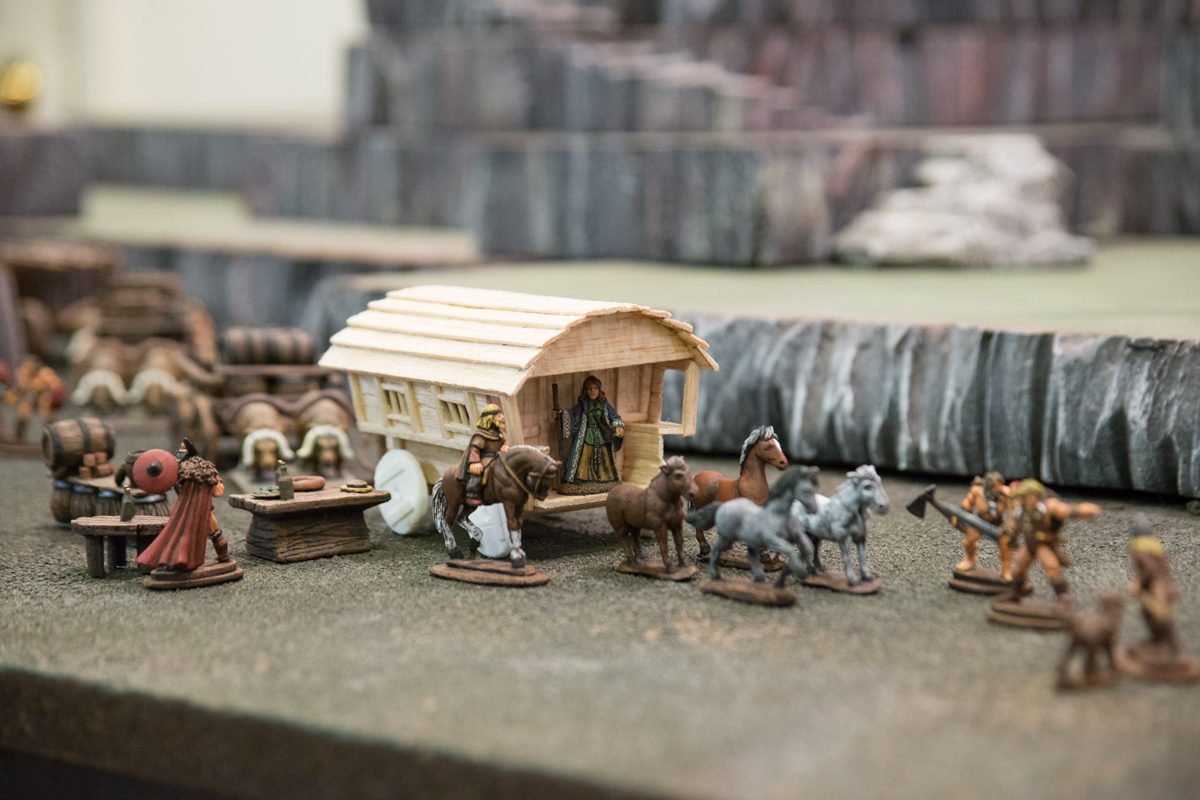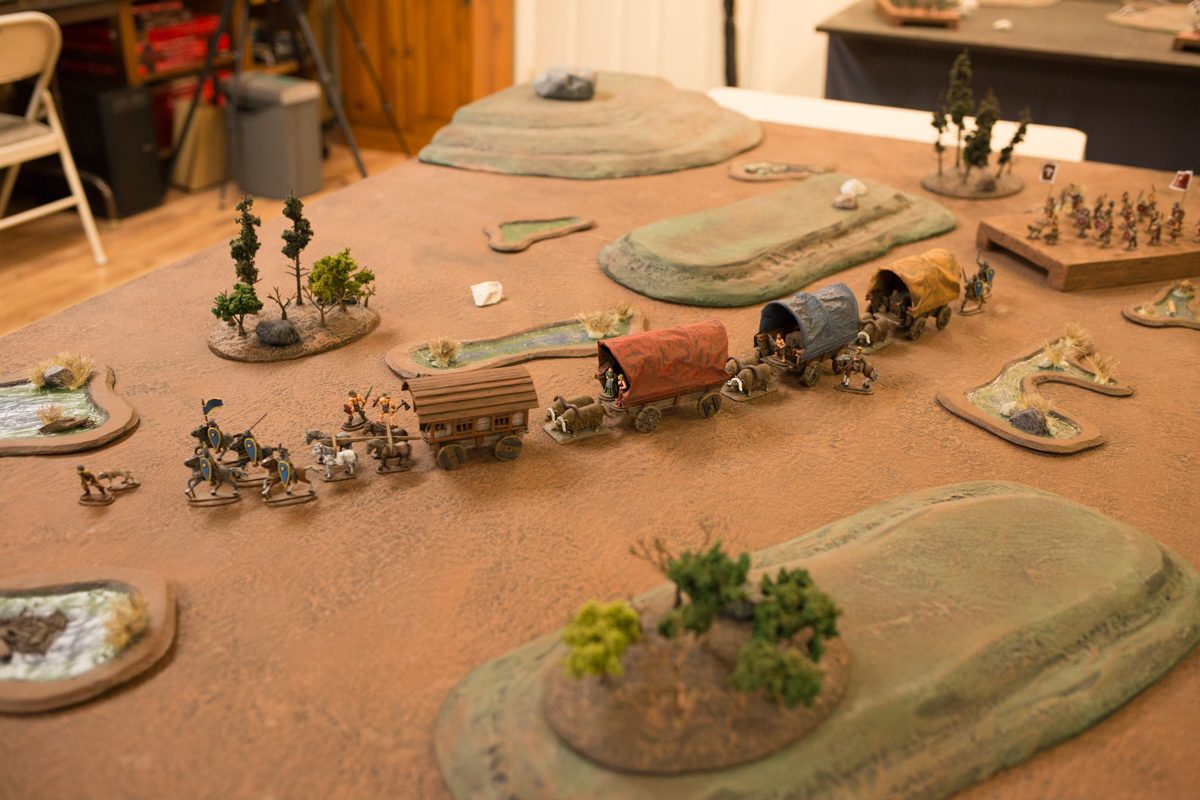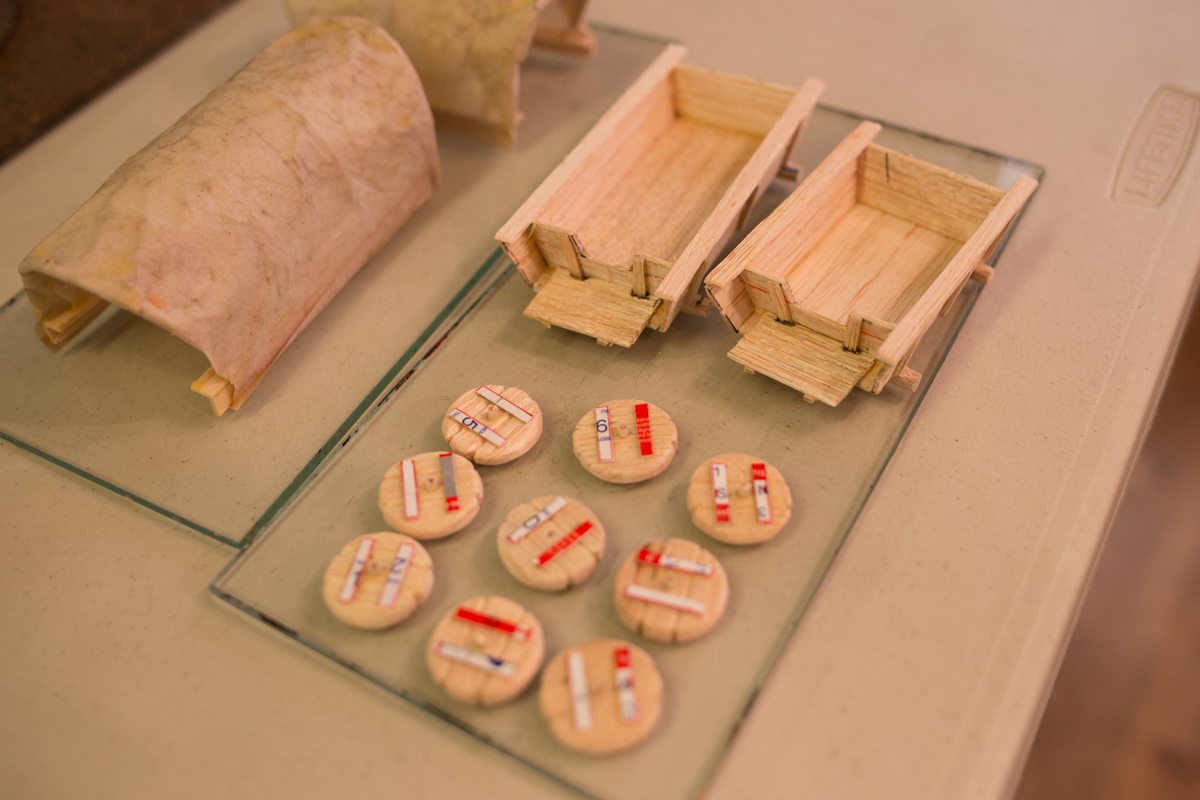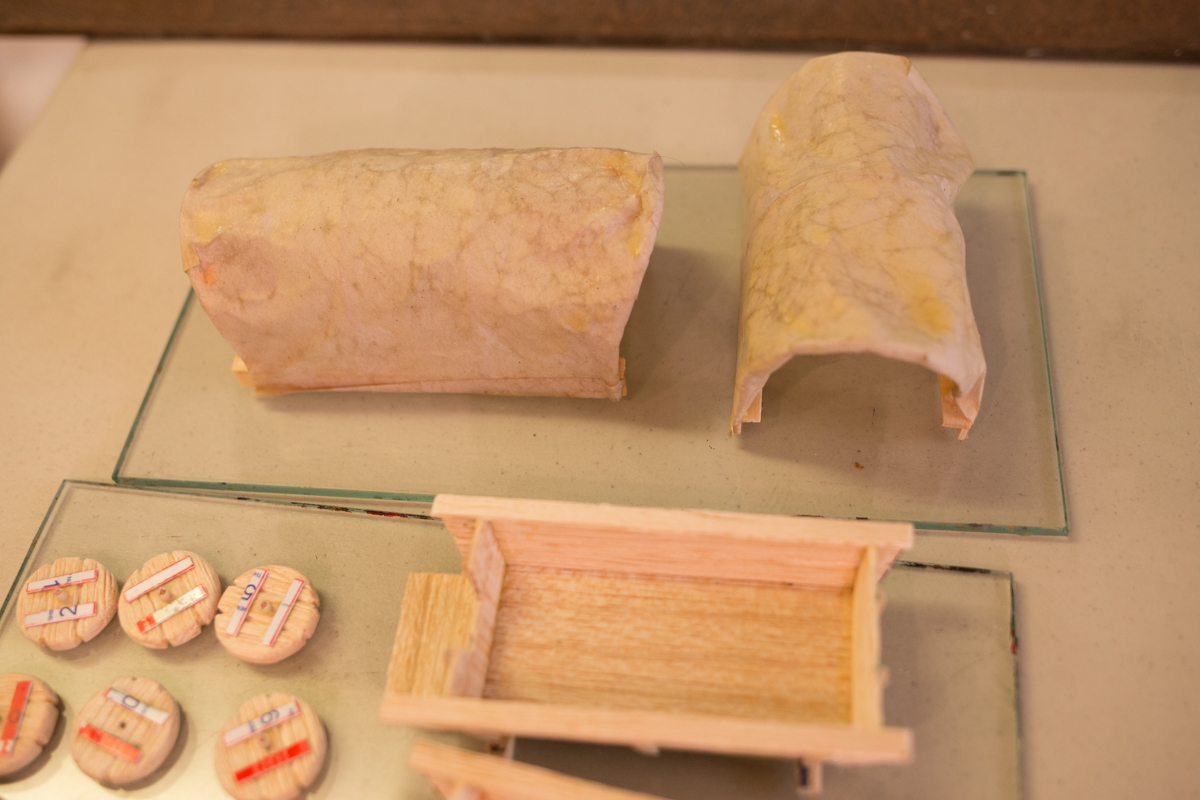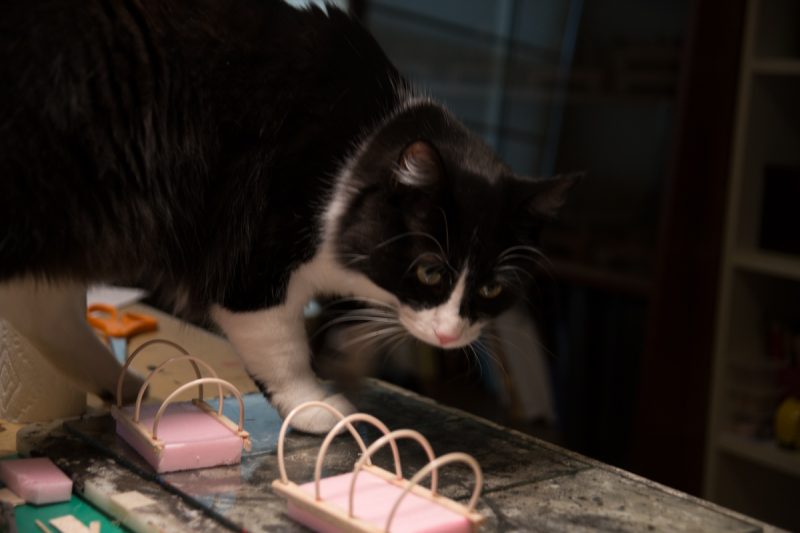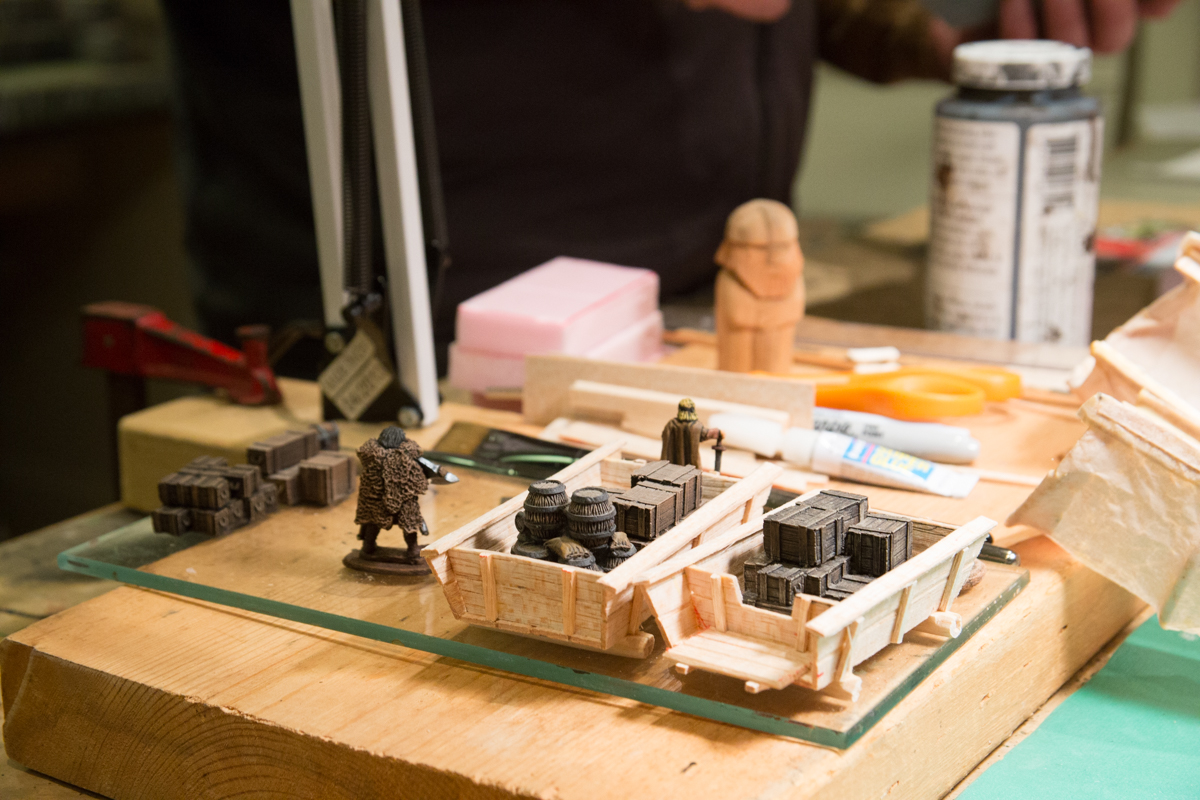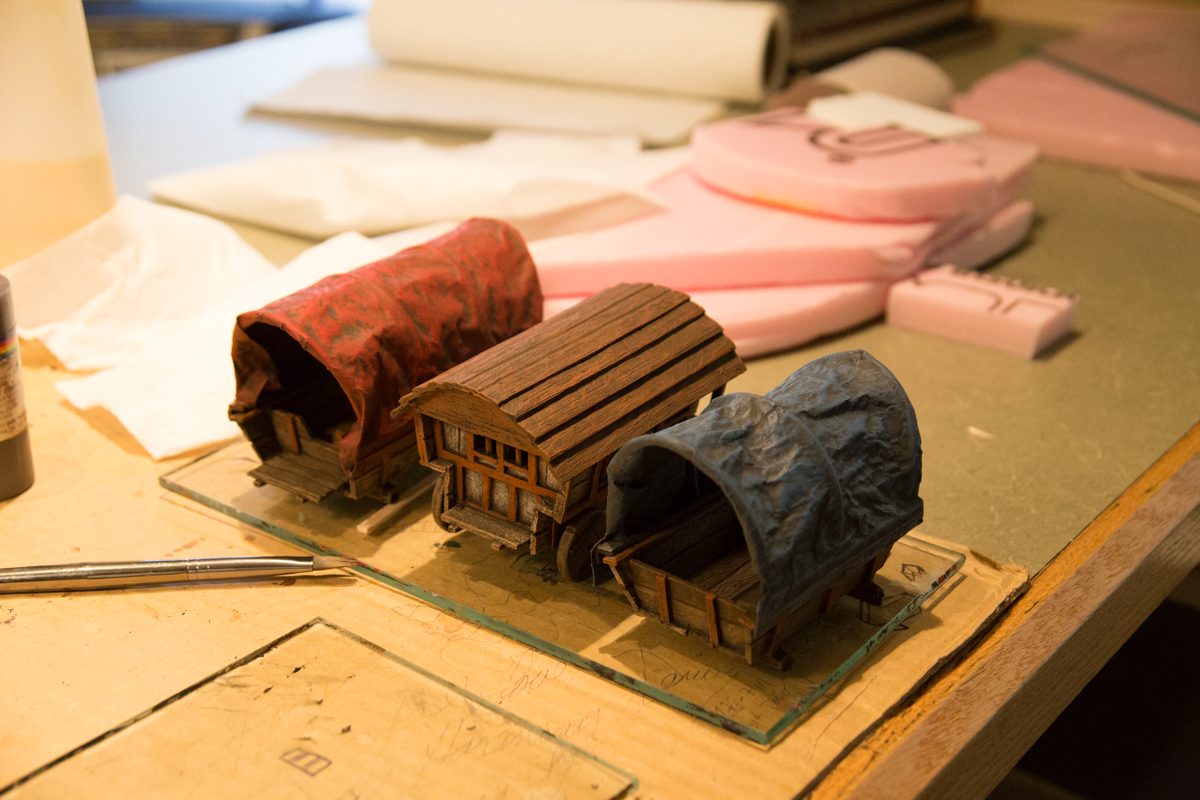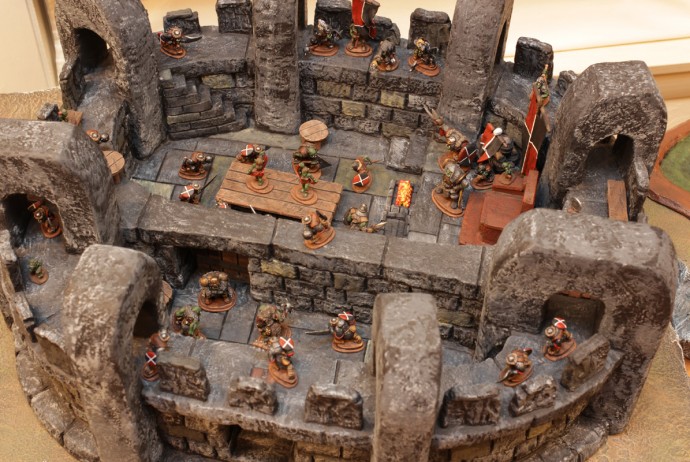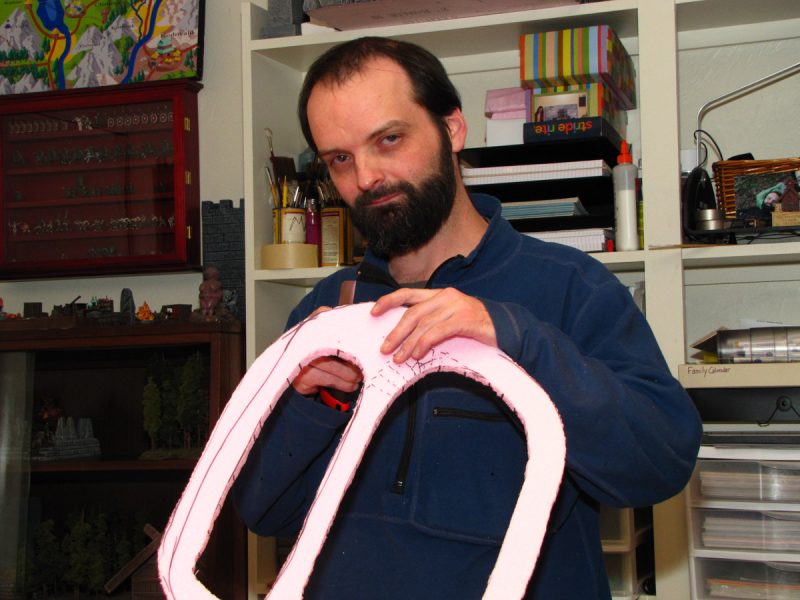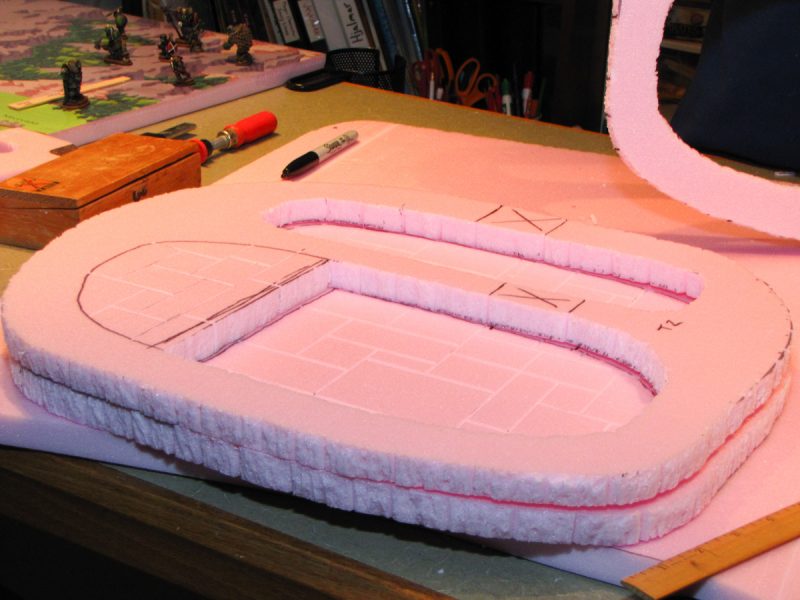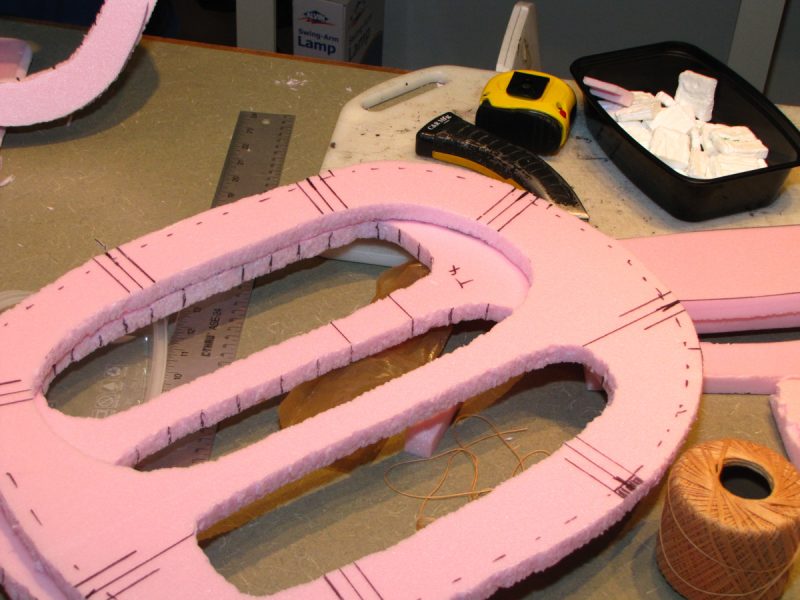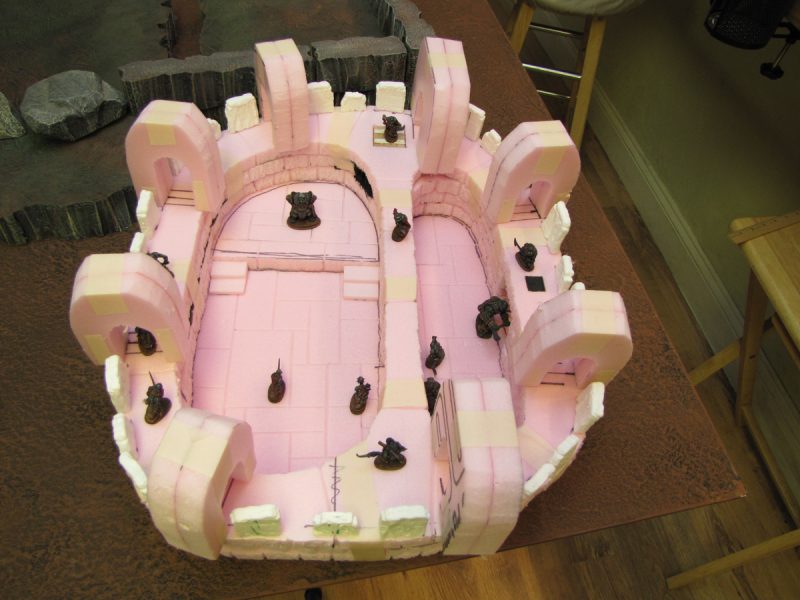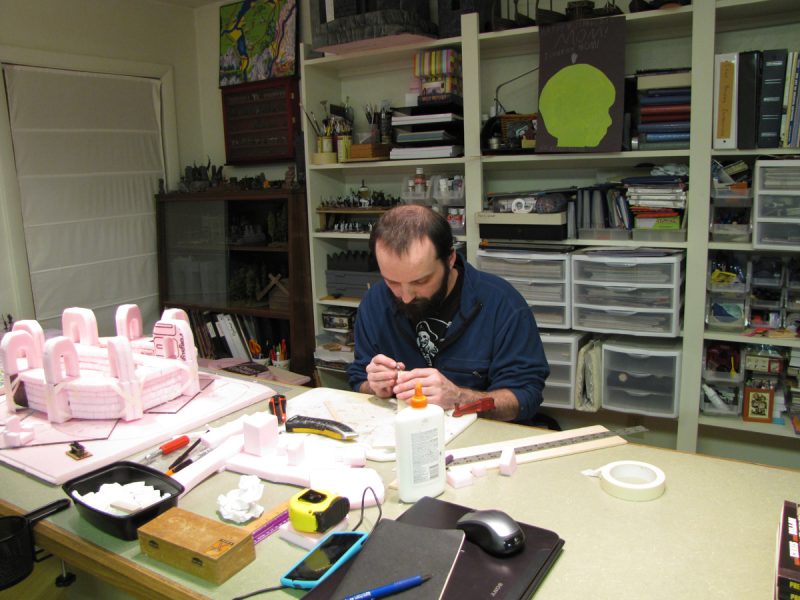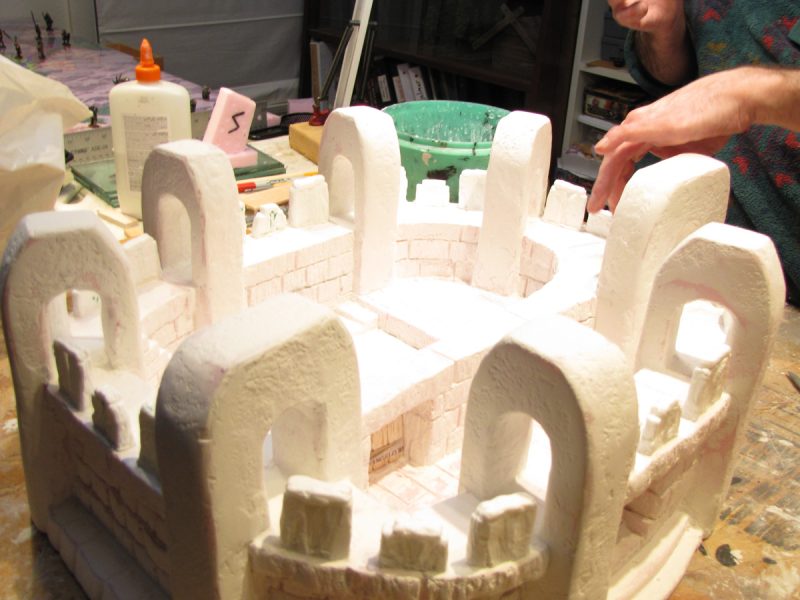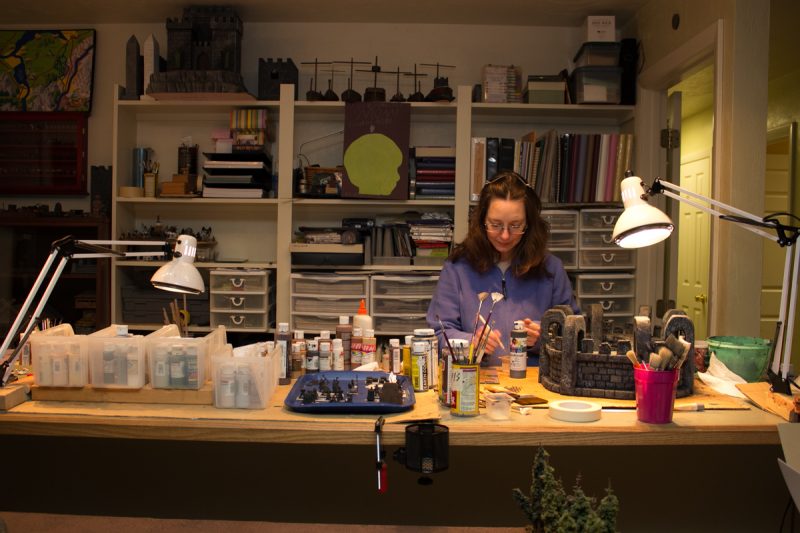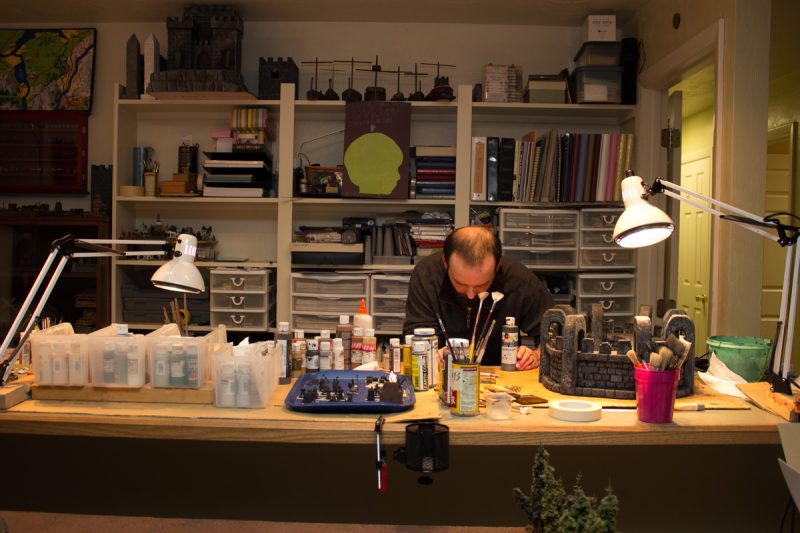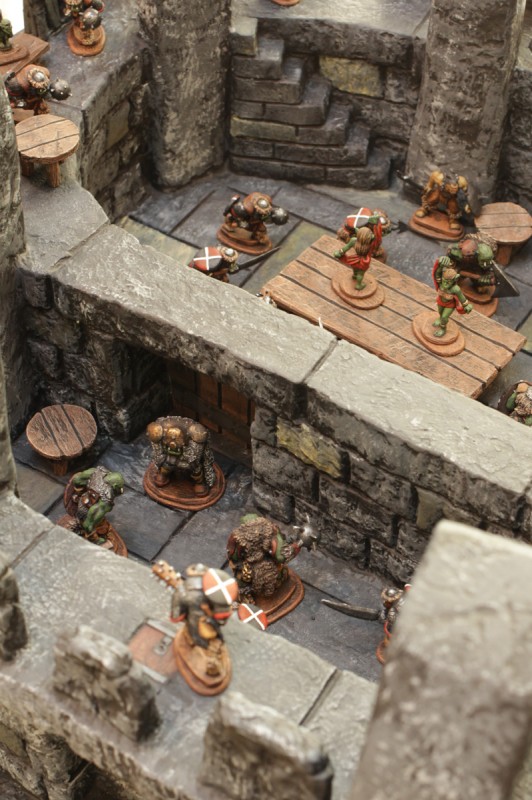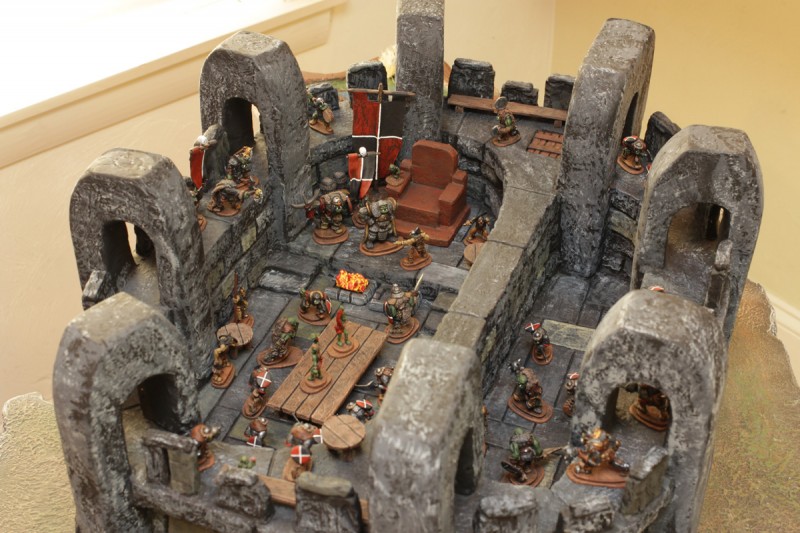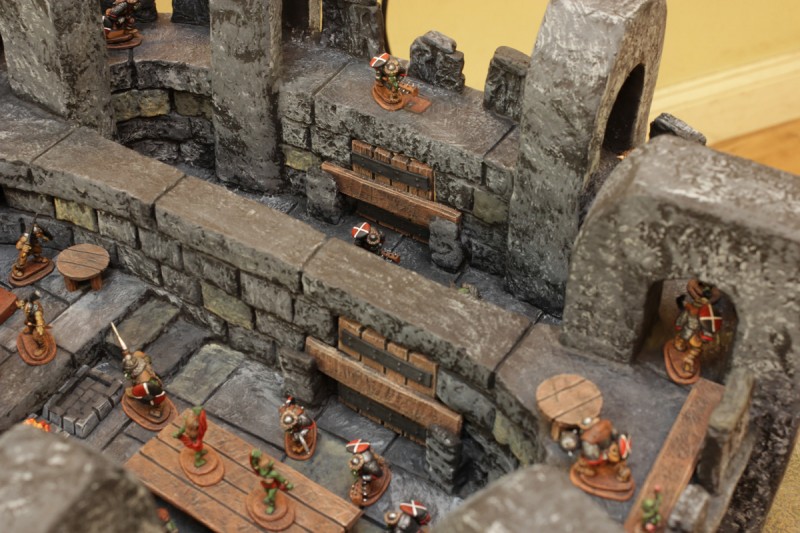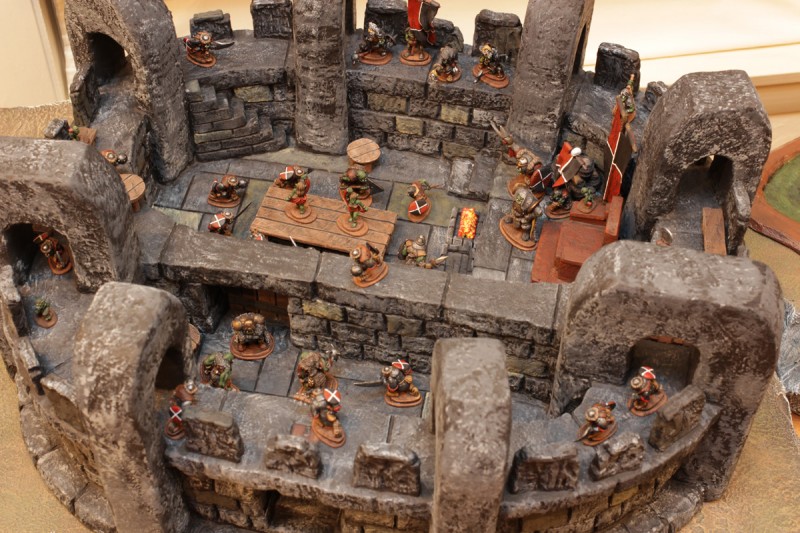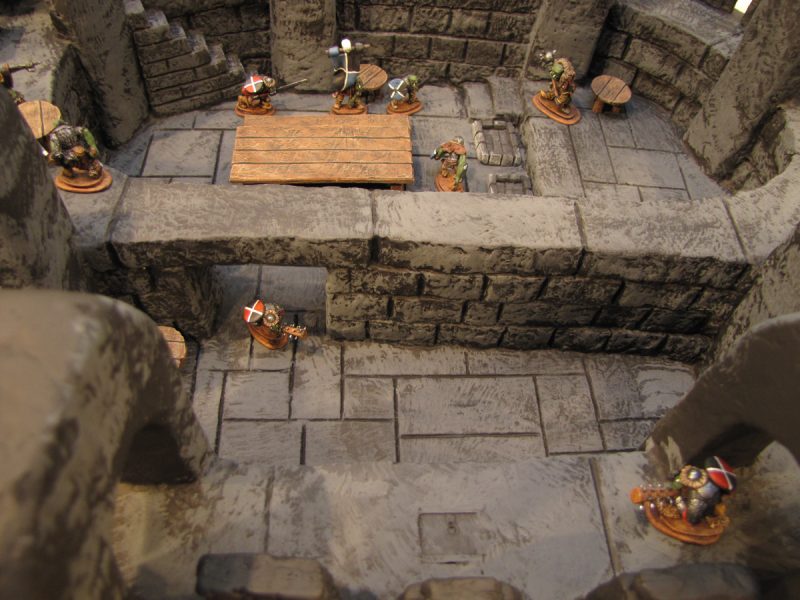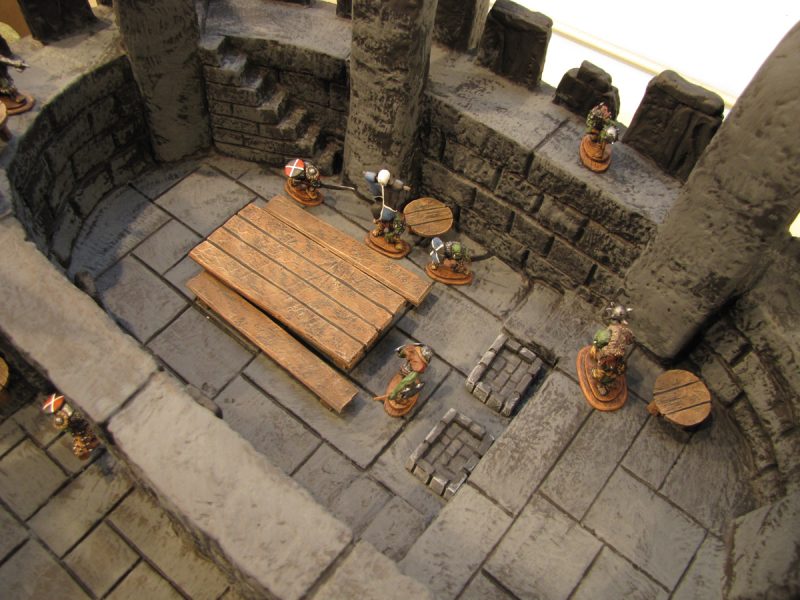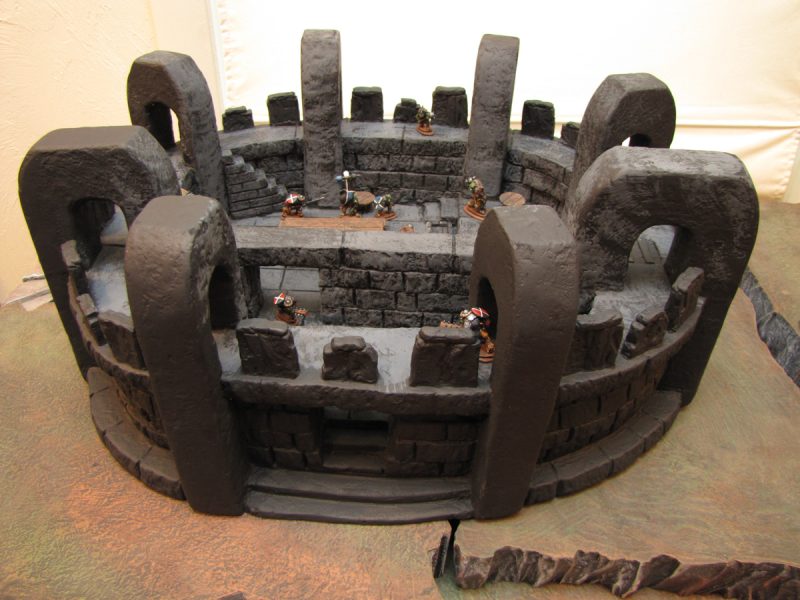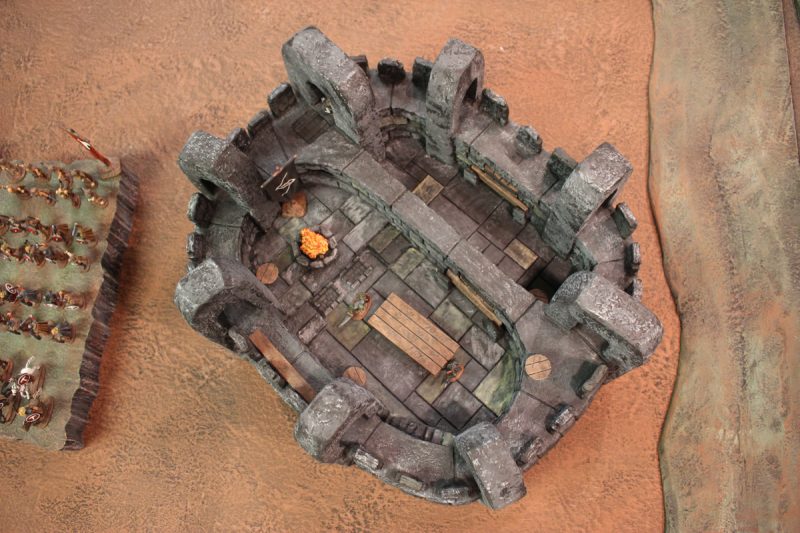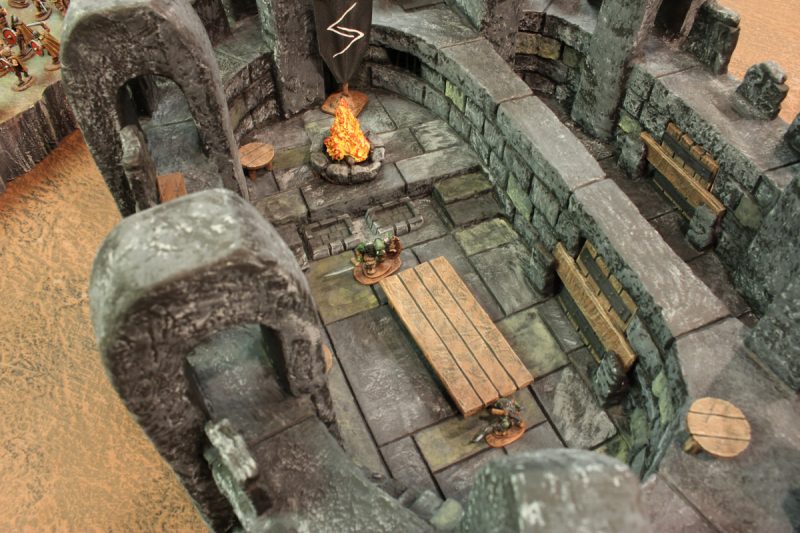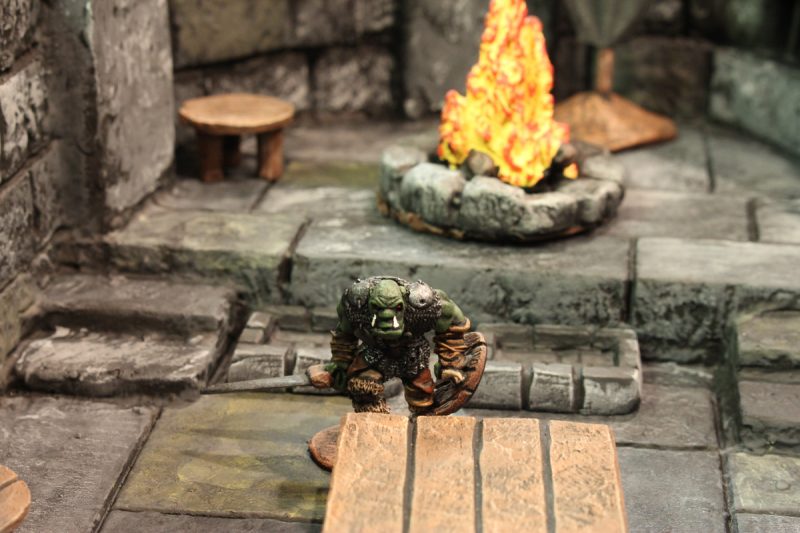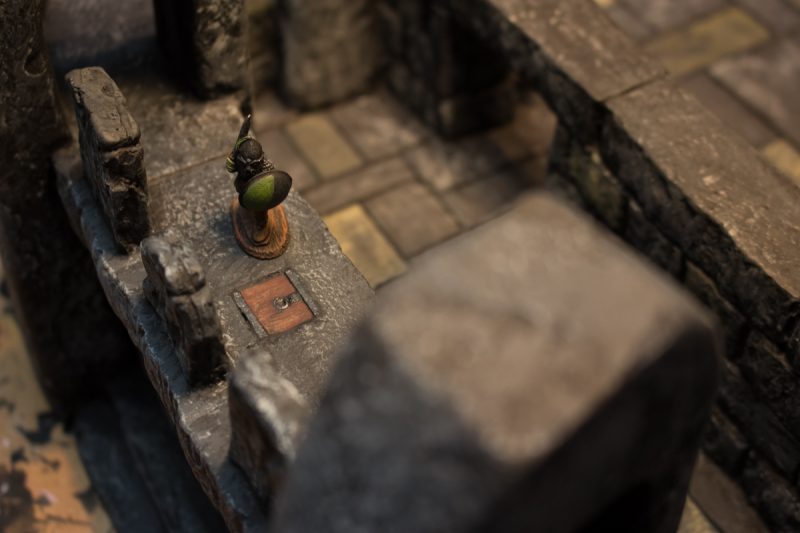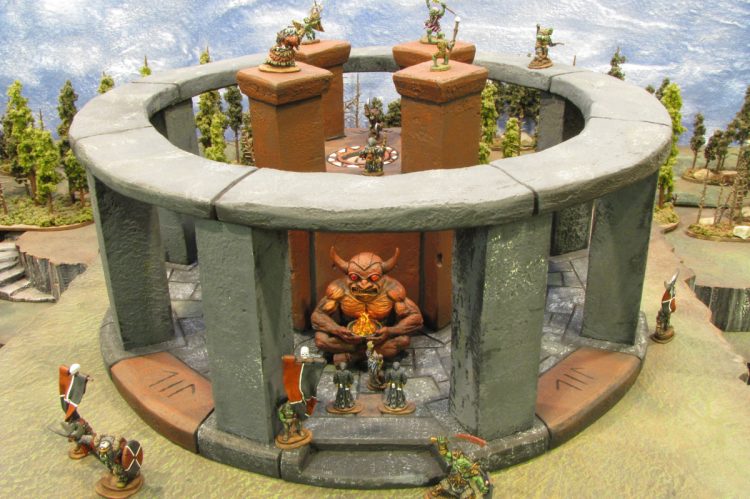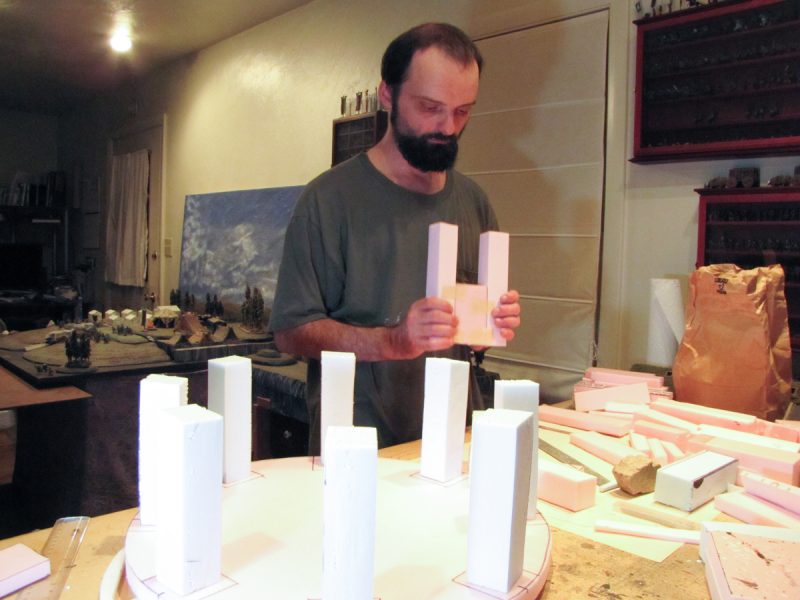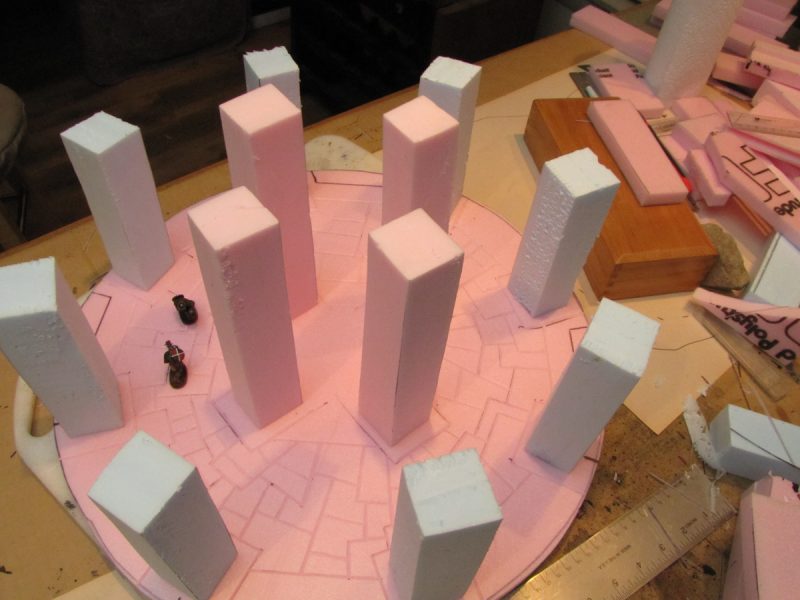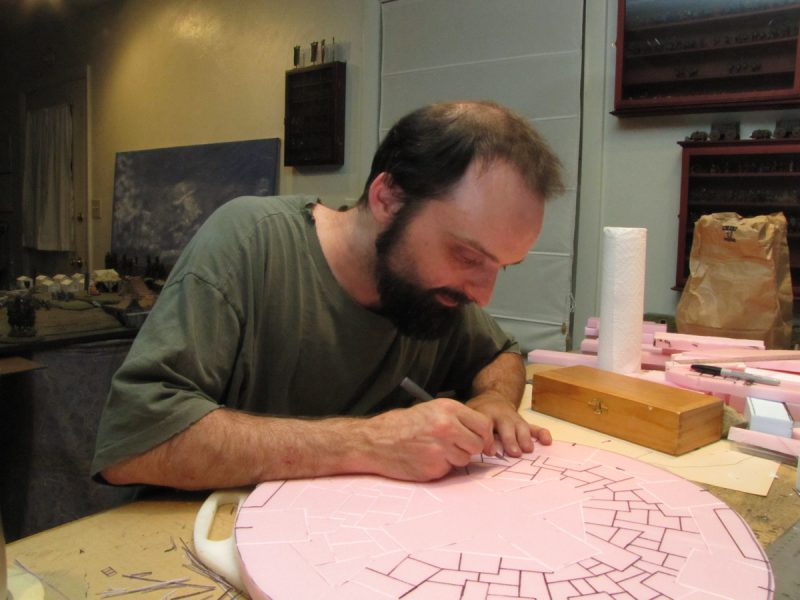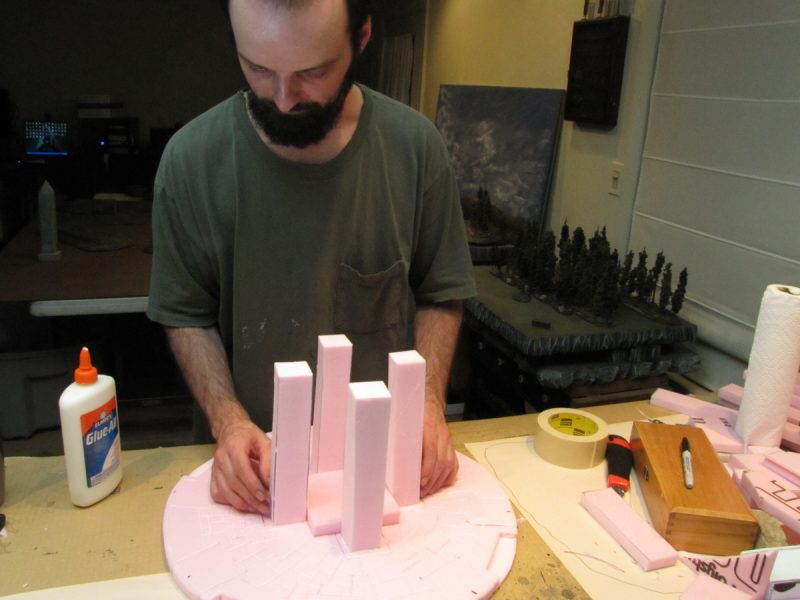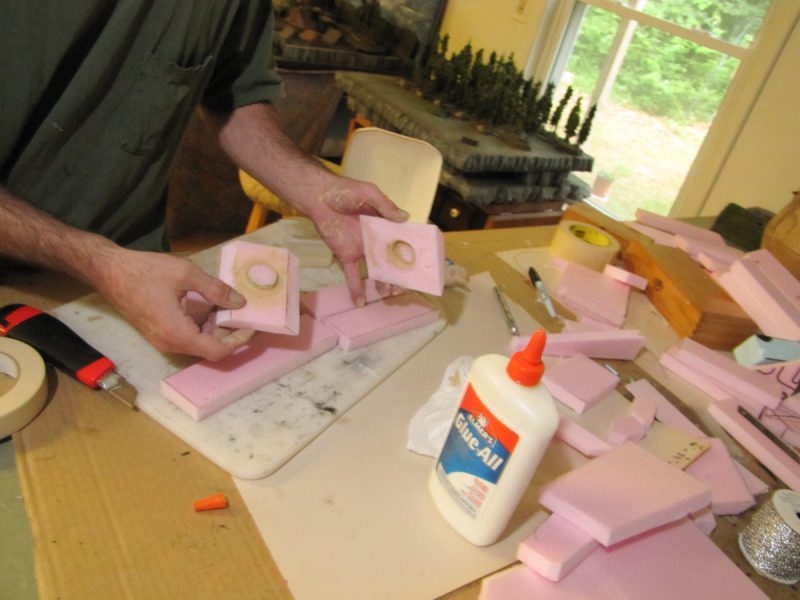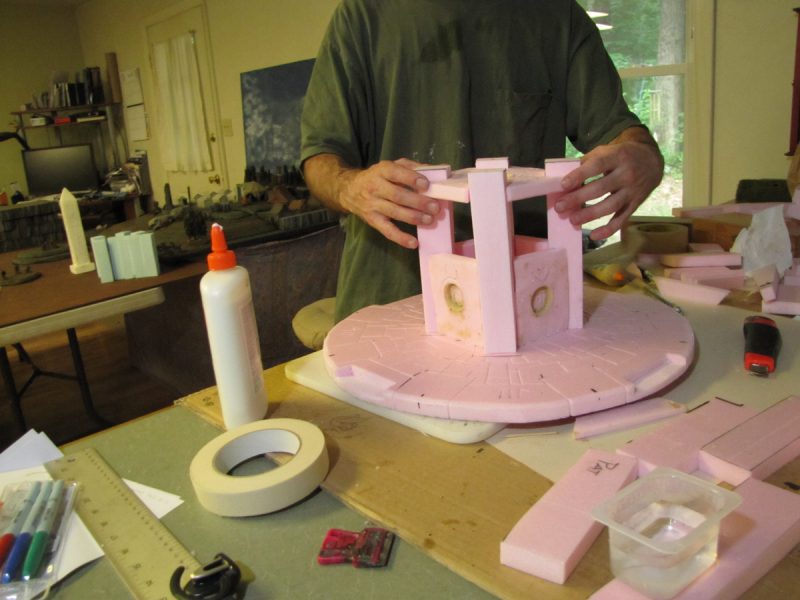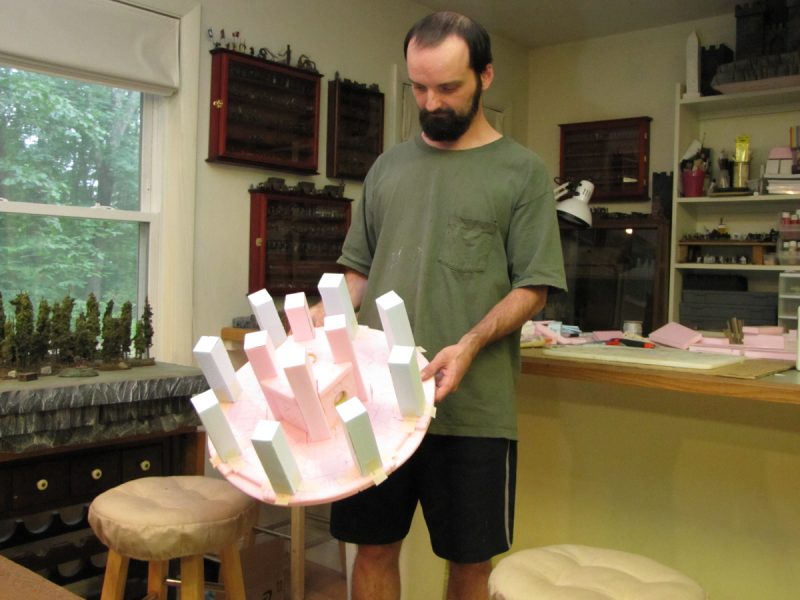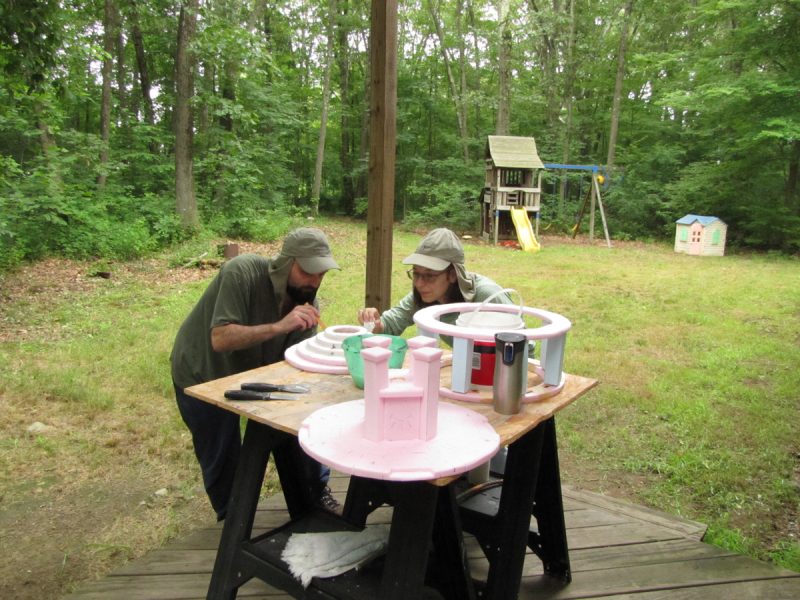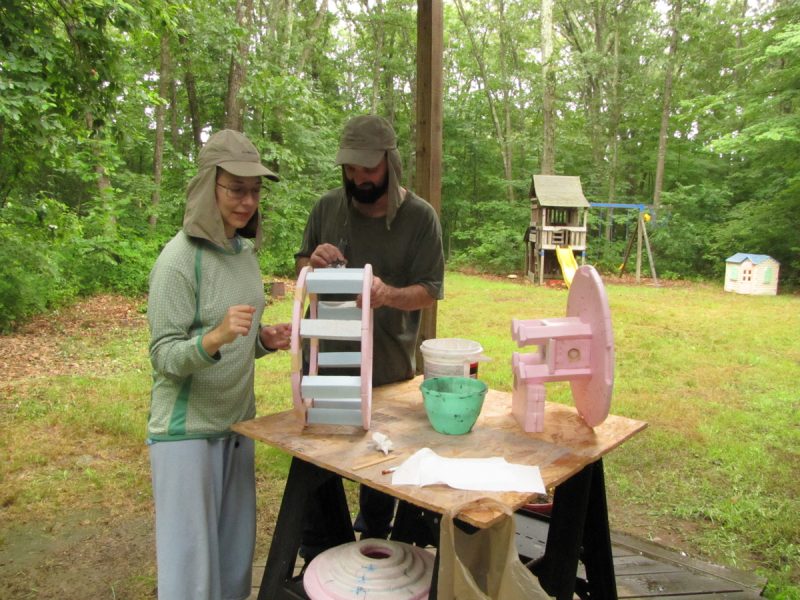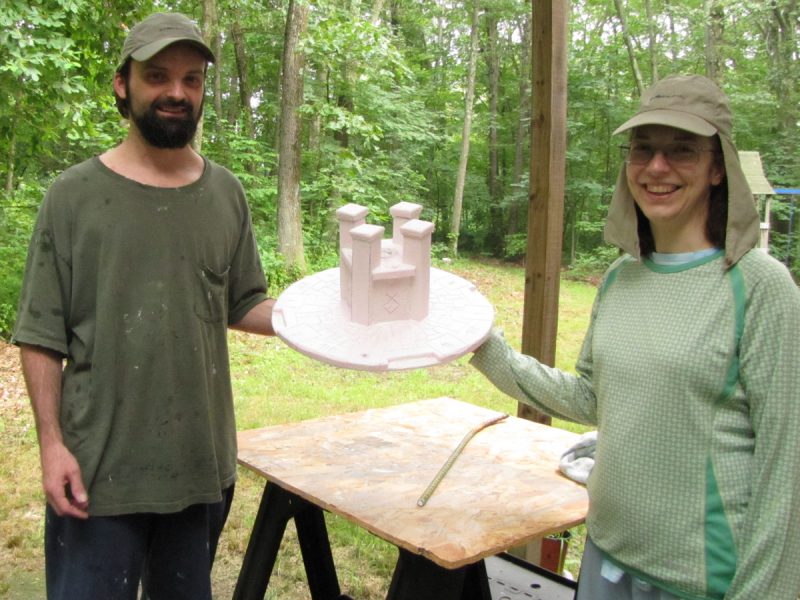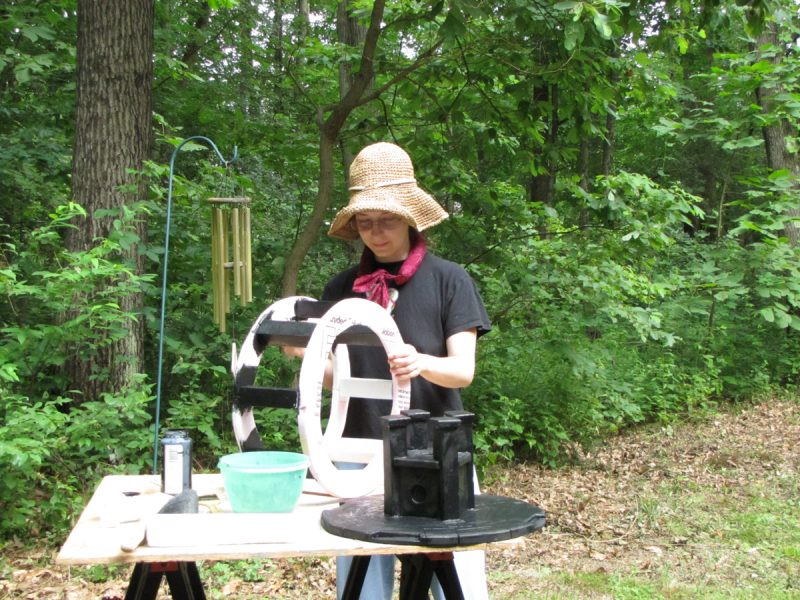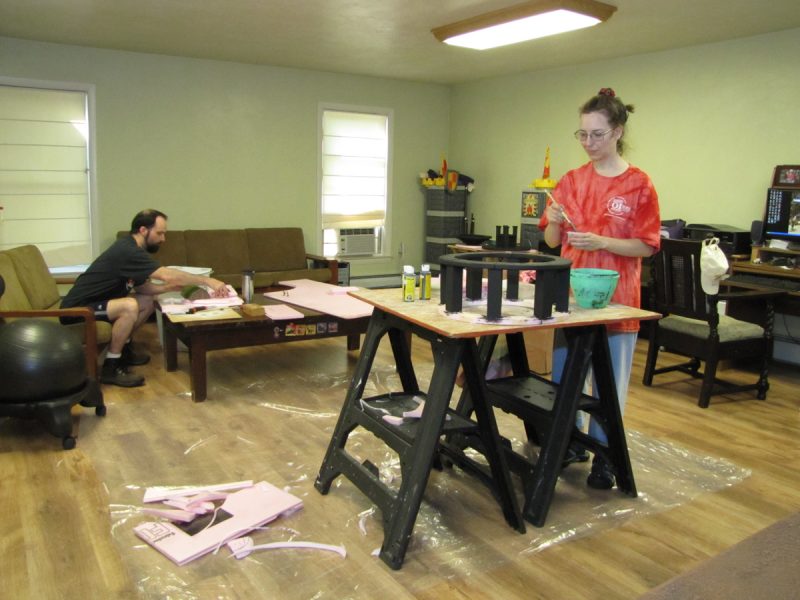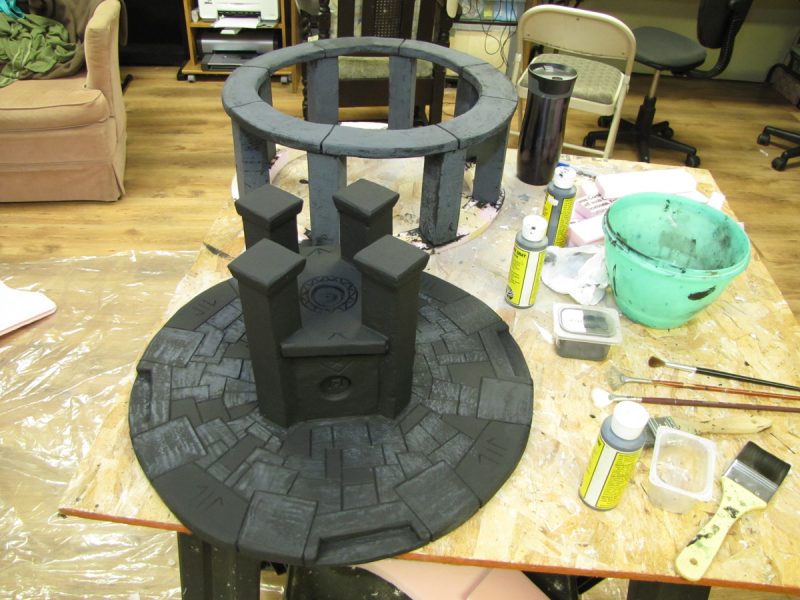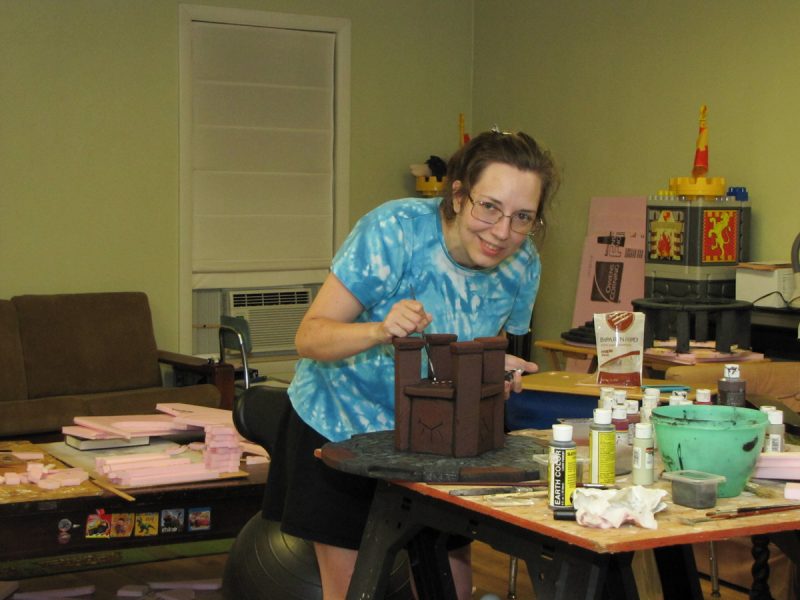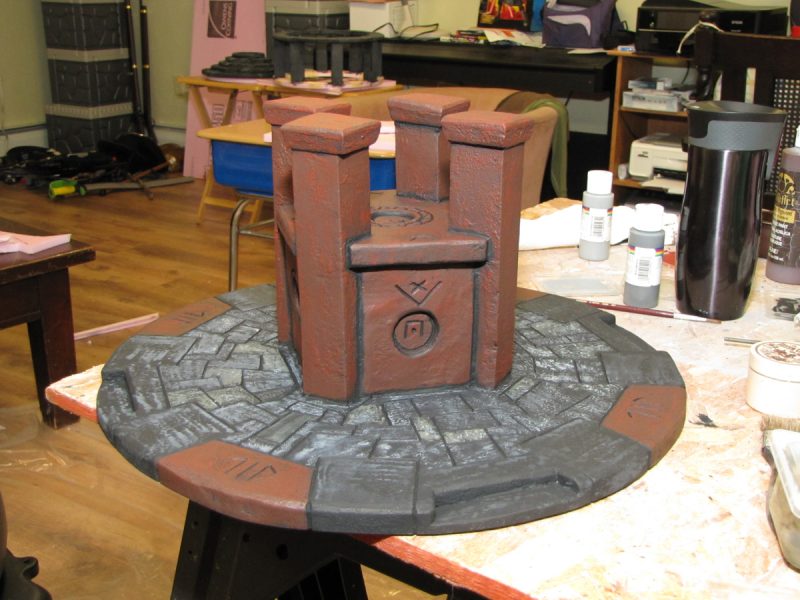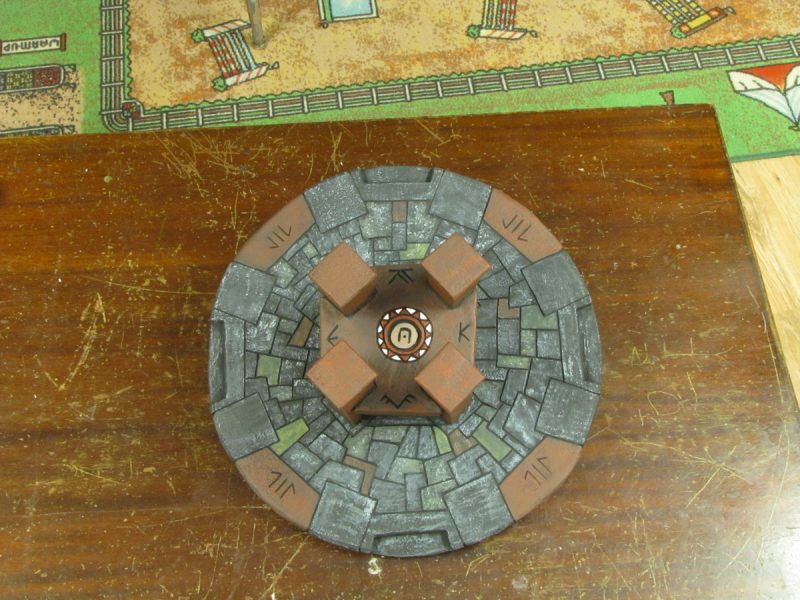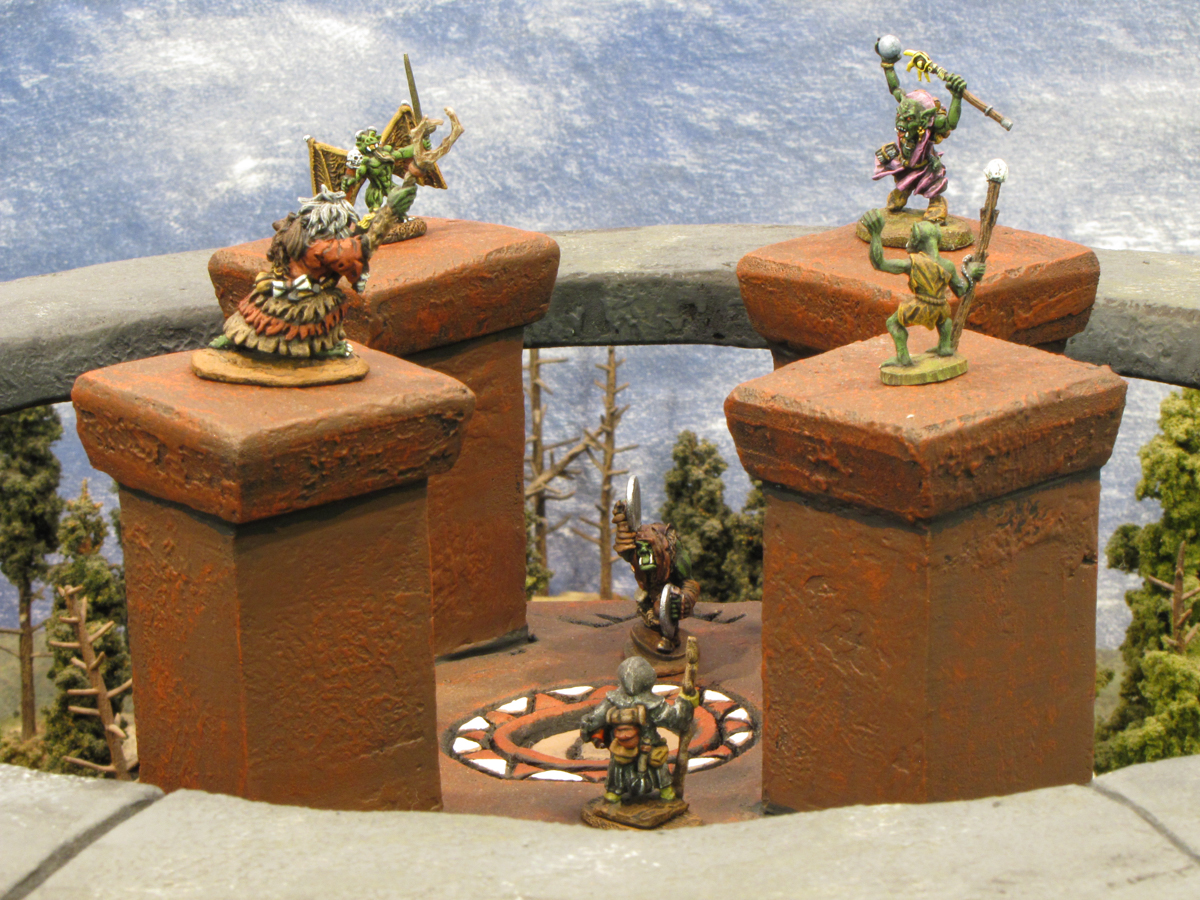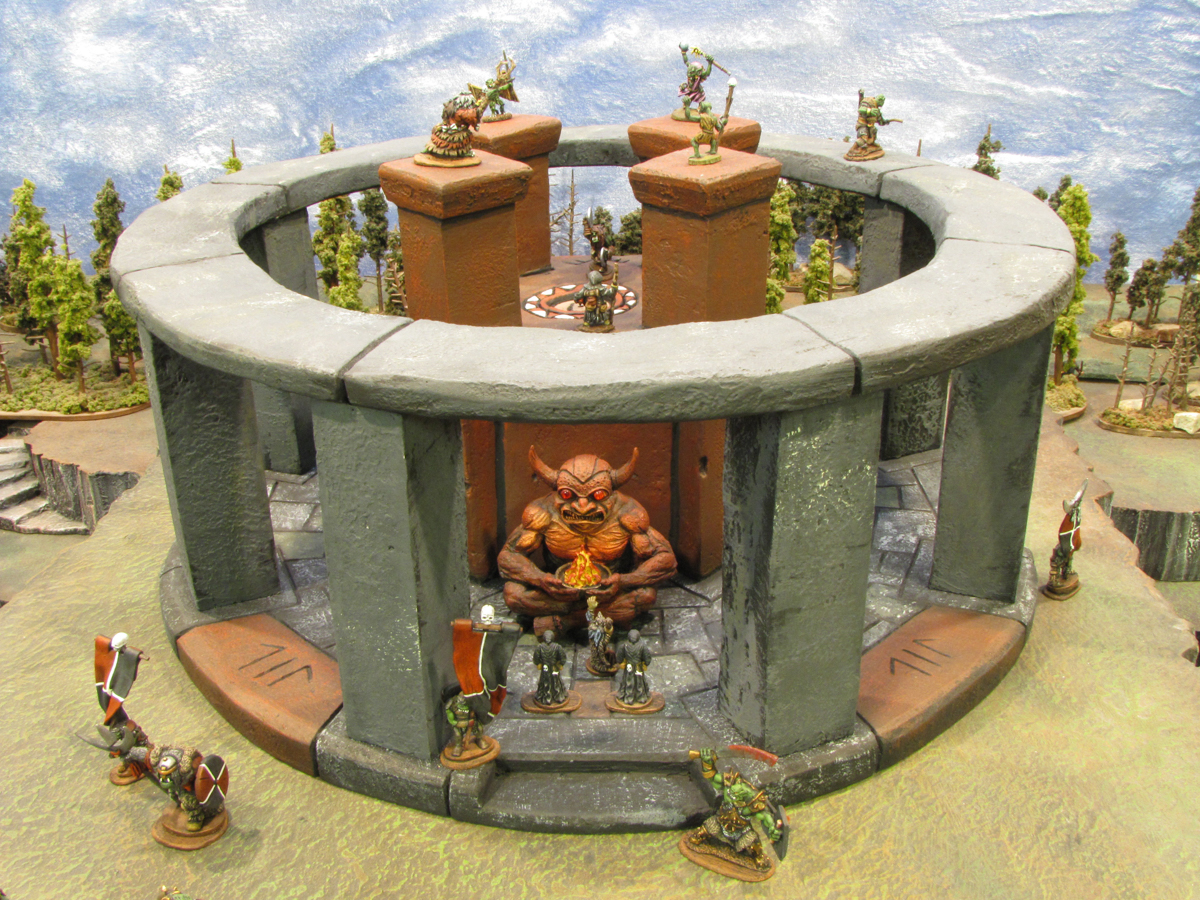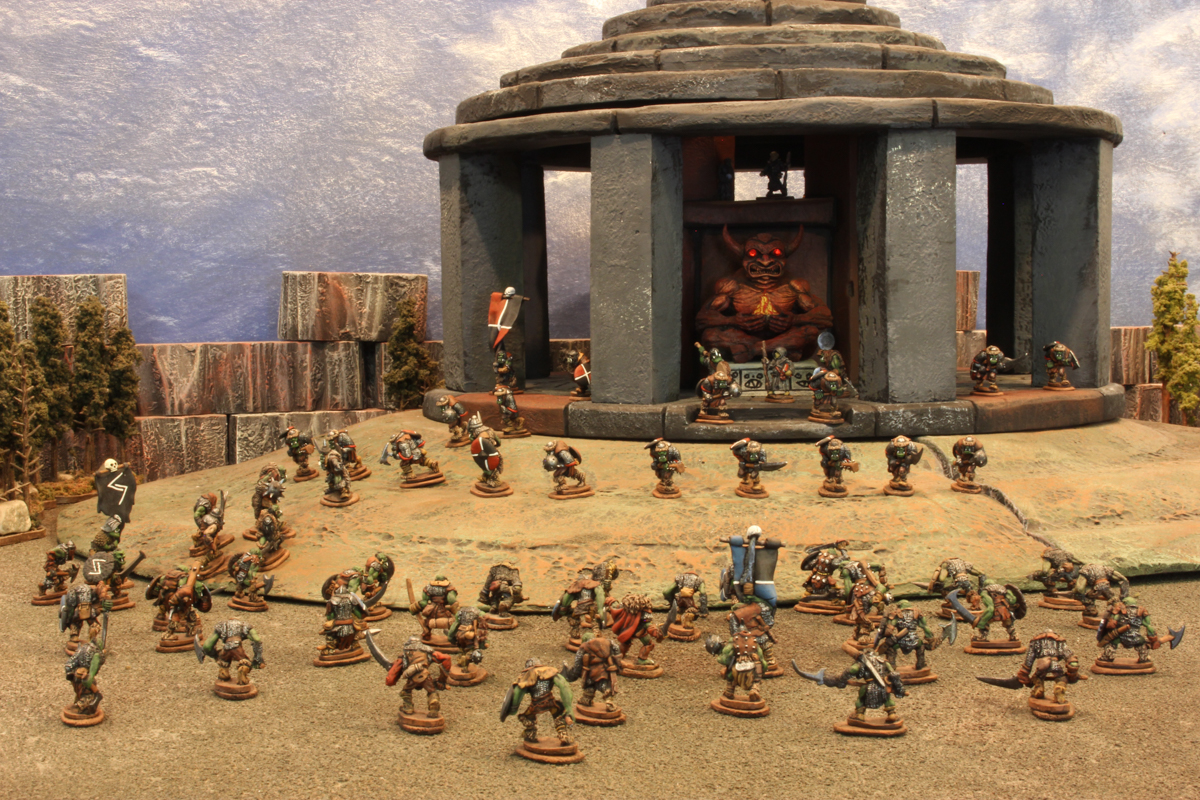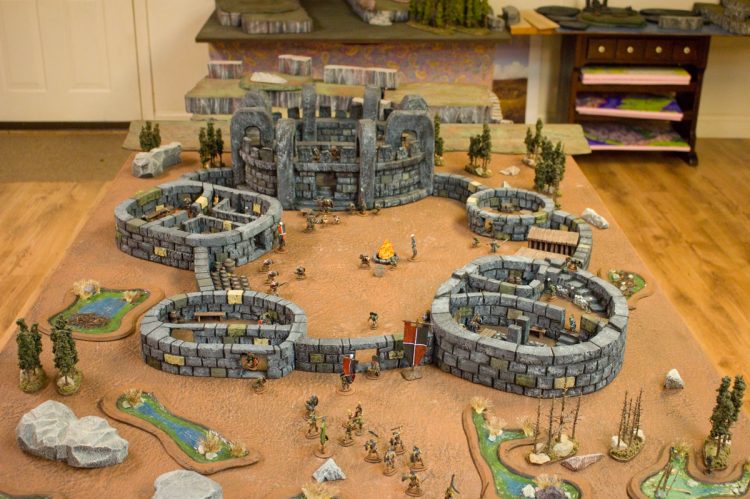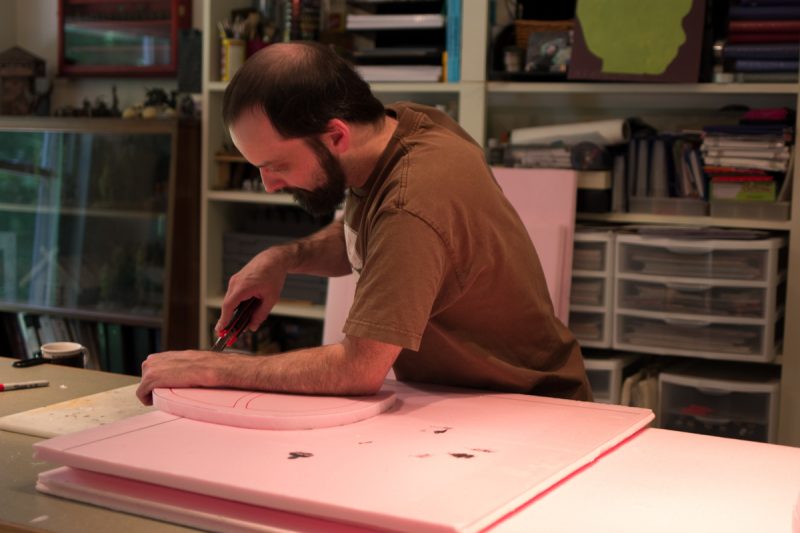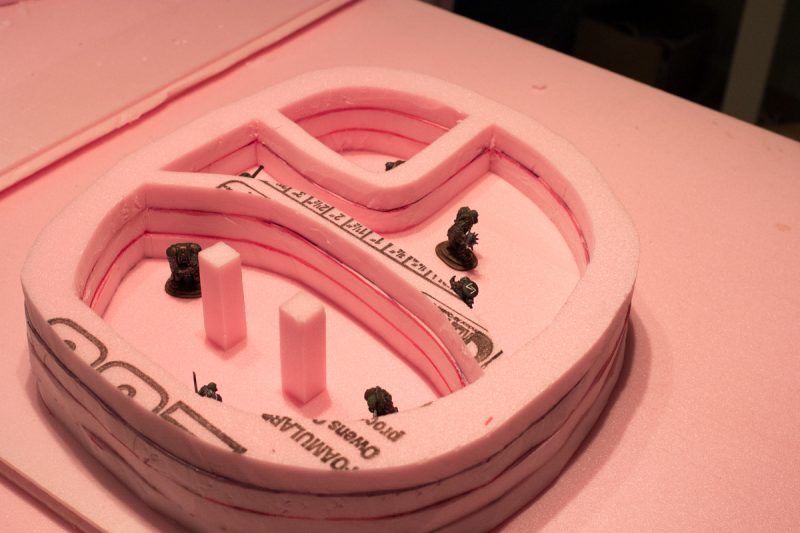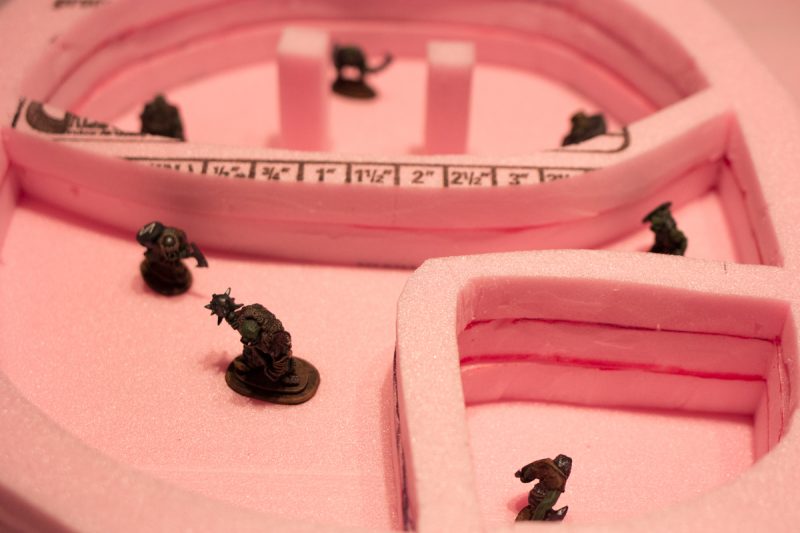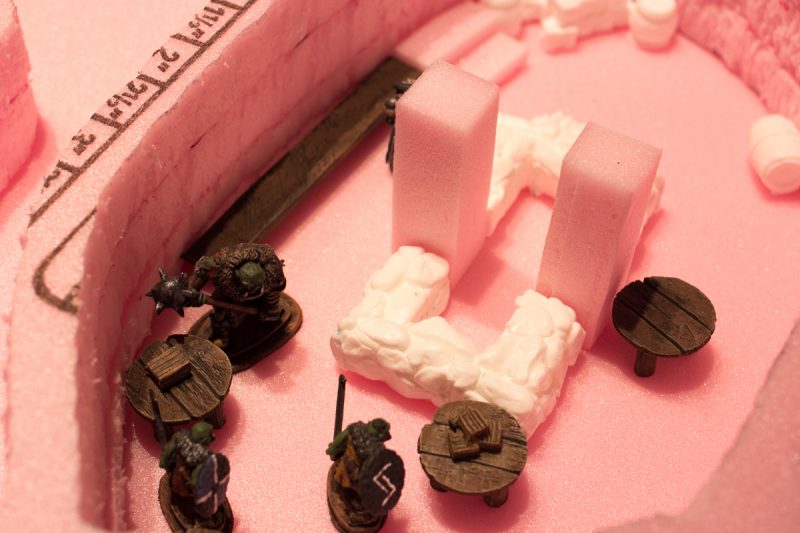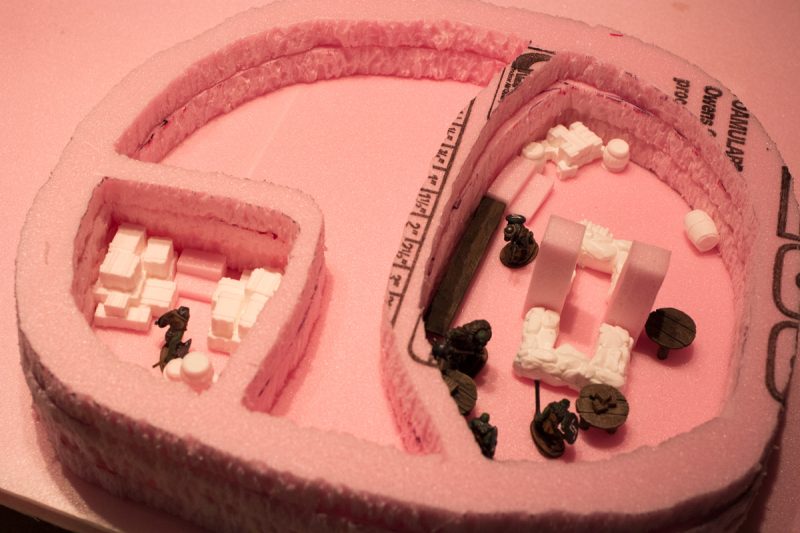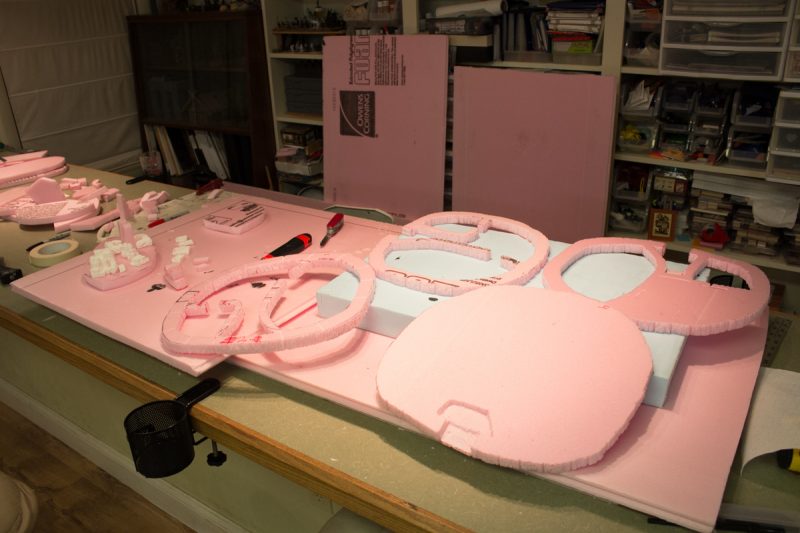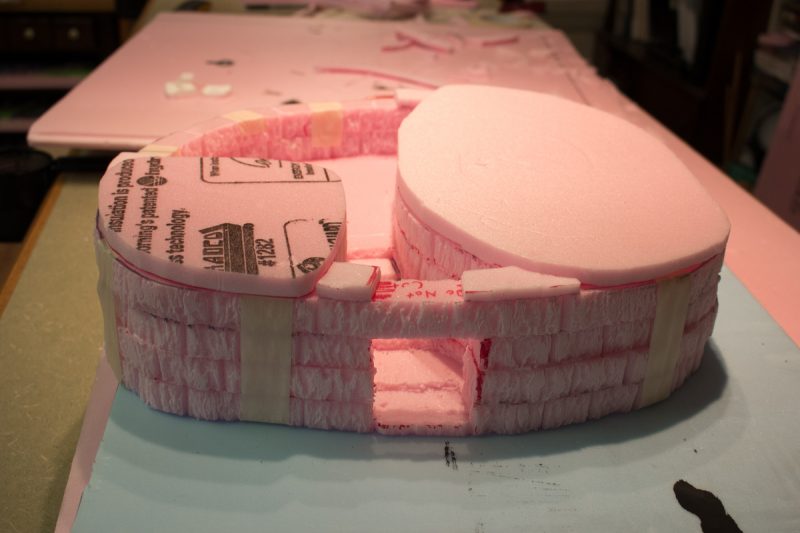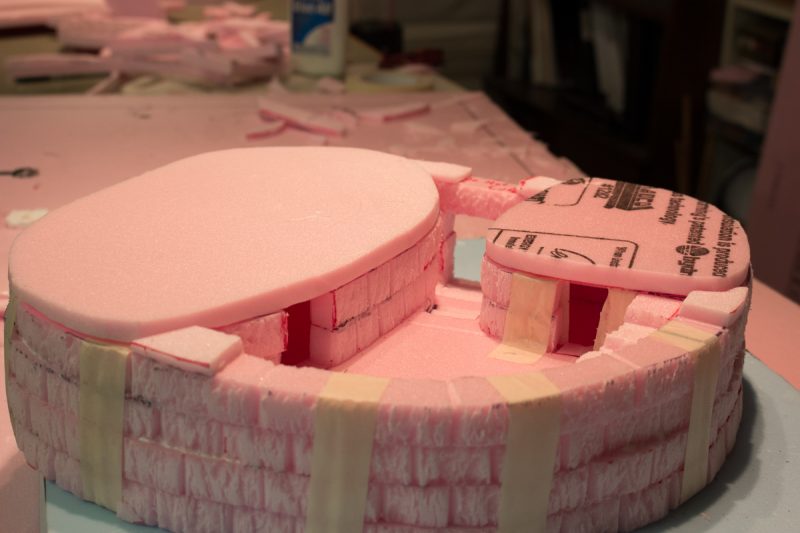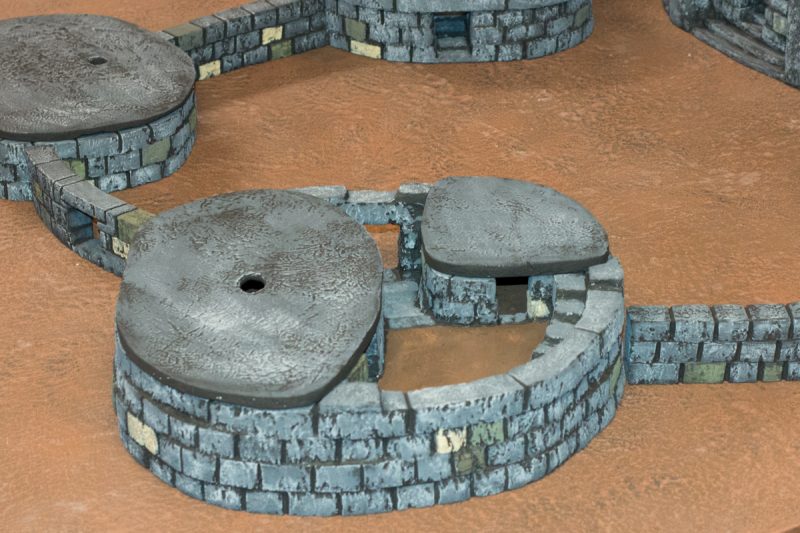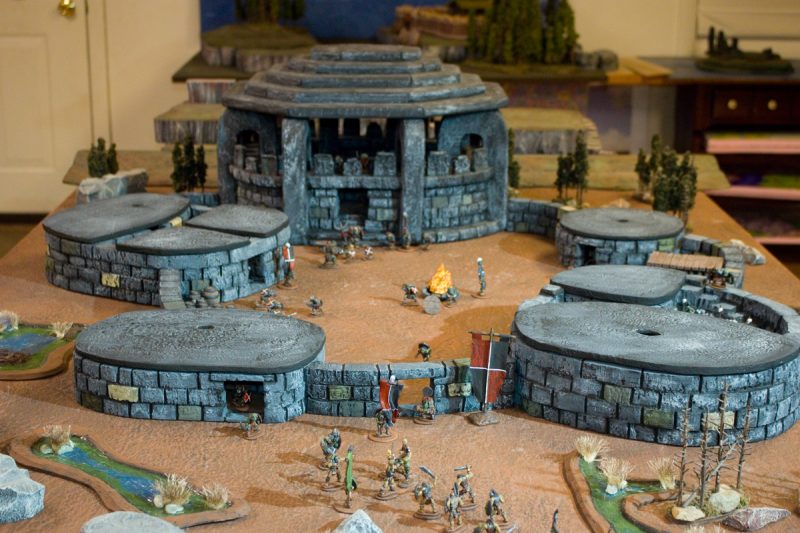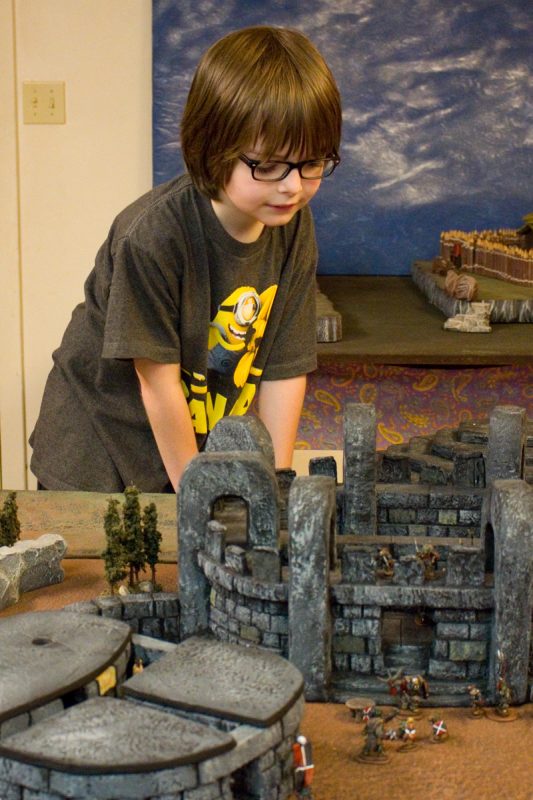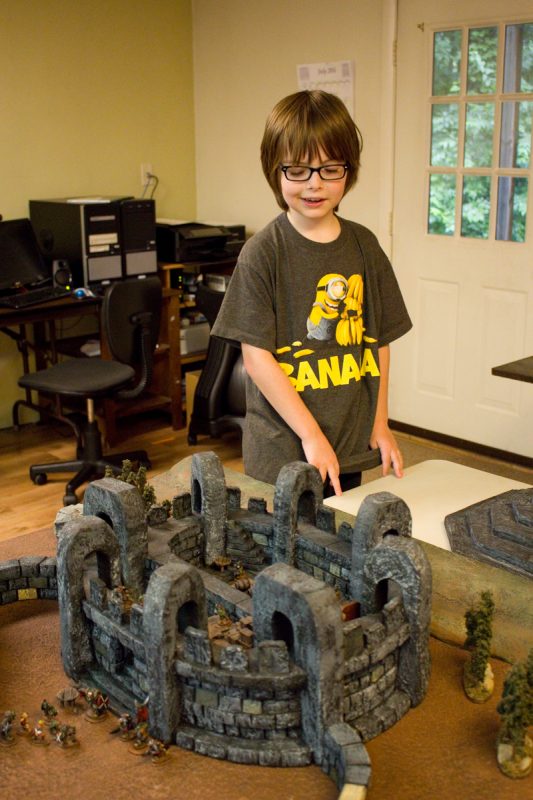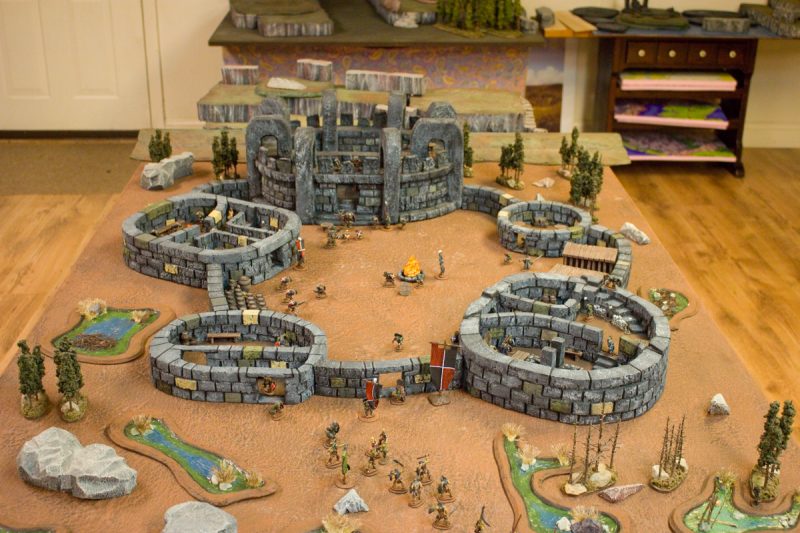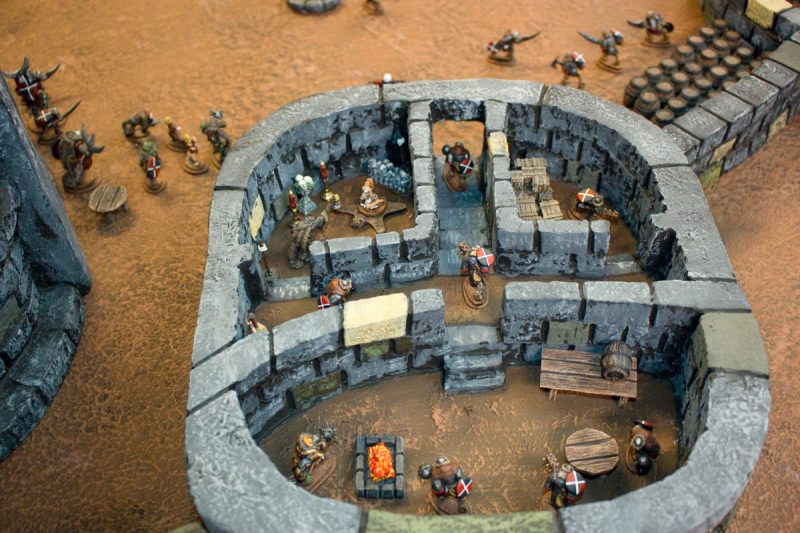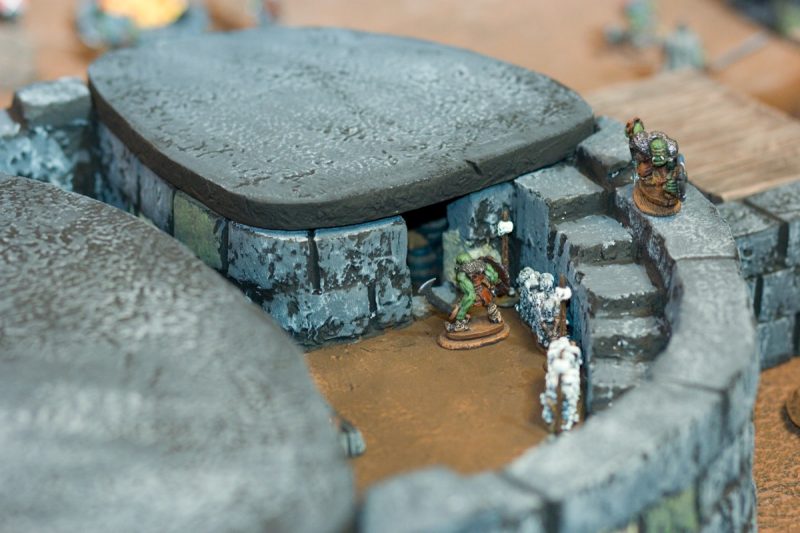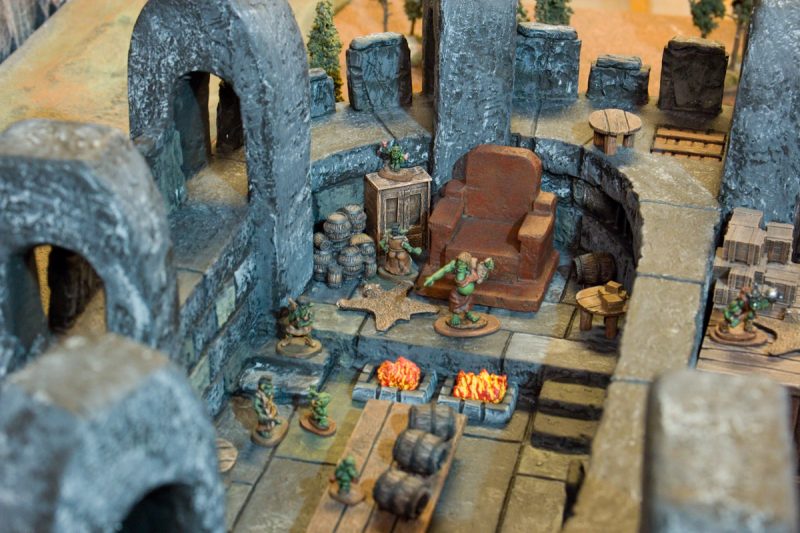As a young urog Lock suffered the razing of her village at the hands of rebellious Vangen Orcs. She proved herself in that battle and so Lock was taken in by a marauding Kromgaard urog named Grushnag. In time Grushnag grew fond of Lock and showed her much favor. This brought envy from the others in the tribe, especially from Grushnag’s eldest son Vlorg. Recently Lock has seen her able Hertog Grushnag fall under the spell of an orc shaman named Velizar. This shaman is Vangen but his majiks are too much for Hertog Grushnag to overcome.
The shaman Velizar had commanded Hertog Grushnag to hunt down and kill a troublesome Kromgaard orc shaman named Kluzga. Wary of Kluzga’s death curse and other potent majiks, Hertog Grushnag ordered Lock and Vlorg to attack the shaman. They each took their own group of five warriors and competed for the honor of the kill.
Lock charged forward and was the first to reach the shaman Kluzga. She slew Kluzga and took his head as a trophy.
………………………
Meanwhile to the south outside of King Valden’s capital city of Kednvald, the scrawny orcling Voshob survived by learning to gather the valuable herbs in the nearby wilderness.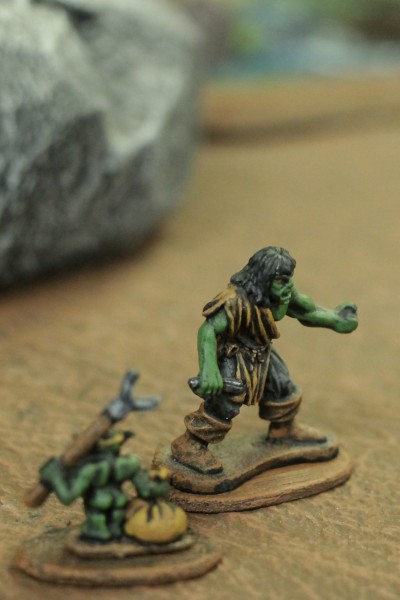
The natural materials were sought after by the wealthy and powerful League of Nil-ith Horn alchemists living in Kednvald. In trade for these herbs, Voshob was taught some alchemy, numbers and letters by the foreign orcs.
Timor Zungath, the “Terror Reed” of the swamp Sharog Mokal, produced a potent resin which could be used by sorcerors to see far and wide. It was a powerful drug, highly valued for its hallucinagenic qualities. Sent to harvest these Timor Zungath resins, Voshob traveled north with Graf Trolgar and his Vangen patrol unit. The patrol was to cross Kednvald Bridge and keep safe the road through the swamp of Sharog Mokal (Ondskap Mere to the Gautrians) for King Valden’s troops.
At Kednvald bridge the League of Nil-ith Horn forces stationed there and Graf Trolgar’s Vangen patrol wrangled over logistics. A cumbersome caravan of supplies for Valden’s army in the north lumbered slowly over the bridge. Slaves and laborers worked through the driving rain blocking Graf Trolgar and his Vangen orcs from crossing.
The furious Graf was put into his place by Tulgan, a League of Nil-ith Horn dubsar. Tulgan was emboldened by the presence of Bozar, the urog hertog of Kednvald bridge. An angry Graf Trolgar was ordered to make camp beneath the tower and told to wait until morning for his turn to cross the bridge.
………………………
Since it was Lock who slew the treacherous orc shaman Kluzga, it was she that Shaman Velizar summoned into Kormak Hold. Many strange orcs and the severed head of the shaman Kluzga were gathered by the shaman Velizar.
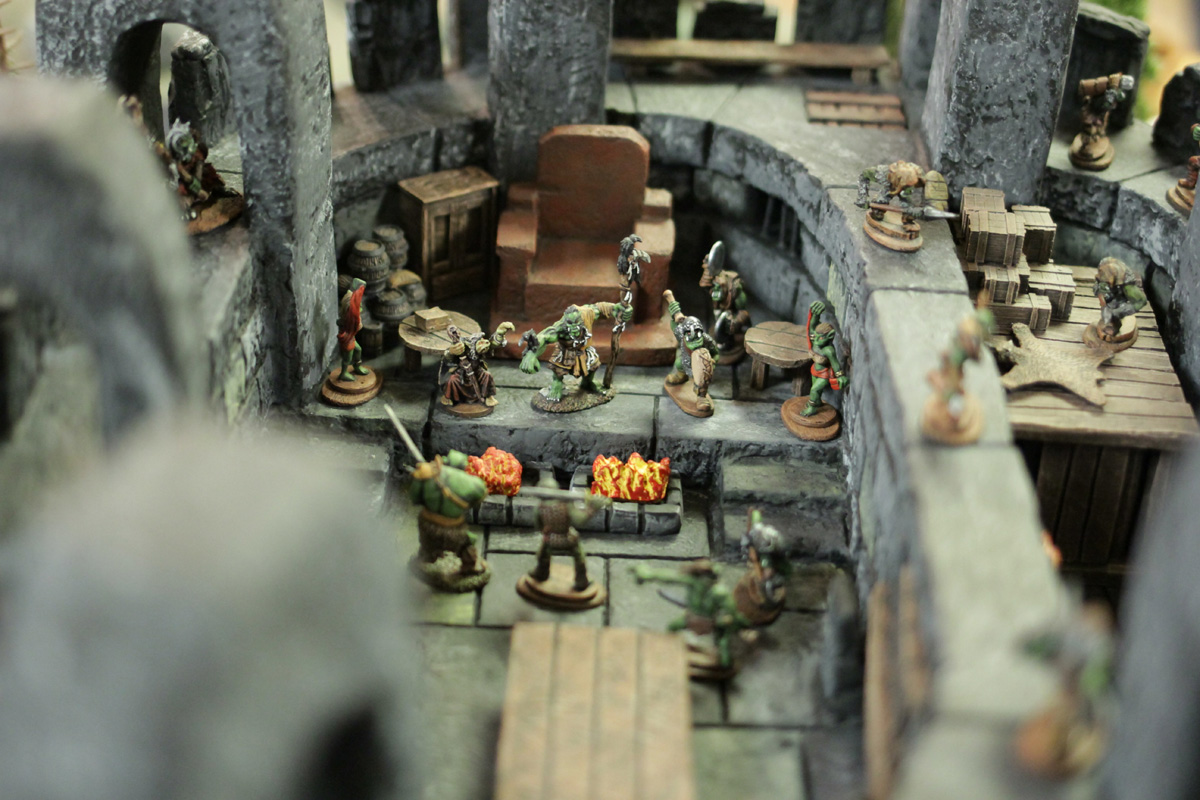 Velizar filled the air with smoke from the Timor Zungath resin. Lock was bidden inhale the vapors.
Velizar filled the air with smoke from the Timor Zungath resin. Lock was bidden inhale the vapors.
The zungath drug allowed Lock to fly about the high mountain peaks, where she saw the reach of the Vangen lands, and the great armies of men and orcs on the march. When Lock awoke she had a new understanding of the scope of the Vangen Wars, how they would change the future of her tribe, and a deep devotion to the cause of Velizar.
………………………
That night at Kednvald Bridge, one of Graf Trolgar’s Vangen warriors slipped out of camp for a secretive rendezvous with Hertog Bozar.
The two Vangens, orc and urog, spoke near the river’s edge so the rushing waters might drown them out. However the sly Voshob followed and eavesdropped, and he heard the Vangen orc from his own party speak to the urog of orders from “our master”. The urog in command of the bridge was told to delay King Valden’s League of Nil-ith Horn relief force when it arrived from Kednvald.
“Keep those half-orc dogs on the southern side of Skarken River any way you can, until men in wolf skins come to burn this bridge.” said the orc. Hertog Bozar nodded agreement and the two parted ways without ever noticing the spying Voshob.
………………………
The next morning Graf Trolgar and Hertog Grushnag were both on their way to the great swamp of Sharog Mokal. Not far from the bridge, while Voshob gathered herbs, Hertog Grushnag and his Kromgaard warriors easily tracked down their target, Graf Trolgar and his patrol.
Voshob saw signs of the Kromgaards and unobtrusively slipped away to spy on them. Hertog Grushnag waited until Graf Trolgar’s unit had camped for the evening.
The Vangens were thrown into turmoil as Lock and the other Kromgaard warriors attacked. No organizing orders came from Graf Trolgar’s command tent. Voshob watched Hertog Grushnag’s Kromgaards slay every orc in the encampment.
As they gathered the bodies afterward, Voshob was keen enough to notice the Graf’s corpse had its throat slit, and the orc which Voshob had spied upon at Kednvald Bridge was not among the slain.
Voshob heard howls in the distance and the Kromgaards hid.
Men of Gautria clad in wolfskins raced by, unmolested by the orcs. Soon there was a glow over the flats of the swamp as Kednvald Bridge burned above Skarken River.
~~~~~~~~~~~~~~~ The End, for now… ~~~~~~~~~~~~~~~
See the Gautrian’s side of the story as Jarl Kvig Melgarson leads his men on their dangerous mission in Sagas of the Gautrian Kings #37- Kednvald Bridge
